DEPARTMENT OF AGRICULTURE






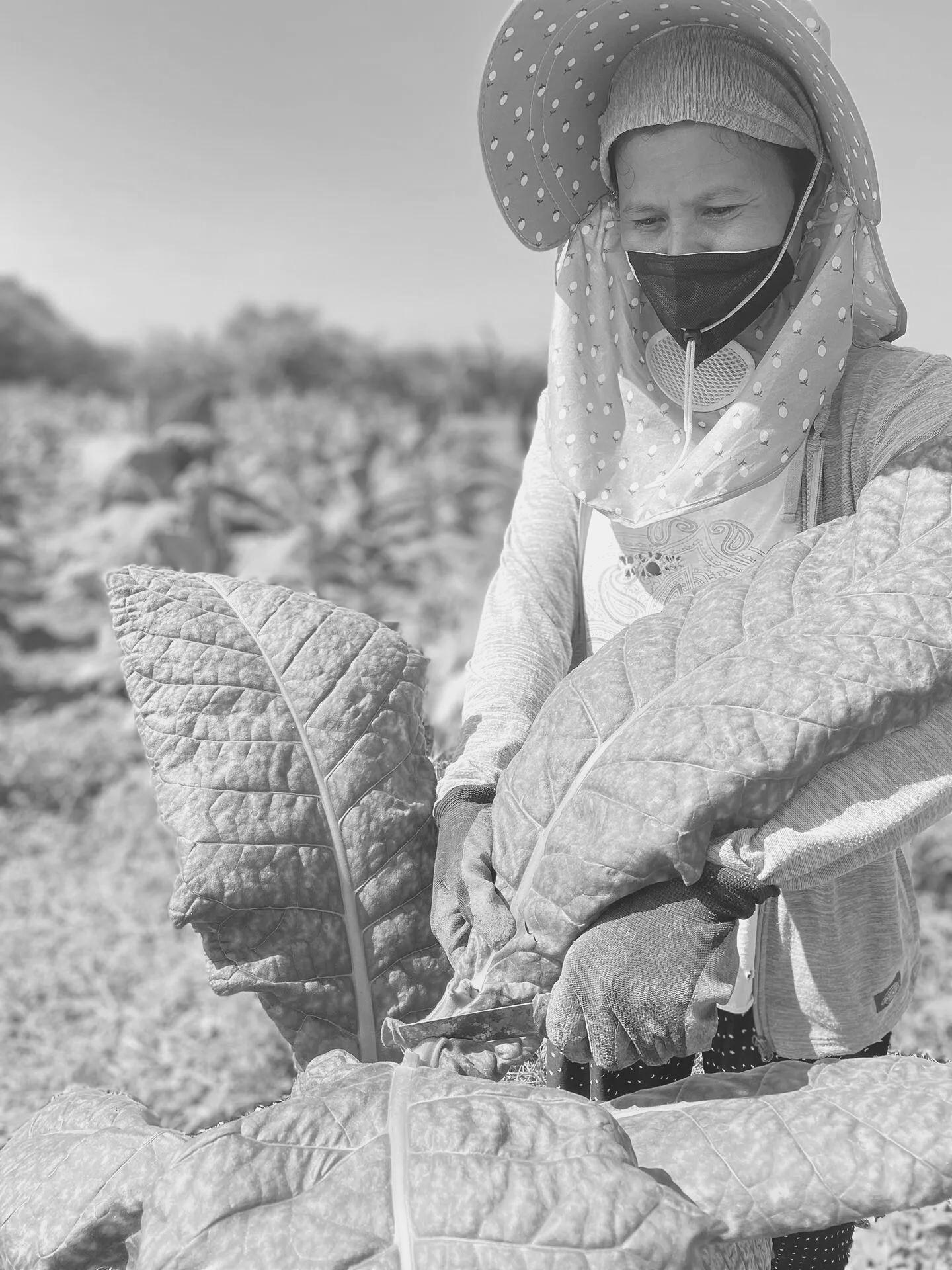
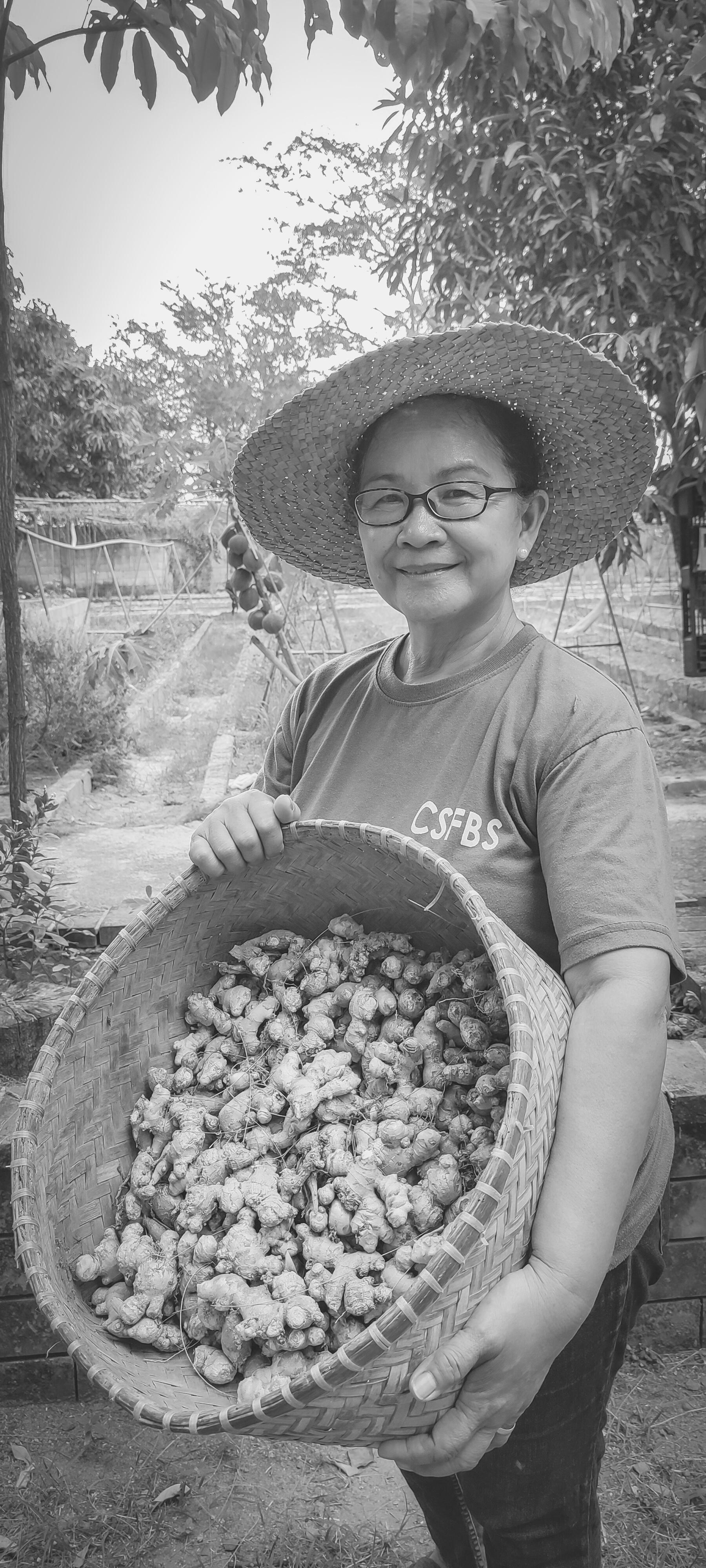

Also, we continue to study ways to increase the participation of farmers and fisherfolk in the creation of more relevant development policies In research, our efforts included the development of new technologies to improve yields, livestock varieties, reduce costs, and increase sustainability and environmental safety We have likewise increased our efforts to encourage the tech-savvy Filipino youth to participate in farm and fishery enterprises
A development strategy built on longrun investments will not bear fruit overnight But we are already seeing signs that our policy initiatives are beginning to pay off
I am pleased to transmit this report on the nation’s achievements in agriculture and fisheries during fiscal year 2021. The activities of the Department of Agriculture (DA) involve numerous contributing bureaus and attached agencies, as this report reflects, and the results of their ongoing operations and research affect the nation as a whole in a variety of ways.
Being a particularly challenging year, FY 2021 brought many important changes in the DA’s development efforts. These included emergency measures to mitigate the consequences of the COVID-19 pandemic and a series of super typhoons.
I also ordered a restructuring of the “OneDA Reform Agenda” to reduce costs while retaining capability and maintaining the program's original commitments To this end, the agenda is now based on a more flexible concept that allows reforms and strengthening whenever necessary However, this new design draws heavily on our previous strategy by retaining its main policy objectives: the consolidation, modernization, industrialization, and professionalization of Philippine agriculture and fisheries
A development strategy built on long-run investments will not bear fruit overnight. But we are already seeing signs that our policy initiatives are beginning to pay off. Prospects for sustained growth for the agriculture and fisheries sector look far brighter now than they did a year ago. We saw production increase steadily over the course of 2021 and rural economic expansion has continued into 2022. Consumer spending should remain healthy because of continued gains in employment and output, and investment spending should remain strong because of favorable interest rates and increasing levels of demand.
Our agricultural economy is strong and growing stronger. I believe that, with more public and private investments, we can create the foundations for an even stronger national food security and more prosperous, climate-resilient and empowered Filipino countryside in the months and years ahead
 WILLIAM D. DAR, Ph.D. Secretary
WILLIAM D. DAR, Ph.D. Secretary

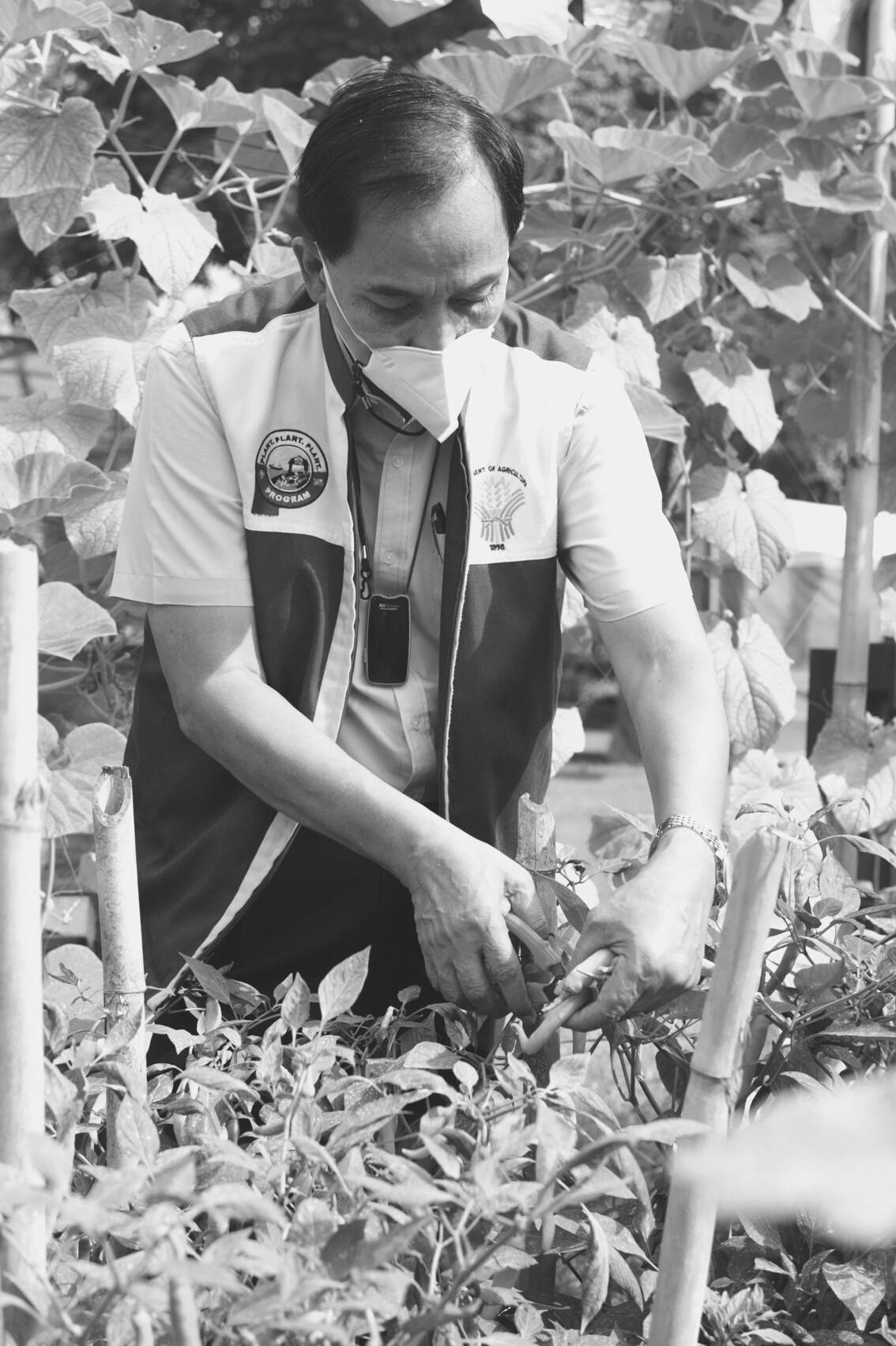
The period covered by this report was a significant year for Philippine agriculture. The combined effects of mounting disruptions brought on by the ongoing pandemic, animal disease outbreaks, extreme weather conditions, and the steep rise in the cost of agricultural inputs, nearly overwhelmed the country’s agrifishery sector. The same was true for the enterprises along the food value chain.

Supported by the Bayanihan to Heal as One Act (Republic Act 11494), the Department of Agriculture (DA) responded to this challenge with a set of emergency programs that reengineered and reinvigorated our flagship program, the OneDA Reform Agenda. Our responses included among others, the first-ever nationwide initiative dubbed the Plant, Plant, Plant Program designed to ensure sustained food production and availability, food accessibility and affordability amidst the threats of COVID-19 and other challenges. A total of Php24 billion was allocated for the Plant, Plant, Plant Program to carry out productivity and income enhancement measures and social protection and amelioration projects, where some 3 15 million individual and 4,661 group beneficiaries received various assistance

These included the introduction of innovative strategies for food production, transport and distribution; the use of information and communications technologies (ICTs); implementation of programs to ensure diversity; and the promotion of inclusive governance
Other special operations were comprised of initiatives to expand urban agriculture; and special programs to widen the access of smallscale producers, small and medium enterprises and vulnerable households to inputs, capital, modern technologies, and business tools.
The DA likewise carried out interventions to mitigate the impact of greenhouse effect and contain outbreaks of animal diseases. Our efforts ranged from the repopulation of the country’s hog stocks during the height of the African Swine Fever epidemic and the issuance of loans and other support services for farmers affected by typhoons and flooding.

In a related area, the DA intensified its efforts behind the OneDA Reform Agenda. The agenda provided producers of rice, corn, cassava, livestock and poultry, coconut, high value crops, and fisheries with increased support and easy access to the country’s markets while complementing our on-going agriculture reform program.
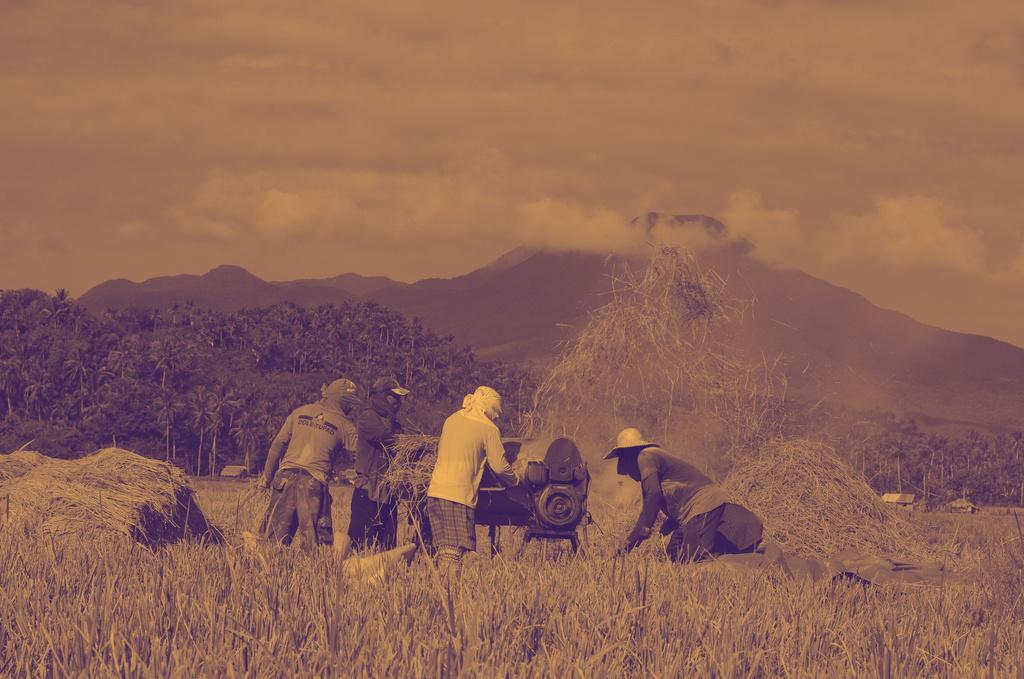
In addition, the agency continued to help farmers and fisherfolk to organize themselves into clusters, thereby allowing them the opportunity to pool their resources and ensure more precise government support and investments in their respective industries and communities
The DA recognizes that the availability of critical infrastructure and improving the level of mechanization in farming and fishing are vital in
The DA successfully distributed a total of 7,385 production-related and 28,302 postharvest machinery and equipment even as we provided farmers and fishers with 5,614 production facilities and 121 postharvest facilities from January to December 2021 In all, some 9,784 groups and 12 individuals benefited from the provision of agri-fishery machinery, equipment & facilities nationwide during the year in review The Department also continued working and planning on nearly a thousand kilometers of farm-to-market roads
In research, activities included work on the generation of better seed varieties and advanced genetic technology for the production of better livestock breeds, and technologies designed to ensure better efficiency in the dayto-day work of Philippine food producers.
On credit facilitation, the DA has delivered loans totaling P3.61 billion to 88,189 small farmers and fisherfolk and 194 micro and small enterprises and farmers and fisherfolk organizations. This was made possible through the Agricultural Credit Policy Council’s various credit programs, namely the Survival and Recovery (SURE) Loan Assistance Program; Expanded SURE Aid and Recovery Project (SURE COVID-19); AgriNegosyo (ANYO) Loan Program; ANYO Swine Repopulation, Rehabilitation and Recovery (Swine R3); ANYO Loan Program for Overseas Filipino Workers (ANYO-OFW) and ANYO Agri-Pinay for women in agriculture; Agricultural Value Chain Financing Support and Capacity Building thru Entrepreneurship and Organizational Development (Project ASCEnD); and the Kapital Access for Young Agripreneurs (KAYA) credit facility.
The Philippine Crop Insurance Corporation (PCIC), the government’s lead agricultural insurer, was able to provide 3,179,652 farmers and fisherfolk with insurance coverage amounting to P103.47 billion, allowing them to recover faster from disasters and other risks that affected their farms and livelihood.
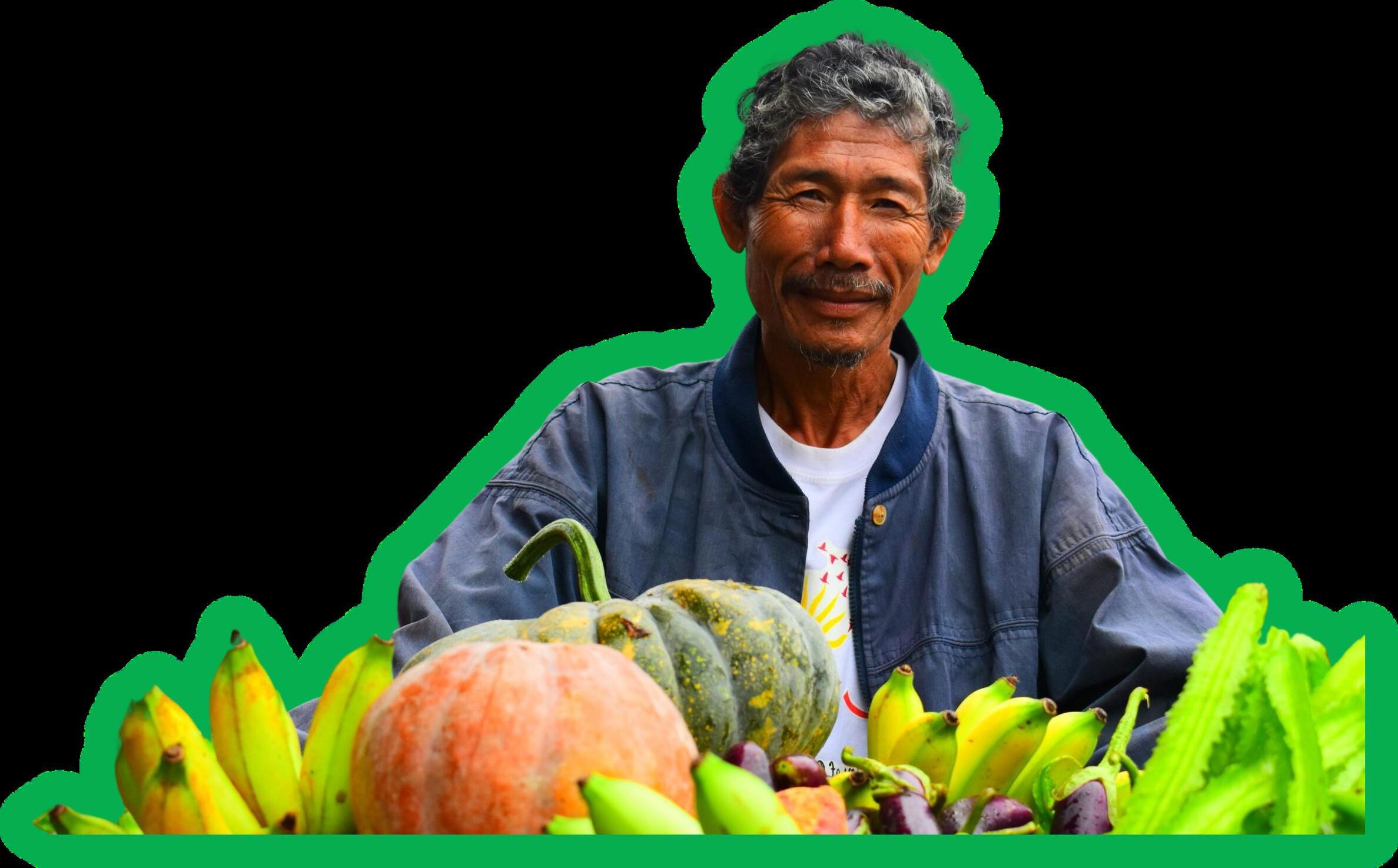
Collectively, these achievements opened new opportunities for farmers and fisherfolk, and encouraged as well as protected private and public investments in the country’s food and agriculture value chain They also gave rural entrepreneurs opportunities on the same basis as entrepreneurs in our urban areas during a time of national emergency
Performance-wise, it is worth noting that Philippine agriculture slightly recovered from the 1 2-percent drop in output in 2020 as it contracted by 0 3% during the year in review on the back of 1 4% growth in the last quarter Record harvests were recorded in both palay and corn, with palay farmers attaining 19 96 million metric tons of harvest equivalent to 92percent sufficiency and corn at 8.3 million metric tons.
Agri-fishery exports also posted positive growth, as it reached USD 5.22 billion from January to December 2021, representing a 9.1-percent expansion from the previous year.
All told, 2021 was a very noteworthy and encouraging year for the DA and its OneDA Reform Agenda. The agency’s efforts to guarantee the Filipino public wide access to food during the height of pandemic contributed significantly to ensuring the agriculture and fishery sector’s resilience and technical knowledge, as well as to international cooperation, a healthier environment, and a more competitive economy.

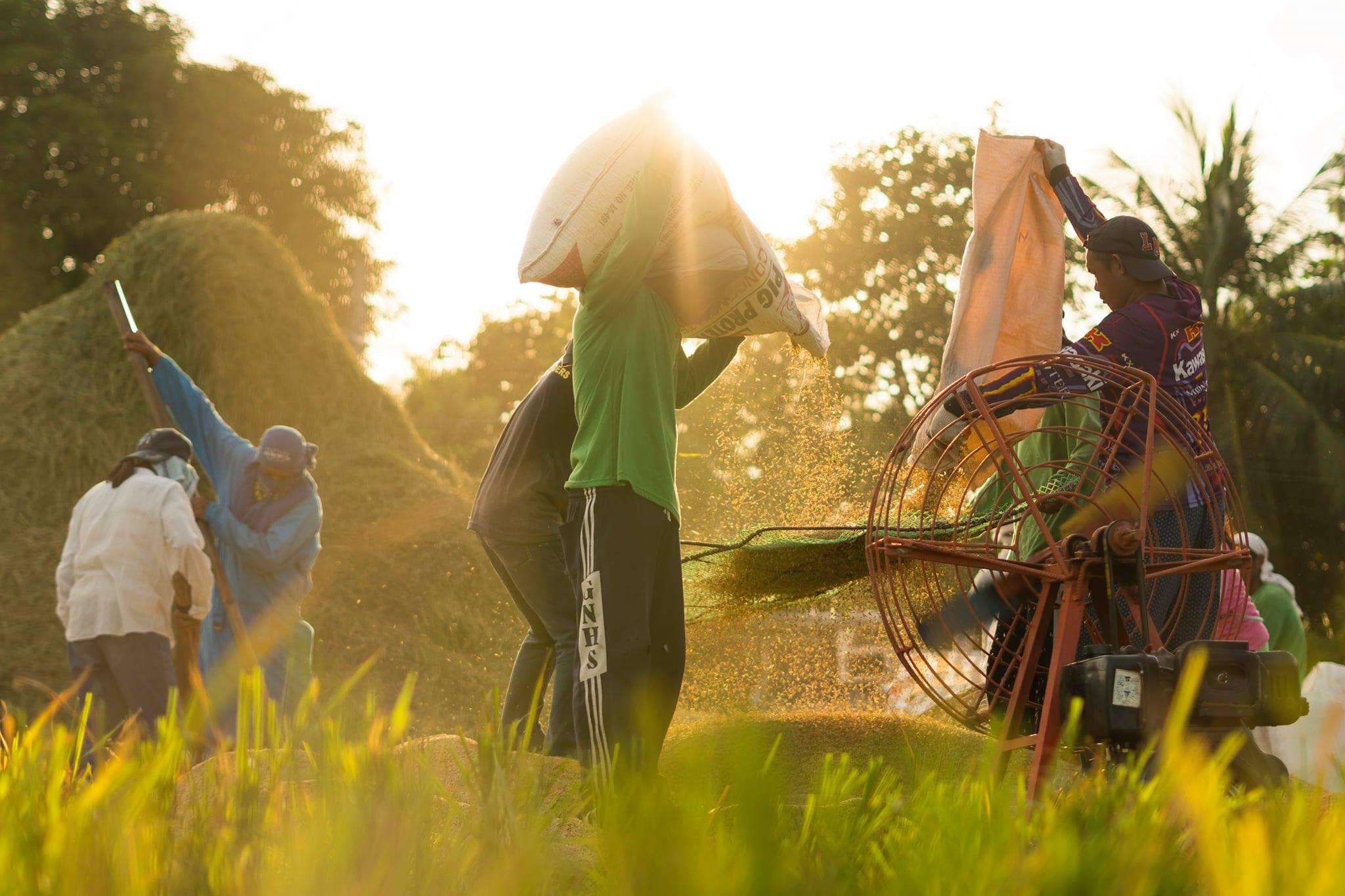
The coronavirus disease (COVID-19) pandemic has inflicted an unprecedented toll on the people, society, and economies worldwide. It has evolved from being a health concern into a multi-dimensional crisis with serious economic and social implications that threaten to push hundreds of millions of people around the world into hunger and poverty. The pandemic erupted at a time when food security and global food systems were already under strain. Natural disasters, climate change, and pest and disease outbreaks preceded COVID-19 and were already undermining food security in many contexts
According to the Food and Agriculture Organization of the United Nations (FAO), although agri-food production and supply chains have historically been vulnerable to shocks and are under growing pressure from long-term stress due to the climate crisis and environmental degradation, the COVID-19 pandemic is exceptional in that it has shown how a shock of global proportions can occur suddenly, spread rapidly and compromise the food security, nutrition status and livelihoods of billions of people to an unprecedented degree and over a long period
In the Philippines, COVID-19 has had devastating health, social, and economic impacts The imposition of countermeasures such as quarantines and other restrictions came with costly socio-economic repercussions that affected the functioning of agricultural and food systems
In a report entitled "Transforming Philippine Agriculture During COVID-19 and Beyond," the World Bank highlighted that although the government was quick to treat food production and marketing as essential sectors or activities, the sector was not spared from various disruptions that were felt both from the supply and demand side due to the restricted movements of people and goods to contain the spread of COVID-19.
On the supply side, local farmers experienced difficulty in acquiring farm inputs, shortage in labor, diminished capacities of agri-fishery facilities, lack of financing, bottlenecks in transport and logistics, and lack of assured market for their produce, among others The longer-lasting effects of COVID-19 were felt on the demand side Consumers were reluctant to visit markets, which affected the consumption of food Moreover, the widespread loss of income and employment exacerbated the country’s already unstable food security and nutrition situation
Despite all these challenges, the World Bank study states that the Philippines mostly succeeded in sustaining functional food supply chains. This World Bank report attributes this to the Department’s immediate responses to the COVID-19 pandemic, which included the approval of the Food Security Development Framework endorsed by the Task Group on Food Security (TGFS). The said framework outlined the national government’s immediate action points and ‘rebound’ mechanisms and enhanced inter-agency resource complementation and coordination; the issuance of policies for operational continuity and issuance of food passes; and
the enforcement of suggested retail price (SRP) schemes and price freezes, among others Confronted by a rapidly evolving crisis, these initial measures became integral to the development and rollout of more comprehensive initiatives to ensure sustained food production and availability, food accessibility, and affordability despite the threat of COVID-19 These initiatives included the Plant, Plant, Plant Program, as well as the implementation of programs under RA 11469 or the Bayanihan to Heal as One Act and RA 11494 or the Bayanihan to Recover as One Act
In 2020, the first year of the pandemic, the Philippine economy recorded its worst annual contraction since 1946, at -9 5% On the other hand, the agri-fishery sector, which faced and eventually weathered that year’s “perfect storm,” registered a rather minor downtick of 0.2%. The “perfect storm” refers to the successive catastrophes that hit the country in 2020, including the eruption of Taal Volcano in January, the continued incursion of African Swine Fever (ASF) among our hog population, and the devastating typhoons at the latter part of the year. The industry and service sectors meanwhile suffered far worse contractions.
In 2021, the Philippine economy finished strong with a 5 6-percent full-year GDP growth The economy’s traditional growth drivers the industry and services sectors recovered from the significant declines of the previous year and grew by 8 2% and 5 3%, respectively The agriculture sector, however, contracted by 0 3% despite seeing a 1 4% growth in the last quarter This was primarily due to the continued challenges brought on by the ASF, as well as the destruction caused by a series of super typhoons, which significantly affected agricultural production
Through all these, the Philippine agriculture sector continued to demonstrate strength and resilience As the Department’s combined efforts against the ASF outbreak gained headway, the agency shifted its focus on reversing the livestock subsector's double-digit decline, which had lingered since mid-2019, and continues to dampen the sector’s aggregate output today. With the breakthrough performance of the crops subsector, especially in rice and corn, as well as the steady contributions of the poultry and fisheries subsectors, the agriculture sector is now charting a more confident path to economic recovery and growth.
Performance of the agri-fishery sector. The Philippine economy ended the year 2021 on a high note as it posted a 7.7-percent growth in Gross Domestic Product (GDP) during the last quarter, bringing the national economy’s fullyear growth to 5.6%. This was despite the challenges brought on by the continued persistence of COVID-19 with a surge of new variants, various levels of quarantines, and the prevalence of natural disasters Economic experts see this as an indication that the country’s economy is on a path to recovery and is primed to break out This is the result of the government’s recalibrated pandemic response strategies and efforts toward the safe reopening of the economy, allowing more sectors to operate and provide more Filipinos with job opportunities
While the agriculture sector’s output may have been less than expected, the prospects for the sector’s full recovery and sustained growth remain strong as evidenced by the steady and positive performances of the crops, poultry and fisheries subsectors during the last quarter of 2021
The crops subsector, which contributed 52 7% to the total agricultural Gross Value Added (GVA) figure, registered a full-year growth of 2 2%, bannered by record high production of rice and corn Amid the COVID-19 pandemic, mobility restrictions, and losses due to Typhoon Odette in December 2021, the sector’s total annual palay production registered an all-time high of 19 96 million metric tons (MMT), 3 4% more than its previous record of 19.29 MMT.
Corn production also hit a record output of 8.3 MMT in 2021, 2.2% more than the 8.12 MMT harvest in 2020. Increased production in major high value and industrial crops also contributed to the positive performance of the crops subsector, including cacao (8.4%), sugarcane (8.0%), pineapple (4.8%), coffee (1.4%), coconut (1.1%), banana (0.9%), rubber (0.5%), and mango (0.2%).
The fishery subsector, which contributed 12.6% to the total agricultural GVA, grew by 1.4% during the fourth quarter and produced a modest 0.2% full-year growth in 2021. Major fishery commodities such as bangus (6.0%) and tilapia (11.7%) registered increases in production volume, despite a generally declining performance, particularly in commercial fisheries and aquaculture.
Although the poultry subsector grew from the second until the fourth quarter of 2021, this was not enough to offset the 7.5% decline recorded during the opening quarter of the year. Full-year GVA contracted by 0.3% primarily due to declining chicken, and duck and duck egg production. On the other hand, chicken egg production registered a growth rate of 9.2%. The poultry subsector accounted for 9.9% of the agri-fishery sector's aggregate output in 2021.
Lastly, the livestock subsector, which contributed 10.1% to total agricultural GVA, contracted again by 17.3% in 2021, held down
At Constant 2018 Prices (in million PhP and percent; excluding forestry and logging)
Source: PSA (as of January 2022)
NOTE: Numbers may not add up due to rounding.
*Including other animal production
by the hog subsector which dipped by 20 8% in terms of volume of production due to ASF. But due to the recalibrated strategies for the management and control of the disease, as well as the Department’s intensified hog repopulation program, contraction in the livestock subsector output was held to just 9 7% in the fourth quarter, from 23 4% in the first quarter of 2021 Despite the decrease in hog production, other livestock commodities like cattle (3.0%), carabao (7.4%), and goat (1.8%) registered respective increases in production volume.
Agricultural Foreign Trade. The country’s cumulative export earnings from January to December 2021 amounted to USD 74.64 billion, a 14.5% increase from the export value earned for the same period in 2020. Meanwhile, the total value of exported agro-based products from January to December 2021 amounted to USD 5 22 billion, representing a 7 0% share of the country’s total exports and a 9 1% increase from the export value recorded from January to December 2020.
Various countries around the world implemented a number of policy measures to prevent the spread of COVID-19 which affected global agricultural production and trade Amidst the health crisis and movement restrictions imposed by trade partners, the export of coconut products, sugar, processed pineapple products (canned pineapples, juice, and
concentrates), fresh and preserved fishery products, abaca fibers, coffee, tobacco, and natural rubber still took an upward trajectory.
Notably, the export of coconut products hit a four-year high in 2021. The country’s exports of coconut products expanded by 58 7% reaching nearly $2 billion from $1 23 billion in 2020 PSA data indicated that coconut oil led all coconut products in terms of total export value in 2021 at $1.443 billion, which was 60.6% higher than the $899 million recorded in 2020. Aside from coconut oil, the year-on-year export value of other coconut-based products, such as desiccated coconut and copra meal, also posted double-digit growth rates
Based on the latest report from the PSA, the leading destinations for Philippine agricultural exports are Japan, China, USA, South Korea, and The Netherlands. The aggregate value of exports to these five (5) countries accounts for about 48% of the country’s total agricultural export earnings in 2020
As of December 2021, the country’s total imports amounted to USD 117.78 billion and increased by 31.1%. Similarly, expenditure on the import of dairy products (5.9%), food and live animals (29.2%), fish (24.9%), fruits and vegetables (10 3%), and fertilizer (20 4%) also increased On the other hand, the value of raw corn imports significantly decreased by 46% from January to December 2021.
Based on the latest report from the PSA, the country maintained a negative agricultural trade balance with a deficit of USD 7 32 billion While it recorded an agricultural trade surplus with Japan, it continued to record trade deficits with the other major trading partners such as Australia, USA, ASEAN countries, and the European Union.

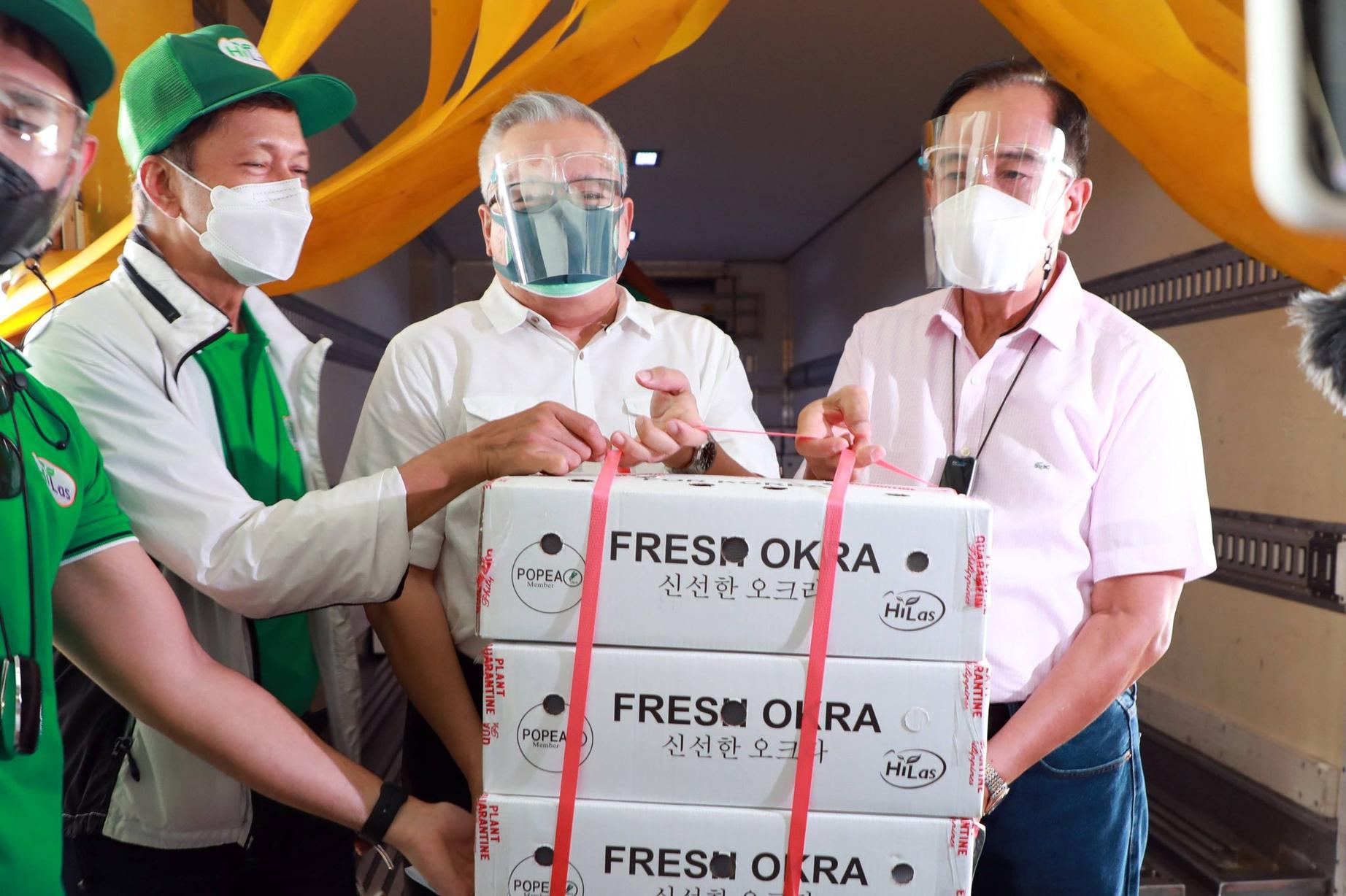
as of December 2020 (in million USD)
Source: PSA 2021 Selected Statistics on Agriculture

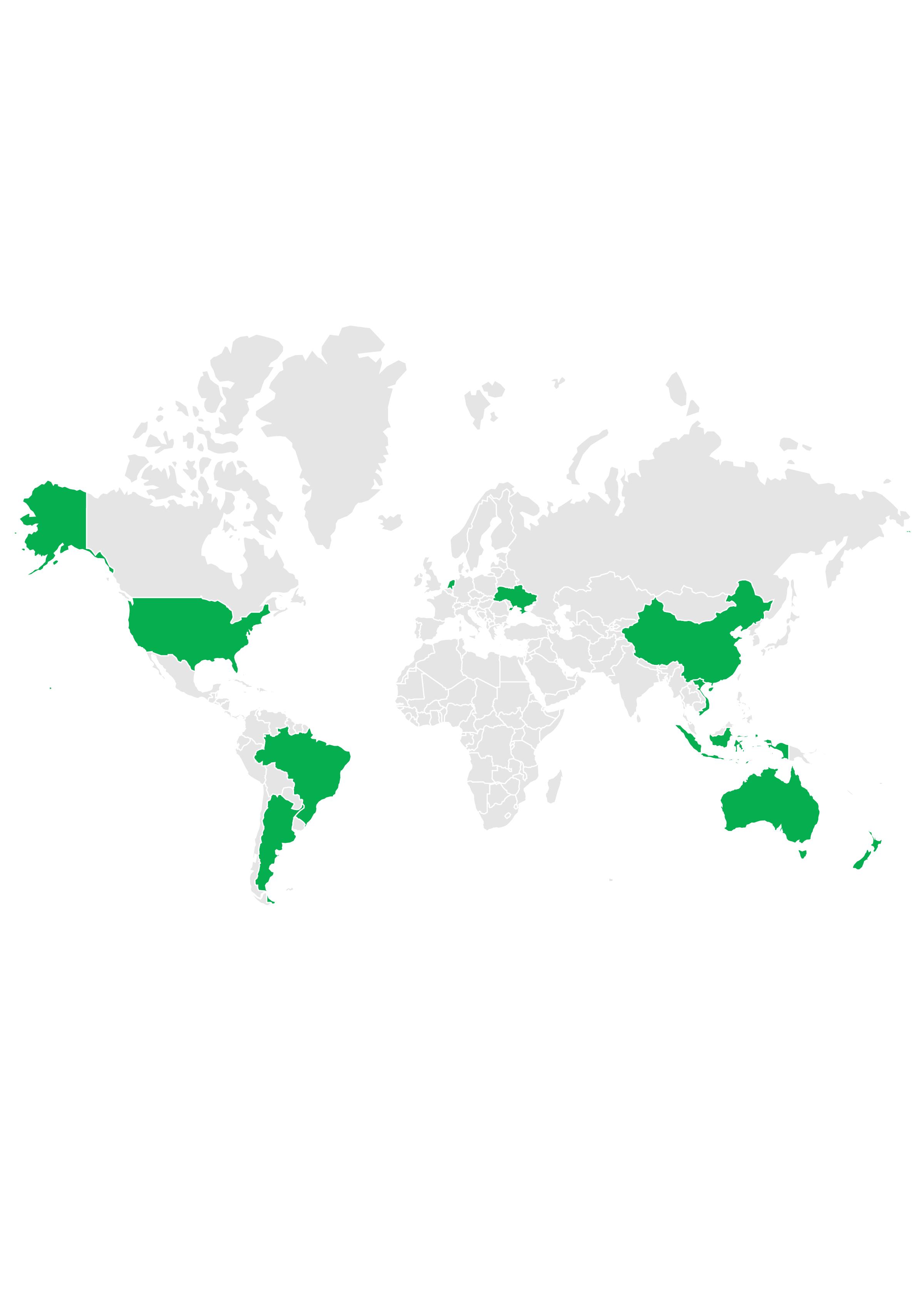

asofDecember2020(FOBinmillionUSD) | Source:PSA2021SelectedStatisticsonAgriculture
asofDecember2020(CIFinmillionUSD) | Source:PSA2021SelectedStatisticsonAgriculture
Achieving Food Security. The Department remains committed to ensuring that every Filipino family has access to adequate food The country tallied an 8 3-point increase in the 2021 edition of the Global Food Security Index (GFSI), climbing back to the 64th spot. This reverses the 5.3-point decline in the country’s GFSI score, which pulled the country’s rank nine (9) notches down in 2020. This downward trend, however, was seen across all regions and nations, in all the different income tiers, because of the COVID-19 pandemic and increased climate variability
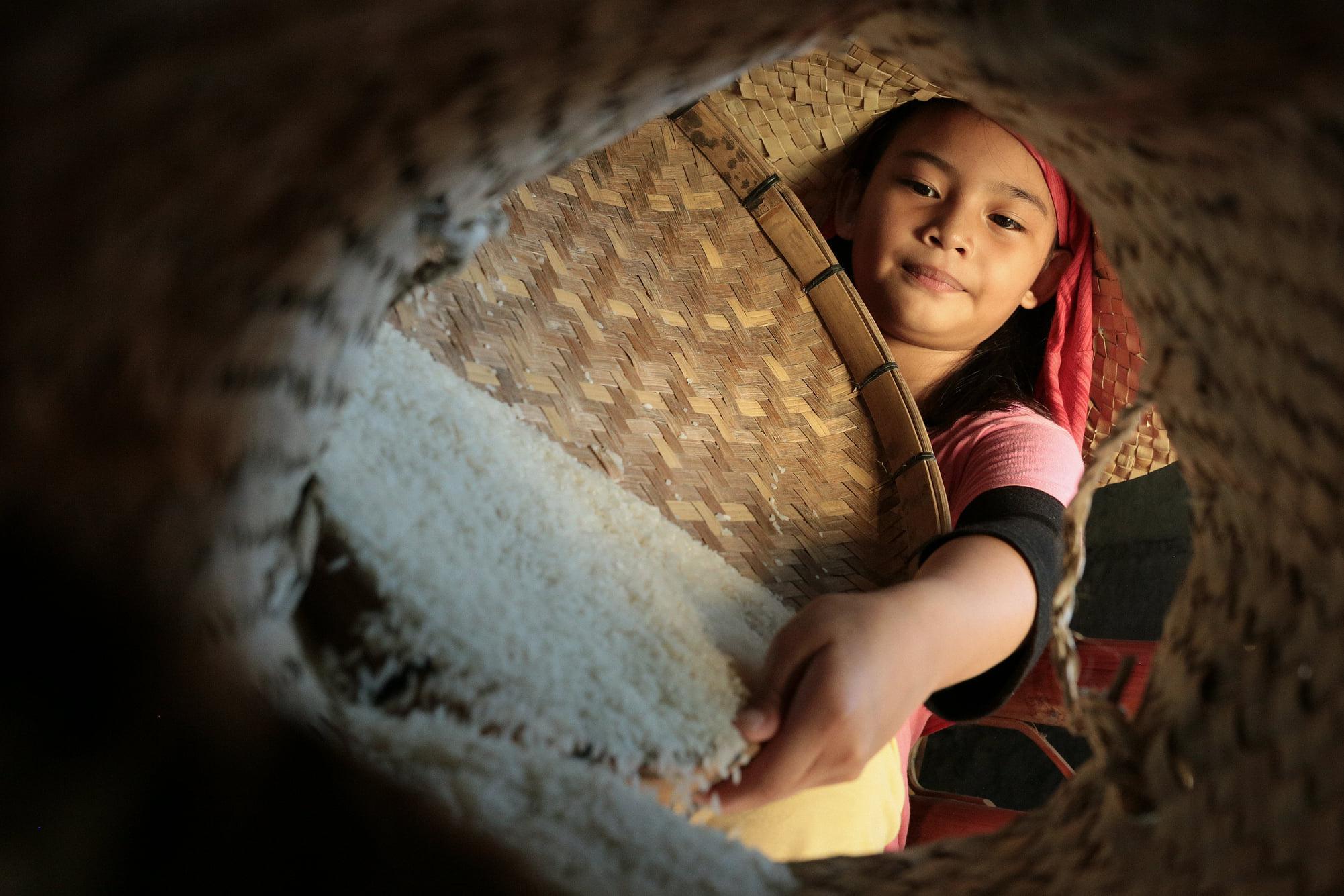
The country also ranked 12th among 23 countries in the Asia Pacific region, ahead of India, Indonesia, Myanmar, Cambodia, and Laos Of the four (4) dimensions measured by the Index, the Philippines scored the highest in affordability (74 3) followed by quality and safety (61 5), availability (53 9), and natural resources and resilience (43.6).
Source: The Economist Intelligence Unit (EIU)
* 0-100 where 100 = most favorable
** Out of 113 countries
The COVID-19 pandemic has created space for new programs to ensure the resilience of the country’s agri-food systems The contagion exposed the fragilities of global and national agri-food systems According to the FAO, these systems produce some 11 billion tons of food each year and form the backbone of many economies
For a country like the Philippines, which relies on domestic production for food, the pandemic has revealed an unprecedented set of challenges for the agriculture sector, on top of its inherent vulnerabilities. Restrictions have harmed not only agri-food trade, supply chains, and markets but also people’s lives, livelihoods, and nutrition.
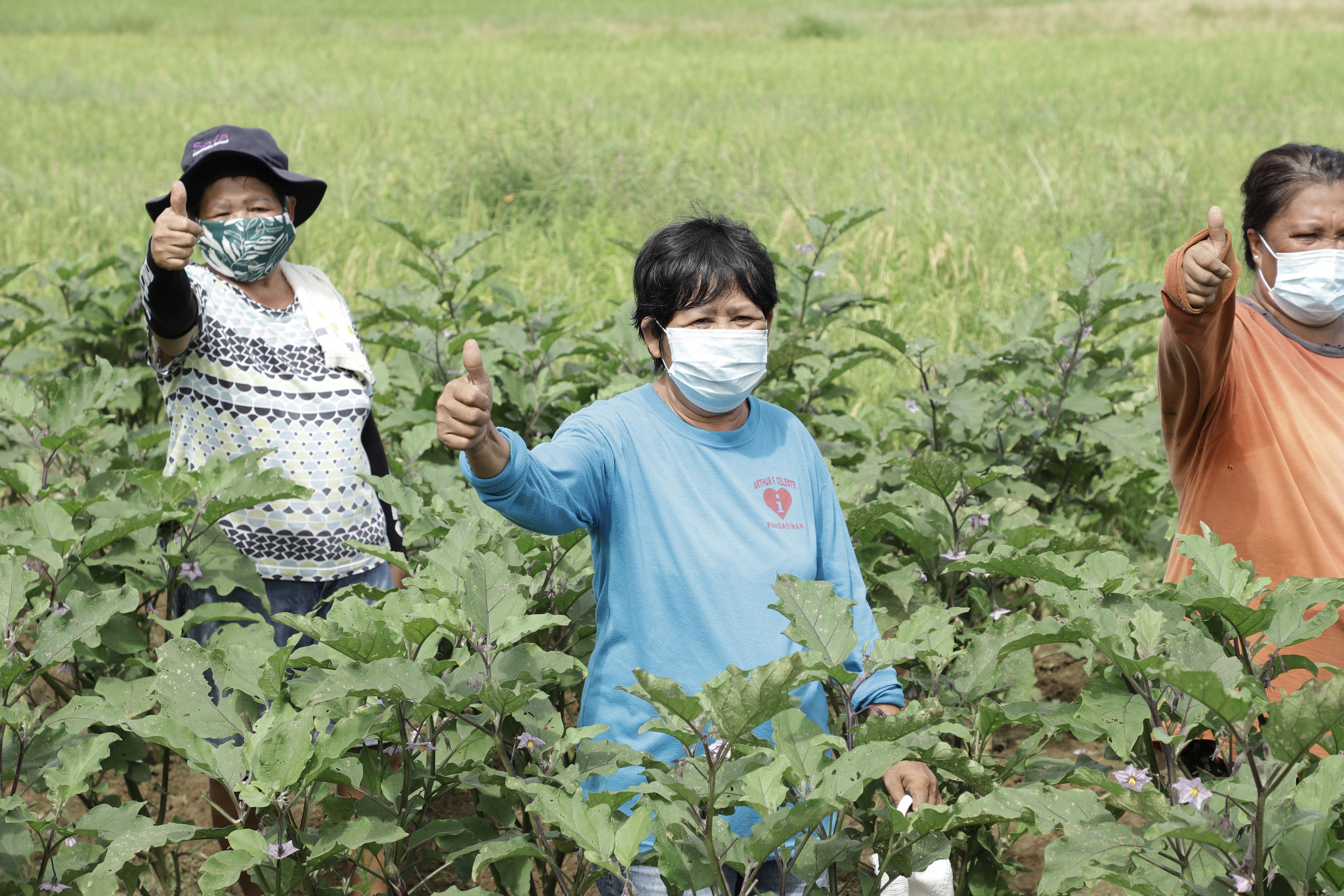
The extent of the pandemic’s impact emphasized the need to improve the sector’s overall resilience. It revealed how the nation needed more effective risk management strategies and policies to ensure the continued functioning of the national agri-food system in the face of economic, social, and environmental disruptions. The crisis served as a turning point to rebalance and transform agri-food systems, making them more efficient, inclusive, sustainable, and resilient.
The experiences of the Department in the implementation of past and ongoing pandemic response initiatives provided policy and decision-makers with a better understanding of the system’s characteristics, their components, and actors, as well as internal linkages and interactions in the broader economic, social and environmental contexts This guided and will continue to guide the DA and its partners in confronting a new and constantly evolving landscape, especially on the road to recovery from the aftermath of the COVID-19 pandemic
In the Philippines and throughout the world, governments have outlined mutually reinforcing sets of priority actions to address the immediate, medium- and long-term needs to protect people during and beyond the crisis, and – ultimately – to reshape and build resilient agri-food systems.
The 2021 State of Food and Agriculture Report of the FAO identifies some key interventions to enhance the resilience of individual supply chain actors, including innovative strategies for food transport and distribution, leveraging ICTs, maintaining diversity, and promoting inclusive governance and broad participation, among others. The report emphasizes those policies that help small-scale producers, small and medium enterprises and vulnerable households gain access to inputs, capital, modern technologies, and business tools.
Enhancing the resilience of agrifood systems to accelerate recovery and build a better post-pandemic economy
These strategies are in keeping with the key strategies identified and pursued by the Department under the OneDA Reform Agenda, which was introduced at the start of the year Collectively, the reforms introduced by the agenda generate growth and income opportunities for farming and fishing households and support the livelihoods of people working throughout the agricultural value chain
With its intensified and upscaled programs and projects to respond to the pandemic as well as other pressing challenges in the agri-fishery sector, such as animal disease, extreme weather conditions and frequent calamities,
the increase in the price of inputs, the rising cost of food, the Department is one with the global community in transforming agri-food systems to make them more efficient, inclusive, resilient and sustainable for better production, better nutrition, a better environment, and a better life for all

Given its reliance on weather and climate, ally vulnerable to the y and intensity of extreme e-related events According ease in natural disasters we w normal The consequences n employment and e to expand significantly with roader threats. An alarming mber of outbreaks of mal and plant pests and unprecedented pressure on ain.
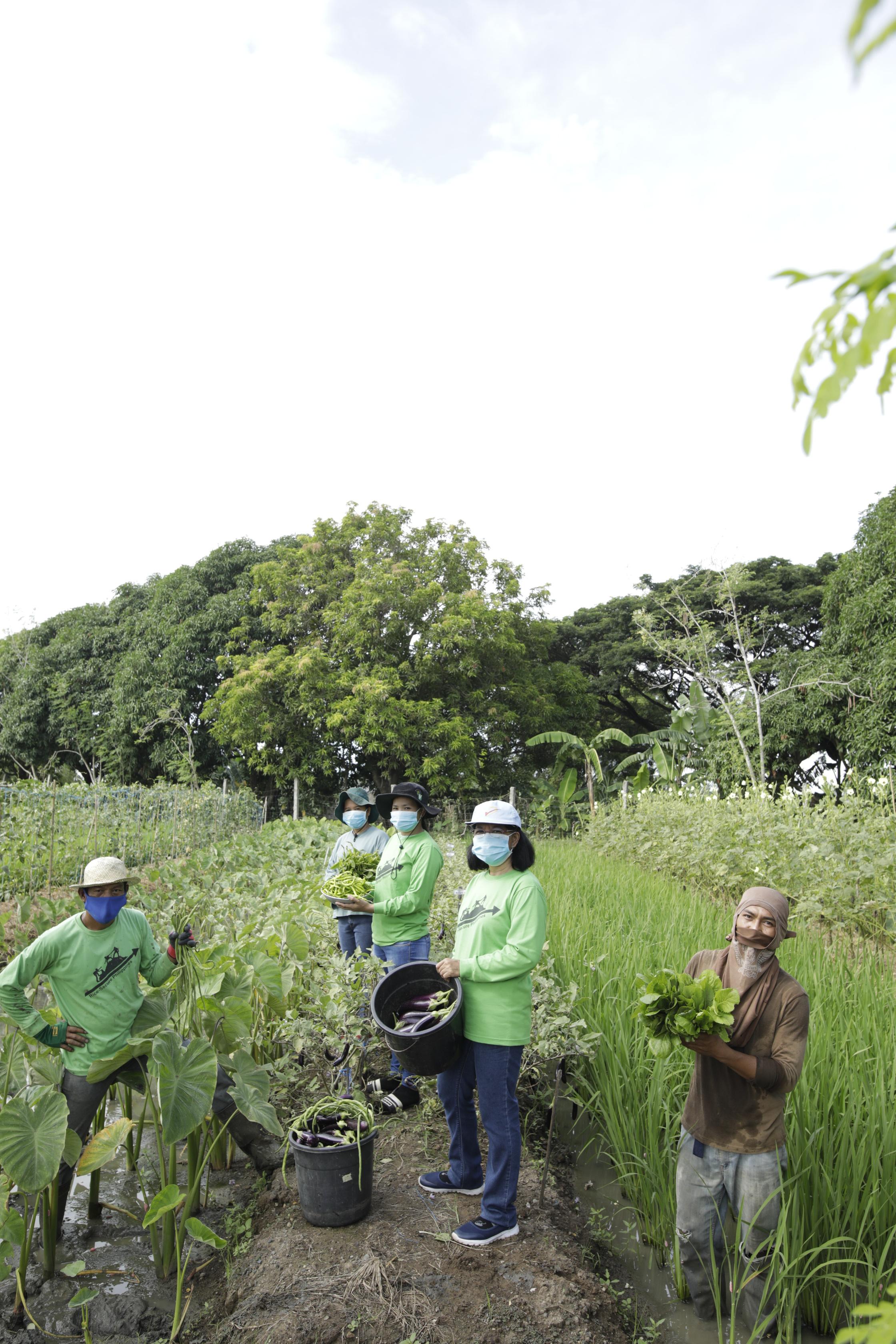
emic continues to lnerability of economies and azard emergencies with at further intensify risks. cts of the COVID-19 nded by the ongoing in Europe, are aggravating sts and disrupting the global Global food prices marked sing global energy and fuel substantial increases in
call for better governance. or, the Department has pressing concerns. The DA -stakeholder partnerships to interventions that would uences of these crises on d fisherfolk, and e economy.
DA also made the most out learned from two years of hese into a wider and better e mechanism, as well as o anticipate and respond to
Implementation of programs under RA 11494 or the Bayanihan to Recover as One Act. Philippine lawmakers enacted the Bayanihan to Recover As One Act (Bayanihan 2) to accelerate economic recovery and bolster the resilience of the Philippine economy
By virtue of this legislation, the Department has mounted a rapid and robust crisis response that has contributed significantly to the national government’s efforts to revive the economy
The agency allocated a total of Php24 billion to finance the Plant, Plant, Plant Program The program encompasses a comprehensive set of productivity and income enhancement measures and social protection and amelioration projects These include infrastructure development, credit and marketing assistance, logistics support, and digital innovations for farm and fishery communities and their organizations, among others
The major initiatives under Bayanihan 2 include the second phase of the Rice Resiliency Project (RRP II), which received an additional Php4.5 billion allocation. The project provided 1,206,424 rice farmers with seed and fertilizer subsidies during the 2021 dry season. The SURE COVID-19 loan facility of the ACPC, with a total allocation of Php2.5 billion, provided zerointerest loans to 66,592 individual borrowers and 134 MSEs. On the other hand, the DA allocated Php4.5 billion for the Cash and Food Subsidy for Marginal Farmers and Fishers
(CFSMFF) program, which provided an unconditional cash and food assistance amounting to Php 5,000 each for eligible farmers and fisherfolk The subsidy consisted of Php3,000 in cash and Php2,000-worth of food such as rice, chicken, eggs, etc As of December 31, 2021, the DA had provided cash and food subsidies to 886,942 beneficiaries nationwide
Further, a total of 993,952 individual and 4,527 group beneficiaries received various assistance and benefited from other productivity and income enhancement projects of the Department under Bayanihan 2 These included the provision of starter kits and extension support through the Urban Agriculture Program; the provision of technical support, production inputs and machinery, and equipment for the expansion and enhancement of high-value crops production areas for banana, mango, bamboo, onion and garlic. Beneficiaries likewise received pesticides and assistance in the conduct of strengthened disease surveillance and monitoring for the management of fall armyworms. In addition, beneficiaries received assistance for the establishment of nucleus and multiplier farms for poultry, swine and small ruminants; the distribution of cattle feedlot fattening livelihood packages; the establishment of nurseries and hatcheries, as well as the distribution of production inputs and implements for seaweed, sea urchin, glass eel and aquaculture production and development; the establishment of agri-business corridors, trading posts, production and cutting facilities, fish ports, FMRs; and the establishment of inclusive enterprise development projects, among others.
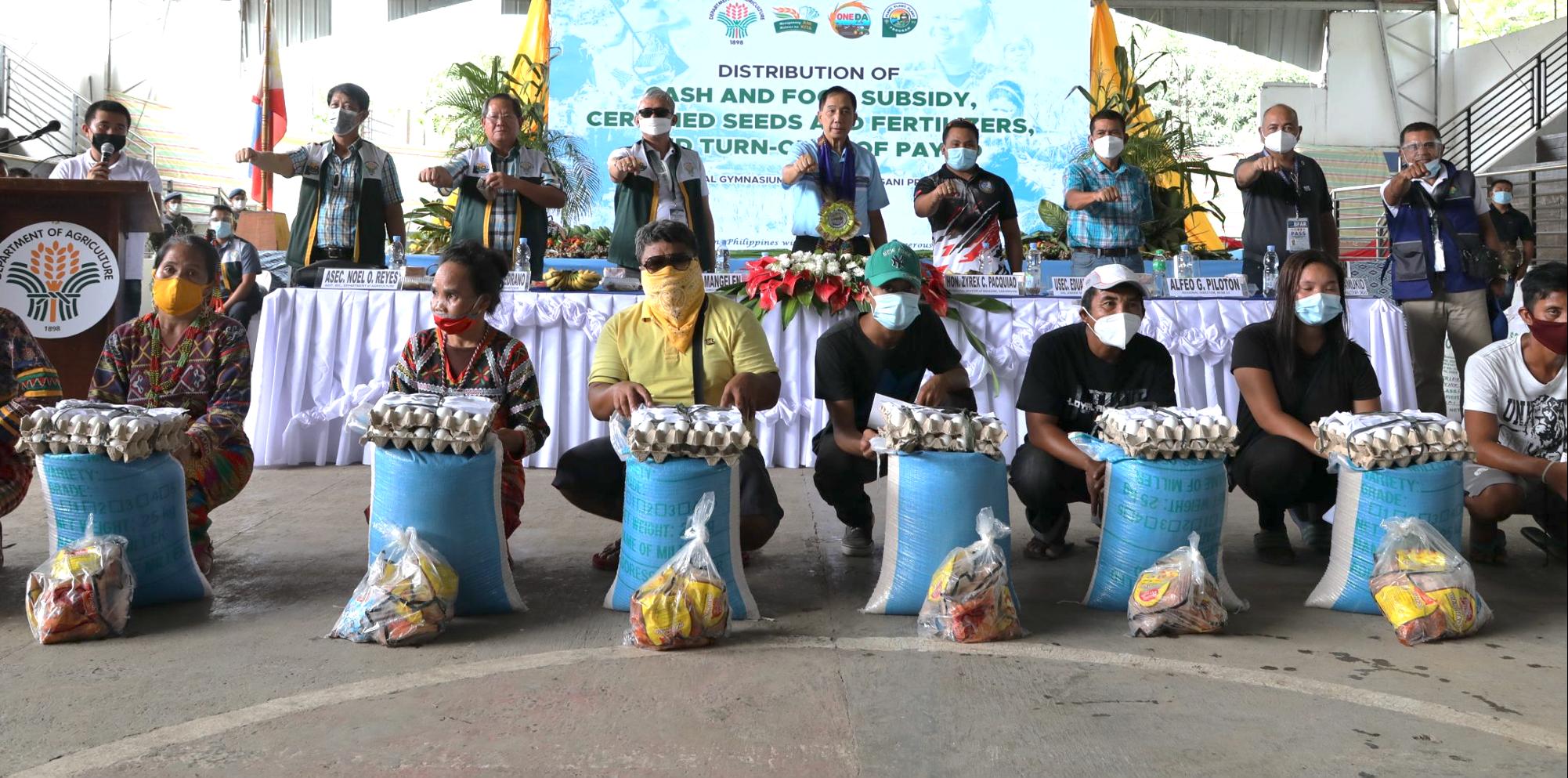
National Urban and Peri-Urban Agriculture Program. Under the National Urban and PeriUrban Agriculture Program (NUPAP), a total of 1,221 local government units, national government agencies, non-government organizations, civil society organizations, homeowners’ associations, and private companies signed a Memorandum of Agreement (MOA) with the DA for the promotion and implementation of various urban agriculture technologies This particular effort aims to enhance the capability of urban dwellers to grow their own food The program showcases a variety of technologies that communities and urban homeowners can employ to grow food, including hydroponics and vertical gardening The program also supports container gardening when space is inadequate.
Some 4,580 households and communities benefited from 4,571 urban agriculture and hydroponic sites under the program. The DA distributed a total of 2,299 kilograms of
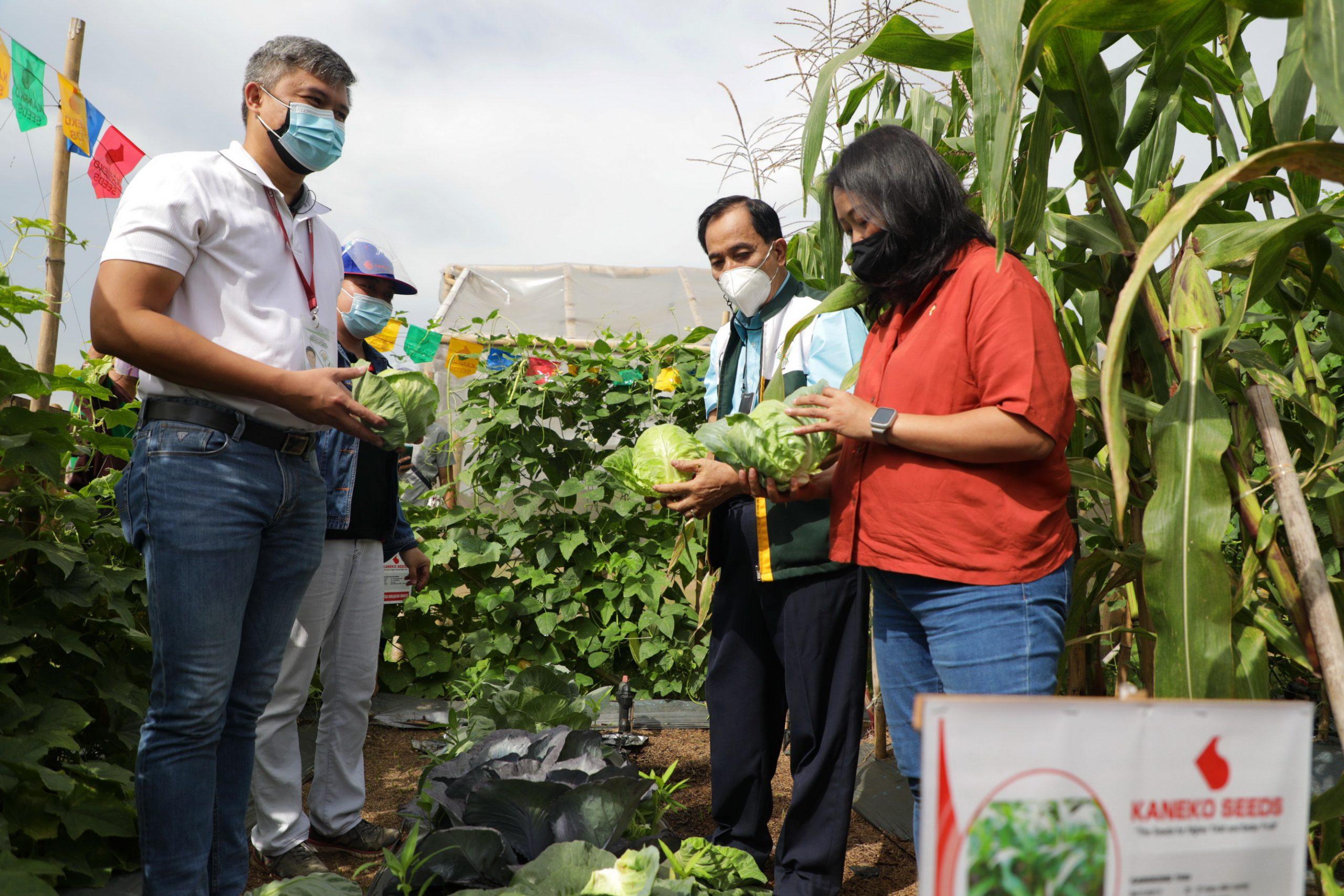
vegetable seed packets; 121,502 pieces of various seedlings; 30,399 bags of fertilizer and soil; and 137,803 units of agricultural tools and equipment to urban beneficiaries under the program In addition, the agency and its attached agencies conducted a total of 901 online and face-to-face training activities in support of the program
Urban Aquaponics Program. The Department, through the lead effort of BFAR, implemented the Urban Aquaponics Program to ensure sustained food production in urban communities as the nation eased into the “new normal” in the wake of the pandemic Aquaponics systems employ innovative technologies that allows fish and vegetables to grow in an integrated system.
The agency distributed 307 aquaponics units to 165 individuals and 131 group beneficiaries under the program. The initiative included training and start-up inputs for the culture of fish and vegetables.
The Department’s ongoing efforts to control and eradicate the African Swine Fever (ASF) received a big boost when President Rodrigo Roa Duterte signed Proclamation No 1143 on May 10, 2021, declaring a state of calamity due to the ASF outbreak.
The proclamation allowed the DA to expand and intensify its ASF response initiatives, and more importantly, permitted local government units (LGUs) to set aside part of their calamity fund for ASF prevention, mitigation, preparedness, response, rehabilitation, and recovery, as well as craft and implement their respective ASF contingency plans. To complement these operations, the Department likewise continued to strengthen its alliances with relevant groups in the private sector.
The Department employed a multi-pronged approach to combat ASF, highlighting and balancing the prevention and control of the disease, as well as the recovery of the industry. Efforts included strengthened quarantine measures and close monitoring and inspection of animal and product movements, testing, and education. The agency carried out these measures along with its hog repopulation operations and the Bantay ASF sa Barangay (BABay ASF) Program.
ASF Situationer. A total of 3,554 barangays in 664 cities and municipalities, 51 provinces, and 13 regions had been infected with ASF as of December 2021. To control the spread of the disease, the agency implemented the “1-7-10” protocol. The agency culled some 499,389 hogs in the process. Data from the Bureau of Animal Industry (BAI) show that these operations contained ASF in 43 barangays in 16 municipalities, eight (8) provinces, and four (4) regions by the end of the year.
Some 89 cities and municipalities have not reported cases of the disease for 90-180 days.
Another 447 cities and municipalities had not reported cases for more than 180 days
Indemnification. To compensate for losses due to culling, the DA mobilized funds for ASF indemnification The agency obtained the funds from the President’s Contingency Fund as well as its own Quick Response Fund (QRF) By year-end, the Department had already provided indemnification to a total of 48,531 hog raisers amounting to Php1 7 billion for a total of 379,420 pigs culled
BABay ASF. BABay ASF serves as DA’s retooled platform to effectively manage and control ASF and revive the badly-hit hog industry. The program is implemented in partnership with LGUs, hog raisers’ groups, and the private sector. The platform seeks to create an effective ASF monitoring, surveillance, and reporting system; and intensify the practice of biosecurity measures in all hog farms.
The DA and DILG entered into a Joint Memorandum Order supporting the adoption and implementation of the BABay ASF Program at the local level. As of December 2021, a total of 36 provinces had passed and enacted local ordinances or executive orders adopting the program This multi-sectoral cooperation resulted in the release of six (6) municipalities in Benguet and Batangas from quarantine, which upgraded them from red zones (infected zones) to pink zones (buffer zones)
Hog repopulation/INSPIRE. The INSPIRE Program is the flagship program of the DA to accelerate the repopulation and recovery of the hog industry from the ASF outbreak. It highlights the important role of LGUs, farmer cooperatives and associations (FCAs), and other stakeholders in the implementation of its various components.
The program has four (4) main mechanisms: (i) Calibrated Repopulation (Implementation of Sentinel Protocol and Community-Based Swine Production and Expansion through Clustering and Consolidation); (ii) Recovery of the breederbase through the establishment of swine nucleus, multiplier, and production farms; (iii) the Enhanced Insurance Program for smallhold/commercial farms; and (iv) a Credit/Loan Program
Source: Bureau of Animal Industry
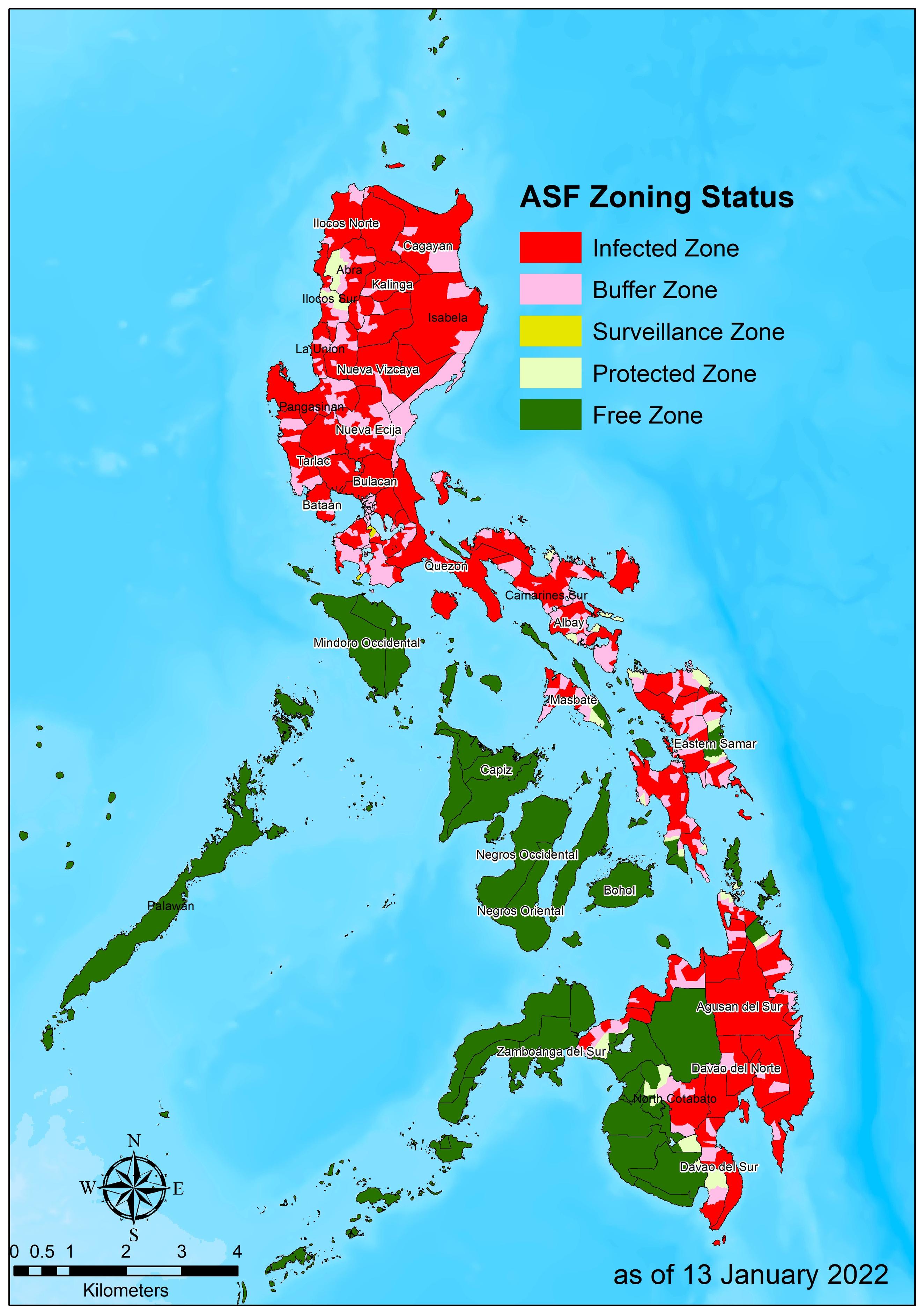
Since the program's rollout in February 2021, the Department has seen the release of a total 599 barangays from quarantine – with 4,748 hog farmers given 12,946 head of sentinel pigs, as well as feeds, drugs, and biologics
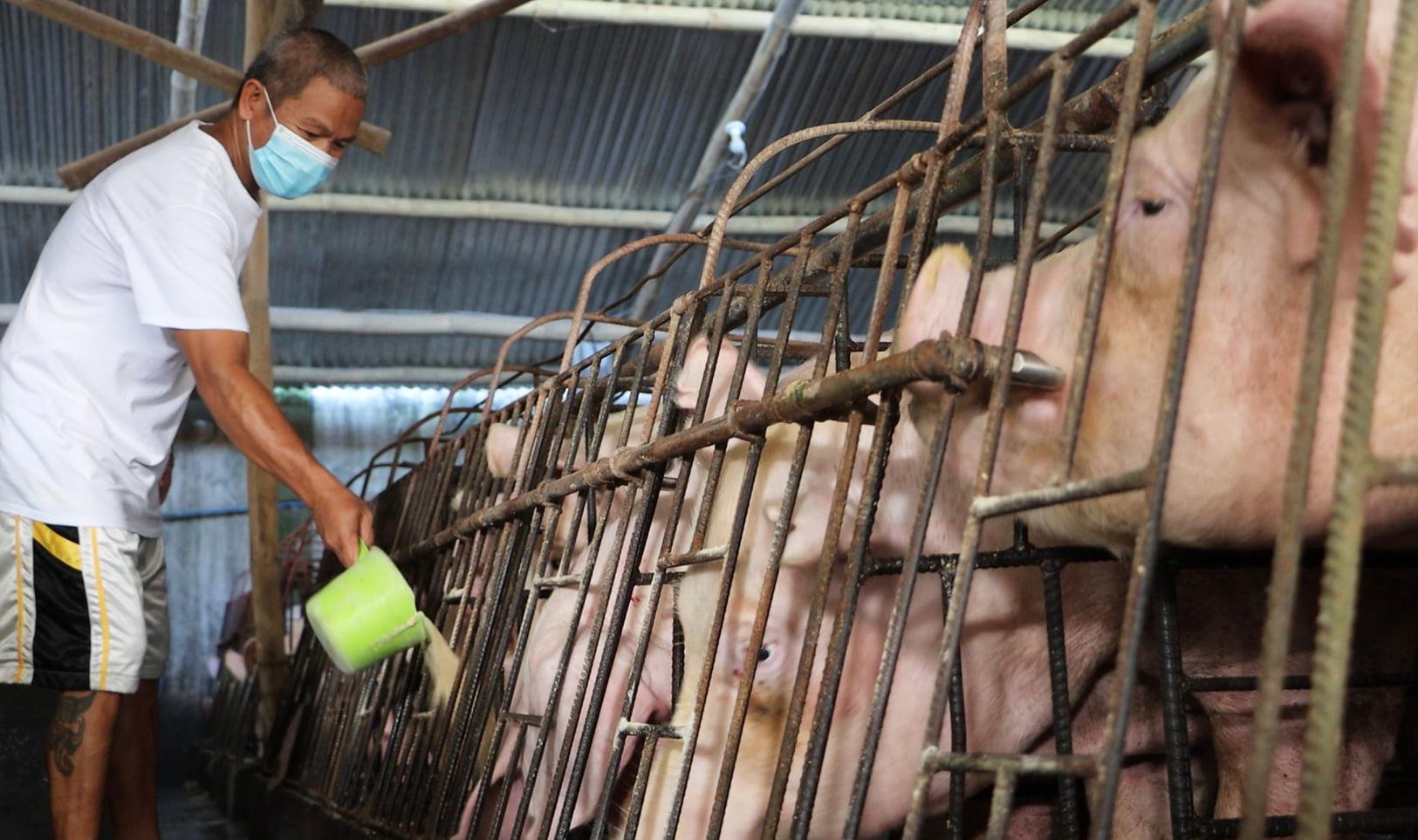
In addition, a total of nine (9) FCAs in ASF green zones in Regions IV-B, VI, VII and IX received Php5-million grant each through the DA’s Community-Based Swine Production and Expansion through Clustering and Consolidation Project The project ensures the establishment of bio-secured multiplier farms and the procurement of animal stocks, feeds, and biologics
Moreover, the agency provided funding for a total of 34 swine breeder farms with 30 and 60 sow-level capacities, and 19 Artificial Insemination (AI) Centers in 2021. These
projects are already in the various stages of implementation The multiplier farms are expected to produce initial parent stocks by early 2022
Under the program’s insurance component, the PCIC was able to insure 646,103 head of swine benefitting 193,884 hog raisers, 99 8% of whom are non-commercial and backyard raisers This accounts for a total insurance coverage of Php6 57 million
To help bankroll the hog repopulation program, the DA through the Agricultural Credit Policy Council (ACPC), the LandBank, and the Development Bank of the Philippines (DBP) also granted Php608 million in zero-interest loans to 2,482 backyard, semi-commercial and commercial hog raisers. They are payable for up to five years.
Vaccine trials. In December 2021, the Department, through the BAI Veterinary Technical Advisory Committee (BAI-VTAC), approved the ASF vaccine trial proposal received from the Chulalongkorn University in Thailand This came after the proponents completed the necessary requirements and were issued a Special Import Permit The ASF vaccine trials were undertaken with the cooperation of Robina Farms
Similarly, BAI-VTAC also met with representatives from AVAC Vietnam Company Limited and San Miguel Foods, Inc (SMFI) in December 2021 to discuss the submission of the former’s trial protocols and other requirements for review ahead of the proposed trials of the AVAC-developed ASF vaccine in the Philippines.
headed by the BAI, has secured all necessary permits and clearances from the DOTr, the DPWH, the DENR, and the Philippine Air Force
Examination
in Agriculture (CEFA). The Department imposed additional border control measures to help improve the country’s quarantine regulations The DA deployed additional quarantine personnel to all major ports nationwide to facilitate the smooth delivery of quarantine and trade services in Designated Examination Areas (DEA) and Bureau of Customs (BOC) X-ray Areas
The agency also initiated the groundwork for the establishment of the country’s first Cold Examination Facility in Agriculture (CEFA). The construction of the CEFA at the Subic Bay Freeport Zone is a priority project of the Duterte Administration. The project aims to prevent the entry of agri-fishery pests and diseases through immediate risk-based inspections of imported agri-fishery commodities at the port of entry.

On November 26, 2021, Agriculture Secretary William D. Dar and the Subic Bay Metropolitan Authority (SBMA) Administrator Atty. Wilma Eisma formally signed a Memorandum of Agreement (MOA) on the allocation and use of 2,000 square meters of land at the Subic Bay Freeport Zone for the establishment of the CEFA. The project’s Terms of Reference, as well as the Detailed Architectural Design, have been finalized. Meanwhile, the CEFA Project Office,
Strengthening of laboratory and testing capabilities. The ASF epidemic has prompted the DA to strengthen measures in the prevention and control of infectious, transboundary animal diseases in general Aside from the implementation of animal movement restrictions and the depopulation of affected animals, the strengthening of veterinary diagnostic laboratories at the national and regional levels plays a vital role in the agency’s overall objectives The Department continues to strengthen the capacity of the BAI – Animal Disease Diagnosis and Reference Laboratory, which serves as the country’s National Laboratory.

To this end, the agency has accredited deserving non-government veterinary diagnostic laboratories in order to standardize numerous diagnostic protocols As of this year, the Department has accredited seven (7) private ASF testing laboratories
To ensure the safe and effective use of ASF diagnostic kits, which play a key role in the fight against ASF, a total of eight (8) ASF diagnostic test kits were registered with the DA-BAI
To strengthen the capacity of the country’s central laboratory in disease diagnosis, the BAI technical staff participated in the World Organisation for Animal Health (OIE) Laboratory Twinning Programme The program enhanced the laboratory’s capacity for diagnosis of ASF virus through manpower training in diagnostic methodologies based on OIE standards and guidelines, and ISO/IC 17025:2017 Quality Management Standards.
Further, the DA undertook capacity-building initiatives to help Regional Animal Disease Diagnostic Laboratories (RADDL) establish, develop, and improve their diagnostic capabilities and equipment for the ASF virus, and to address the increased number of sample submissions as a result of better monitoring and surveillance.
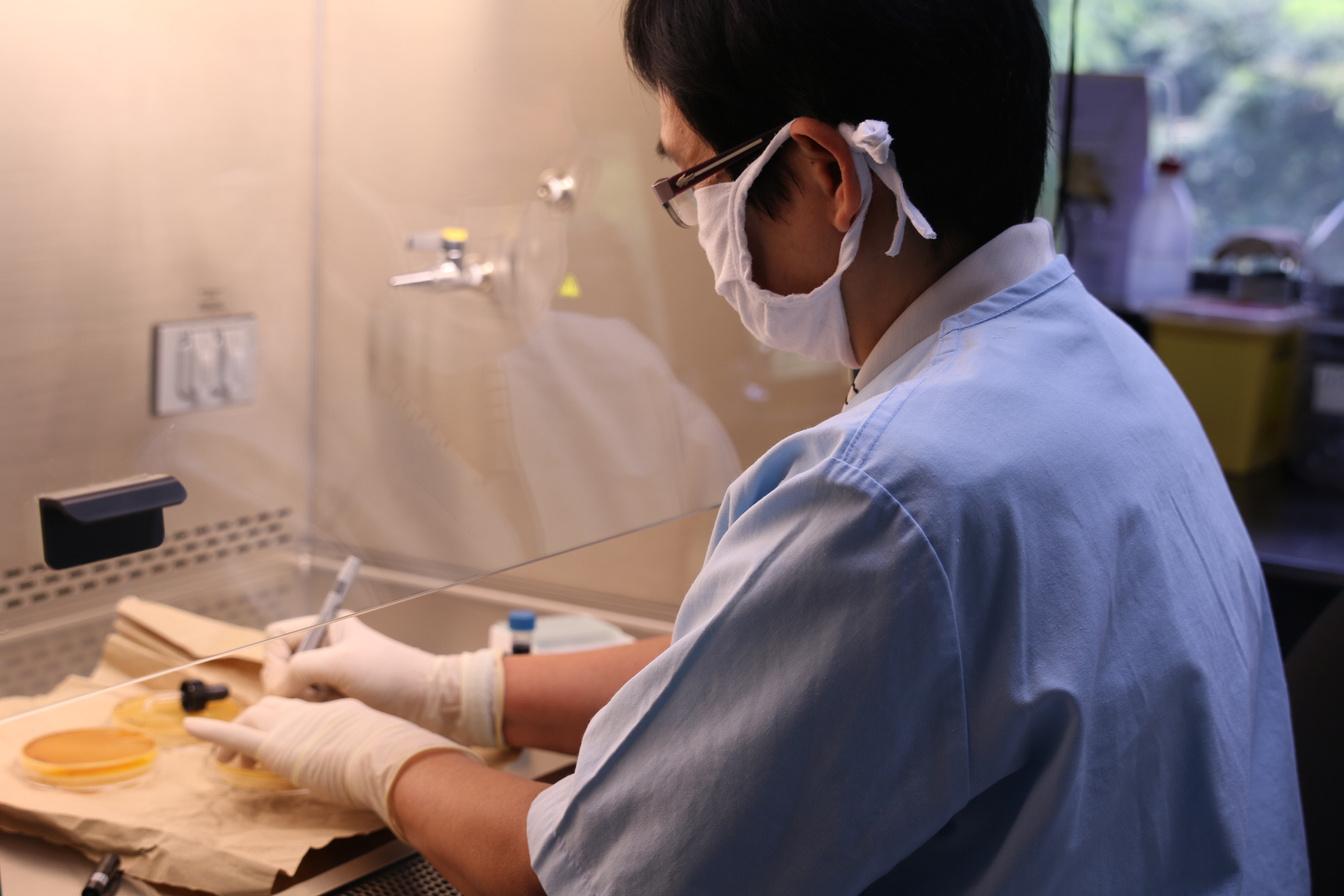
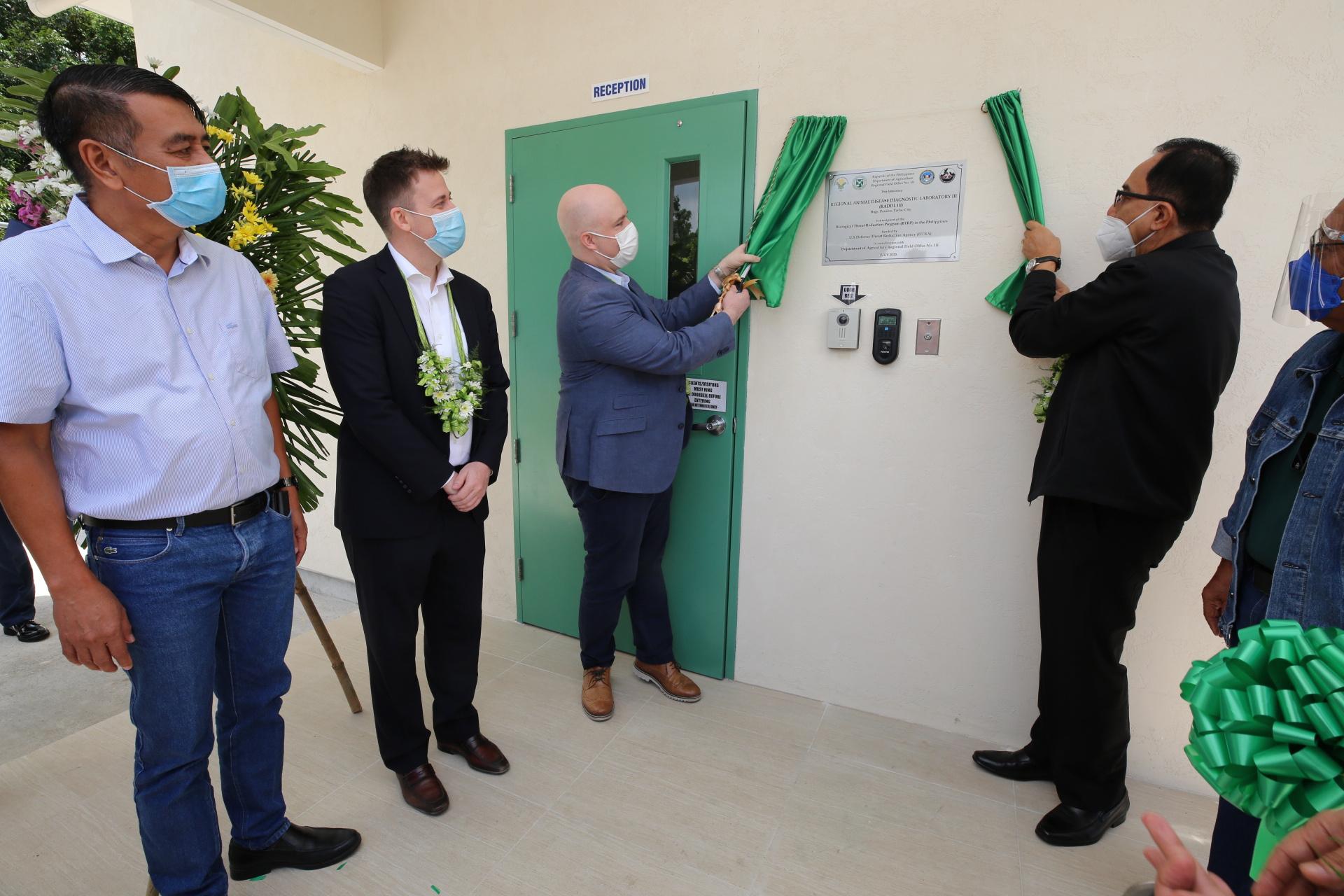
In 2021, the agriculture sector suffered from a Php19.38-billion production loss due to typhoons, drought and other climate-related disasters, pest infestation, and disease outbreaks, among others. This accounts for a 31-percent decrease compared to the losses incurred in 2020. The rice subsector incurred the majority of the losses (38.63%). The highvalue crops sector saw a 22.57% drop in production. These were followed by the corn subsector (18.96%), and fisheries (15.14%). Of these, Php18.14 billion, or 93.61% of the total value of agricultural damage and losses were caused by typhoons (71.78%), droughts (14.14%), and other climate-related disasters (7.69%).
The Department mobilized its Quick Response Fund (QRF) and National Disaster Risk Reduction and Management Fund (NDRRMF), allocating Php2.75 billion to aid some 508,197 farmers and fisherfolk and 105 groups nationwide. As of December 31, 2021, the DA disbursed Php486.34 million, or 39%, in postdisaster assistance funds to affected farmers and fishers.
Adaptation and Mitigation Initiative in Agriculture (AMIA) Program. As the Philippines is frequently visited by typhoons and extreme weather phenomena, the Department works to ensure a strong, resilient, and sustainable agriculture and fishery industry The agency has created the Adaptation and Mitigation Initiative in Agriculture (AMIA) program for this purpose The program promotes climate-resilient agriculture (CRA) technologies and practices and helps local farmers and fisherfolk build more resilient livelihoods and enterprises
As of December 31, 2021, the agency assisted in the establishment of 130 AMIA villages nationwide In addition, the Department has identified suitable areas for AMIA - Climate Resilient Agri-Fishery Technology-based Enterprises (AMIA-CREATE) in eight (8) regions and can now proceed with the implementation of their respective proof-of-concept projects on diversified cropping, rice-based and corn-based integrated farming and bamboo production, among others.
As part of the AMIA mainstreaming efforts in other DA programs, 14 AMIA villages are already being coordinated for inclusion in the Farm and Fisheries Clustering and Consolidation (F2C2) Program. In addition, the agency is expanding 56 existing AMIA villages and developing 144 more new climate-resilient
Source: DA Field Programs Operational Planning Division - Disaster and Climate Information Office
were incurred by the rice
PHP13.91B
PHP2.74B
PHP1.49B
PHP1.24B
Sustained efforts to build the agri-fishery sector’s resilience against calamities
villages to serve as reintegration sites for Balik Probinsiya, Bagong Pag-asa (BP2) Program beneficiaries
Moreover, a total of 58 provincial Climate-Risk Vulnerability Assessment (CRVA) maps were completed as of December 31, 2021 Twentynine are for Luzon, 16 for the Visayas and 13 for Mindanao provinces The harmonization and integration of the Expanded Vulnerability and Suitability Assessment (e-VSA) and CRVA to create a robust tool for commodity investment planning is currently ongoing The CRVA serves as a decision-support tool and standard assessment in targeting investment projects of DA Banner Programs and Regional Field Offices (RFOs)
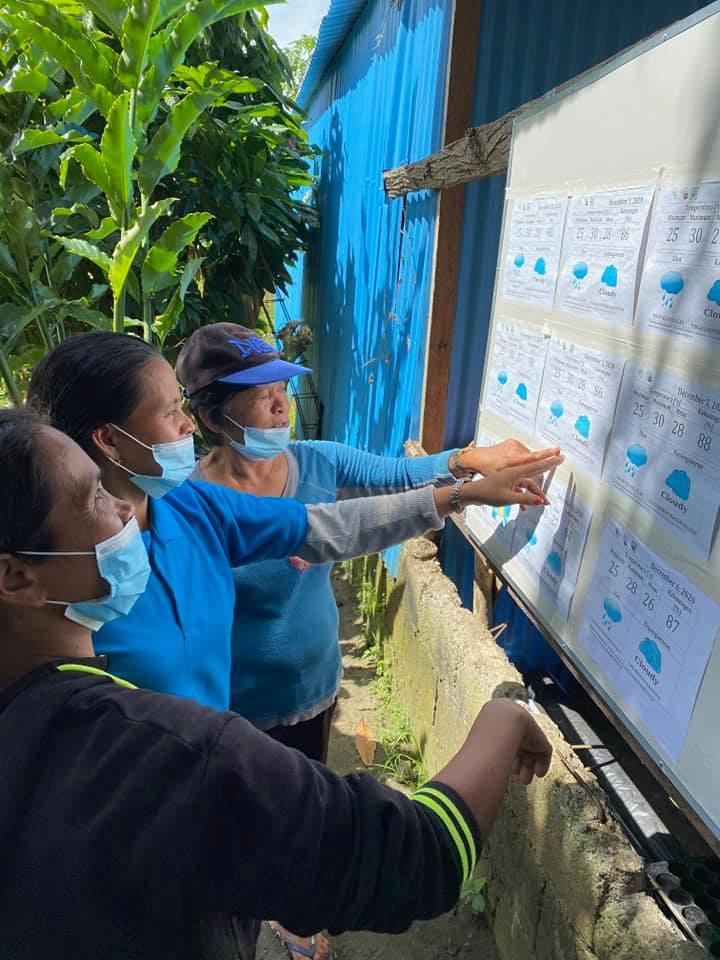
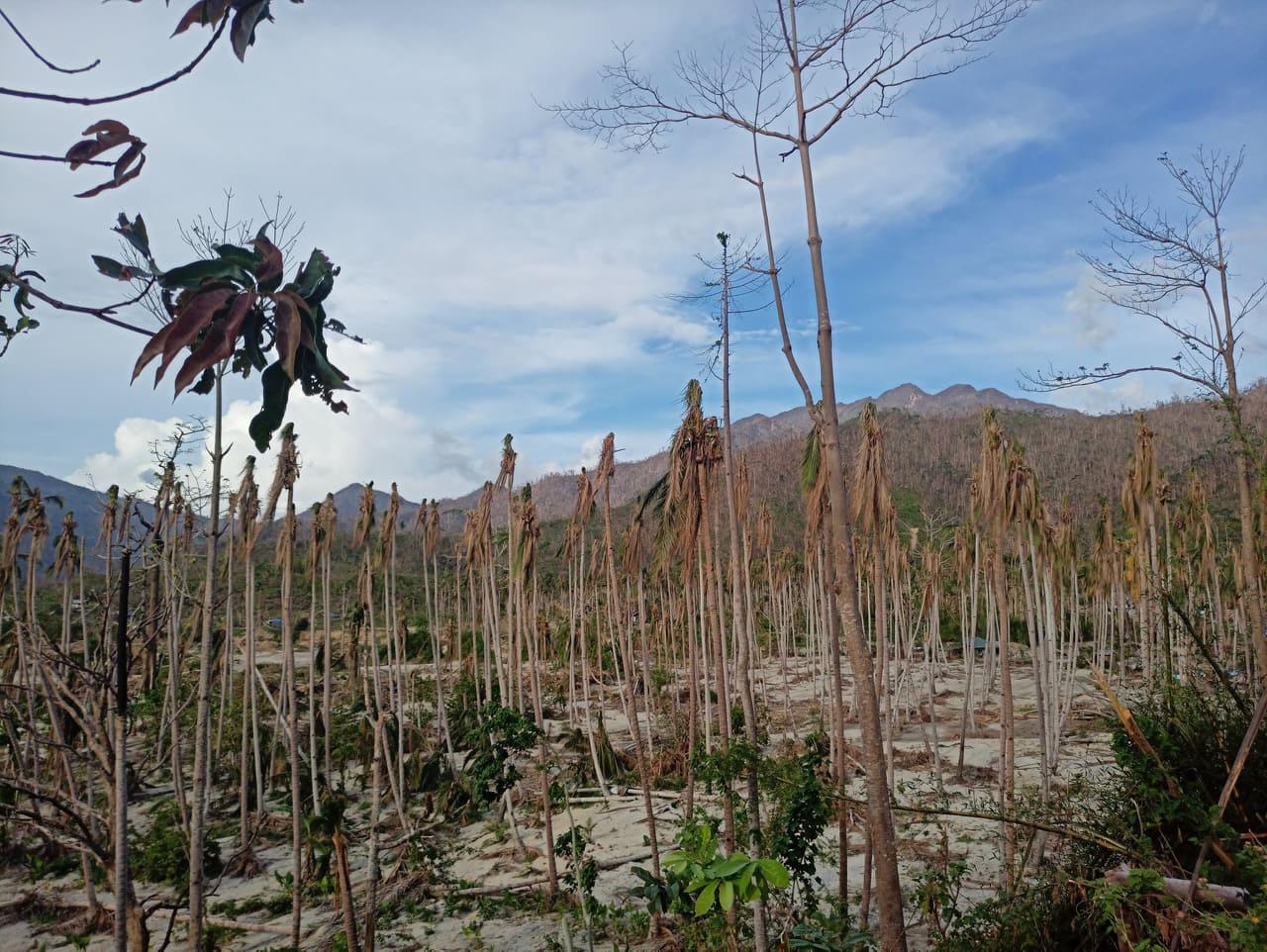
Further, the provision of Climate Information Services (CIS), which includes the preparation and dissemination of farm and fishery advisories based on climate and weather outlook, is now among the critical basic services provided by DA RFOs. Some 14 DA RFOs regularly issue Regional and Provincial Seasonal Climate Outlook and Advisories as well as Farm Weather Outlook and Advisories following the CIS module developed by the DA RFO in the Bicol Region.
These advisories are disseminated through various platforms, such as printed copies, climate fora, radio, meetings with Municipal Agriculturists and extension workers, SMS, and social media, among others. In 2021, around Php8.6 billion in damage and losses in rice and corn were saved from the onslaught of typhoons due to early advisories and timely provision of CIS.
Tempering high fertilizer and fuel prices. The Department employed a wide range of response measures in order to temper high fertilizer prices On the international trade aspect, the DA through its Fertilizer and Pesticide Authority (FPA) is currently holding bilateral discussions with fertilizer manufacturing firms in fertilizer-producing countries, including Indonesia, Malaysia, Qatar, and China, to supply major fertilizer grades
Amidst the rising price of fertilizer in the country, the Department, through PhilRice promoted the adoption of a balanced fertilization strategy or the use of organicinorganic fertilizer combinations Together with BSWM, ATI, and the Agriculture and Fisheries Information Services (AFID), DA’s campaign “Abonong swak (Swak sa budget, swak sa palay),” will be launched to urge farmers to complement inorganic fertilizer application with organic alternatives. Nutrient management experts estimate that farmers could also save Php2,000-Php4,000 per hectare by using organic instead of inorganic fertilizers only. Organic fertilizer is a natural source of nutrients and its application has long-term benefits as it also improves soil fertility. The BSWM, in coordination with DA RFOs, also seeks to establish 1,000 composting facilities nationwide to help promote the use of non-traditional fertilizers.
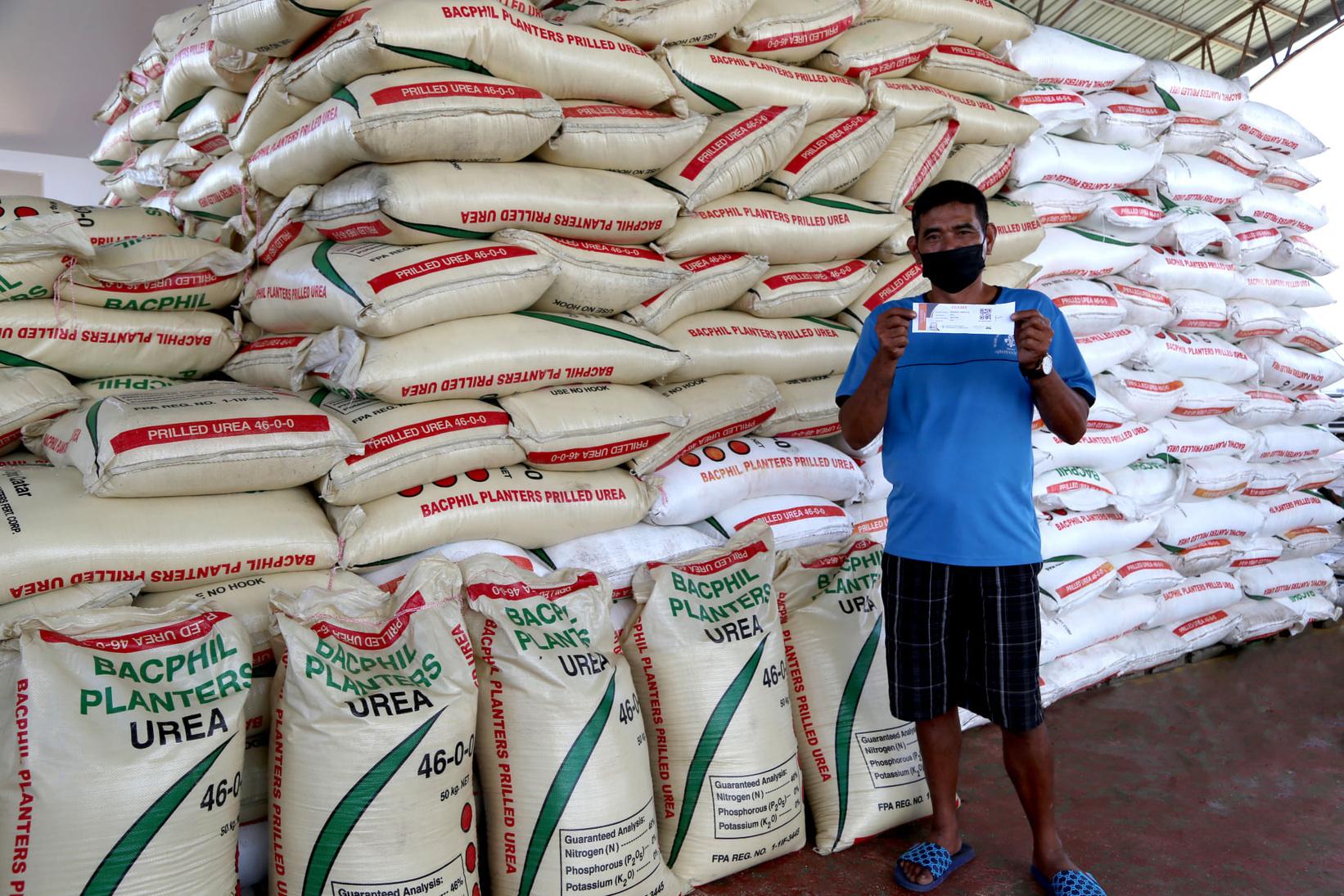
Aside from the regular fertilizer distribution under the Department’s commodity banner programs and the fertilizer subsidy voucher system implemented this year under the Bayanihan 2 - Rice Resiliency Project, the Department is looking to expand the provision of fertilizer subsidies to farmers planting rice, corn, high-value crops, sugarcane, and coconut under the proposed additional budget for the Plant, Plant, Plant Program Part 2, which aims to mitigate the effects of the global economic challenges compounded by the Ukraine crisis.
In addition, DA is also strengthening federations of FCAs so they can import fertilizers directly and take advantage of privileges and preferential rights afforded to cooperatives
Further, as part of the proactive measures of the Department to cushion the economic blow of high fuel prices on local producers, the DA also recommended the granting of additional fuel subsidies amounting to Php1 billion under the food mobilization component of Plant, Plant, Plant Program – Part 2
Addressing rising prices of food commodities. In order to address the rising prices of food commodities, the Department constantly monitors the supply and prices of agri-fishery commodities and ensures the smooth flow of food supplies to food deficit and major demand areas
The KADIWA ni Ani at Kita Program is the Department’s flagship agri-fishery marketing program. The program (1) provides urban households access to safe, fresh, and quality agri-fishery products at affordable prices while ensuring stable prices and a steady supply of food and other basic commodities to the consuming public, particularly in urban poor areas; and (2) establishes and sustains additional markets for small farmers and fisherfolk’s produce thereby increasing their access to direct buyers.
In 2021, the program has generated Php746 03 million in total sales from the conduct of 22,454 KADIWA activities These served 2 16 million households nationwide The amount was comprised of sales generated from retail and online selling platforms and agricultural products delivered to major demand centers facilitated under the KADIWA Express platform.

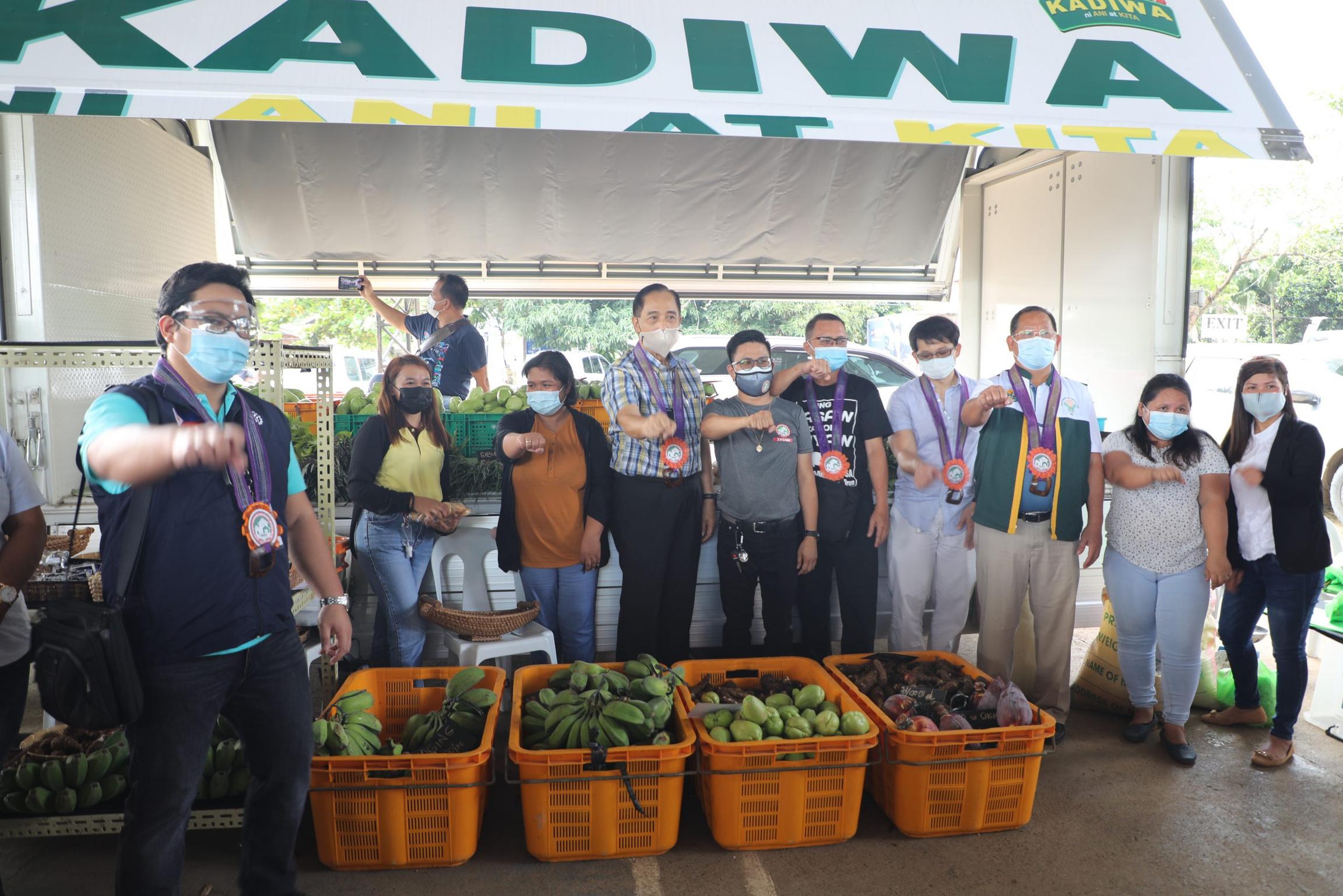
By virtue of RA No 11494 or the Bayanihan to Heal as One Act, the Enhanced KADIWA ni Ani at Kita Financial Grant Assistance Program was set up with the goal of enhancing the capacities of FCAs and Community-Based Organizations (CBOs) to become reliable and efficient in providing quality basic agri- fishery food products to the consuming public at affordable prices
As of December 31, 2021, a total of 306 consolidators and assemblers, comprised of 231 FCAs, three (3) CBOs, 71 LGUs, and one (1) State University and College (SUC), received grants under the program amounting to Php531 8 million
These grants will serve as additional working capital for qualified beneficiaries to be used for the procurement of postharvest and delivery and transport equipment; and the establishment of packaging facilities, among others
There are now 16 operational APTCs nationwide Some 198,434 farmers and fishers benefited from the operations of these APTCs from January to December 2021 Moreover, a total of 435,958 61 MMT of crops, 70,605 head of livestock and 650 53 MT of fishery products were traded in these facilities These products are valued at Php9 44 billion
The Department facilitates the issuance of food passes to suppliers and owners of delivery trucks and other vehicles which transport agrifishery commodities and supplies to ensure the unhampered movement of all agri-fishery inputs, food products, and agribusiness personnel nationwide amidst transport restrictions From January to December 2021, the Department issued a total of 2,149 food passes to online and walk- in applicants The Department also continues to help respond to issues and concerns related to the movement of agri-fishery products and inputs through the DA Hotline 1381 (AGRI)
The Department also coordinated with hog growers and traders from Visayas, Mindanao, and other ASF-free areas or “green zones” in Luzon to supply hogs to NCR in order to ease and stabilize tight pork supply and prices in the capital For this year, a total of 1,037,333 head of live hog and 11,534,954 kilograms of pork carcasses were shipped to NCR The Department also provided transportation assistance to hog growers and traders who delivered and sold their hogs or pork products in Metro Manila public markets
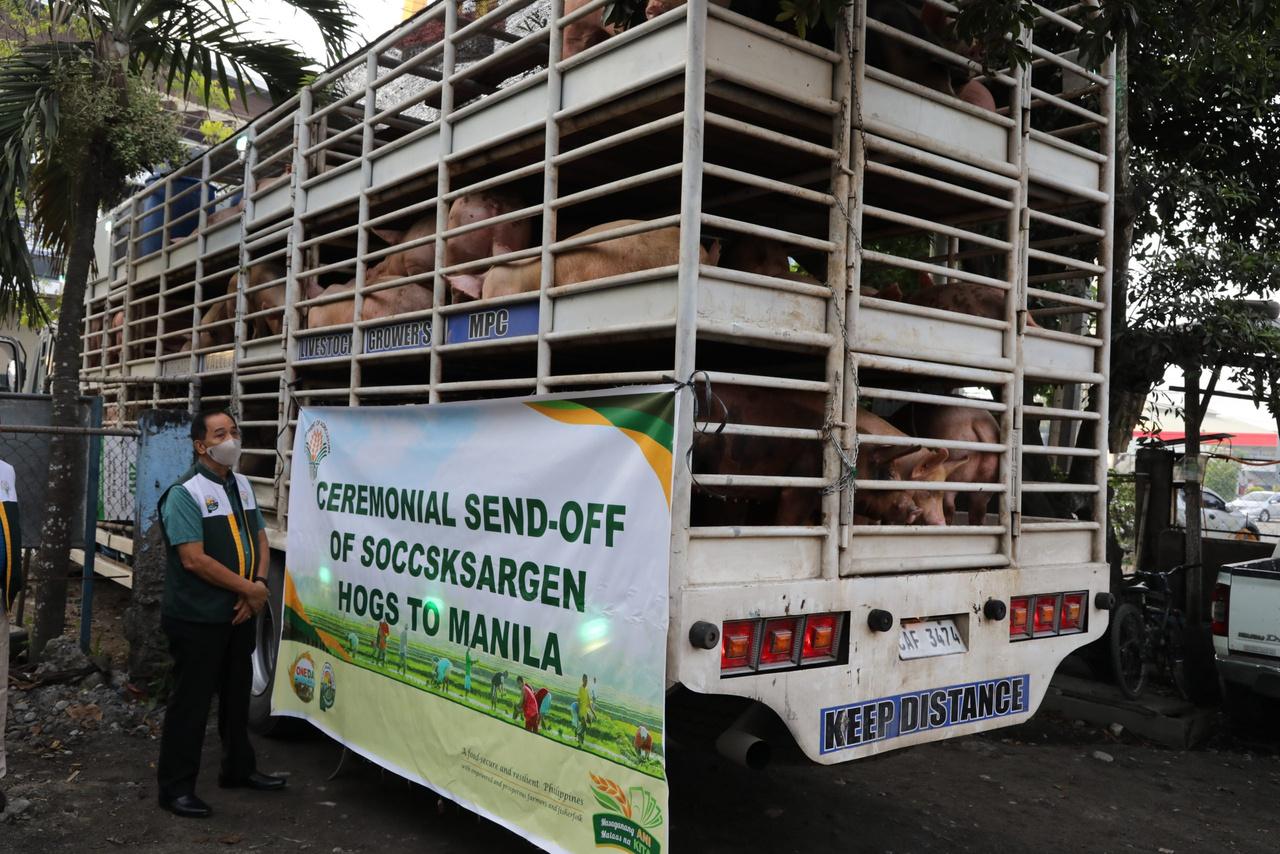

The DA, as one of the government agencies tasked to implement the provisions of RA 7581 or the Price Act, regularly conducts price monitoring activities through the AMAS and its RFO counterparts to protect consumers, stabilize prices, and ensure the availability and affordability of basic necessities and prime commodities at all times.
As of December 2021, a total of 209 wet markets nationwide were regularly monitored. In the NCR, the Surveillance, Monitoring and Enforcement Group (SMEG) conducted daily retail price monitoring in 13 wet markets while weekly retail price monitoring activities were undertaken in seven (7) wholesale markets and 13 supermarkets and grocery stores. In addition, AMAS conducted daily supply availability and price ceiling compliance monitoring in 23 wet markets in Metro Manila. This is in support to the implementation of Executive Order No. 124, s. 2021 or the Imposition of Mandated Price Ceiling on Selected Pork and Chicken Products in the NCR.
The Department through AMAS received a total of 54 consumer complaints for the period. Of these, 27 were already resolved and 27 were endorsed to the DA-RFOs and other concerned DA agencies for their appropriate action
The Department has made significant accomplishments and progress with its existing portfolio of assistance However, the current and anticipated challenges brought about by the rapidly evolving socio-economic landscape call for more strategic and innovative approaches Hence, at the start of the year, the Secretary introduced the OneDA Reform Agenda anchored on four (4) pillars, namely: consolidation, modernization, industrialization, and professionalization. It constitutes 18 key strategies intended to fuel the transformation of the Philippine agriculture and fishery sector into a modernized and industrialized powerhouse.
With these strategies imbued in the OneDA Reform Agenda, DA also hopes to masterfully weave together efforts and initiatives by various industry actors and find more ways to encourage people to combine their efforts, resources, talents, and enthusiasm towards the realization of a common vision for Philippine agriculture.
This holistic approach paved the way for the introduction of new programs and upscaling or reconfiguration of existing programs to be more attuned to the current needs of the sector and to better support agri-fishery development in the long term.
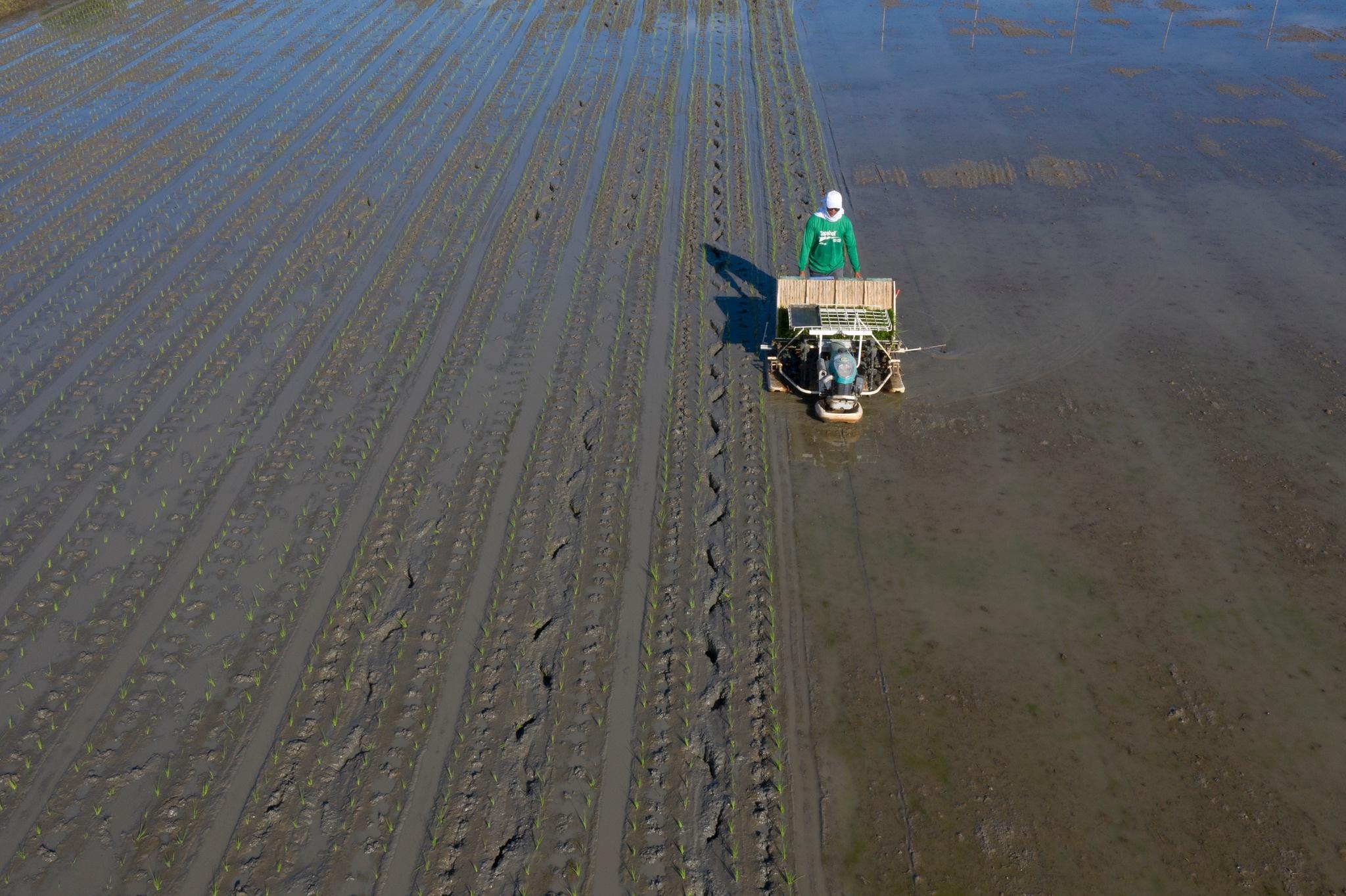
The OneDA Reform Agenda focuses on three (3) major integrative programs, namely: (1) Farm and Fisheries Clustering and Consolidation Program; (2) Province-led Agriculture and Fisheries Extension System (PAFES); and (3) Establishment of Agri-Industrial Business Corridors (ABC). Below are the highlights of accomplishments of the aforementioned programs
Farm and Fisheries Clustering and Consolidation Program. As of December 2021, a total of 744 clusters were identified and validated under the F2C2 Program comprised of 839 FCAs with over 281,437 members covering 297,545 hectares in area. The majority of the clusters are engaged in rice (30.2%), corn (25.7%), and high-value crops (18.3%) production, while other clusters are pursuing livestock, coconut, sugarcane, fiber crops, and fisheries production, among others.
To date, a total of 105 Cluster Development Plans (CDP) were completed and 343 plans are being finalized The CDPs are designed to focus on community production and processing projects that promote better coordinated and organized production and value chain systems towards increased productivity as against the small and stand-alone traditional farming and fishing practices
Moreover, a total of 331 training sessions, which include Values Formation, Organizational Management, Financial Management, and Formulation of Cluster Development Plan, Business Plan preparation, and other capacitybuilding activities, were conducted that benefited 1,058 groups and 11,491 individual farmers and fisherfolk

The program also capitalizes on strategic partnerships with the private sector and donor institutions Notable of which is the capacitybuilding collaboration with Jollibee Group Foundation on Agro-Entrepreneurship for Inclusive Value Chains On November 27, 2021, a total of 97 individuals from 45 organizations including representatives from seven (7) DA RFOs successfully completed a 6-week introductory online course on AgroEntrepreneurship for Inclusive Value Chains
Province-led Agriculture and Fisheries Extension System (PAFES). PAFES aims to strengthen the capability of LGUs to implement and integrate multiple agriculture and fisheries programs with the provinces as the center for operations given the devolution of agricultural personnel and services to LGUs. It serves as the institutional platform that integrates the implementation of government programs and related support services in agriculture and fisheries at the local level.
Through PAFES, DA hopes to further strengthen the collaboration between DA, LGUs, academe, and private sector in bringing extension services to the grassroots level amid the challenges of devolution, as well as harness the leadership, human capacity, and resources available in the provinces
In 2021, the program was initiated in 17 pilot provinces nationwide To date, LGU orientations were conducted and Provincial Management Committees have been established in 15 pilot provinces
Moreover, in support of PAFES implementation, rapid appraisal of the resources and capabilities of LGUs in providing agri-fishery extension services were completed in 10 provinces and is still ongoing in five (5) provinces
In addition, Provincial Agri-Fishery Extension Centers (PAFEC) have been established in Batangas and Negros Oriental The province of Batangas was the first province to complete the formulation of the Collaborative Provincial Agriculture and Fisheries Extension Program (CPAFEP) As of December 2021, a Memorandum of Agreement (MOA) for PAFES implementation were already signed with the provincial governments of Benguet, Batangas, Marinduque, Albay, Southern Leyte, Sarangani, and Agusan del Norte.
OrientationwithLGUs conductedin 15provinces
ProvincialManagement Committeeestablishedin 15provinces
ConductofRapidAppraisal completedin 10provinces
MOAfortheRoll-Outof PAFESsignedfor 7provinces
ProvincialAgri-Fishery ExtensionCenters(PAFEC) establishedin 2provinces
FormulationofCollaborative ProvincialAgricultureand FisheriesExtensionProgram (CPAFEP)completedin 1province
Agriculture and Fisheries Industrialization Development Program (AIDPro). Under AIDPro and in line with the OneDA Reform Agenda’s industrialization pillar, the establishment of Agri-Industrial Business Corridors (ABCs) was undertaken Pilot Agri-Industrial Business Hubs were inaugurated in New Clark City and Taguig City which shall serve as the anchor for interregional and trans-national agri- based economic activities by facilitating interconnectivity through downstream and upstream linkages from village-based activities to large-scale factories, processing, and marketing centers It will also establish multisectoral public-private-people partnerships and provide catalytic financing to attract capital from domestic and international, public and private sources.
The establishment of Aquaculture Park in the Taguig Agri-Industrial Business Hub for Freshwater Aquaculture and Urban Farming has been completed while various components of the program such as the construction of fish port, the establishment of bamboo plantation and water hyacinth treatment and composting facility, and enterprise-level urban farming, are underway. Meanwhile, the groundwork for the establishment of the National Seed Technology Park (NSTP) in New Clark City is also ongoing.
The Department plans to expand the establishment of ABCs to the countryside with the ongoing exploratory work and viability assessment for the establishment of the SOCCSKSARGEN Agri-Industrial Hubs; establishment of four (4) Incubation Hubs under the Stimulating the Agriculture and Fisheries Enterprise Ecosystem (SAFE) Program in Regions I, III, VIII, and XI; as well as the upgrading of two (2) fish processing plants in Regions I and V.

The National Rice Program (NRP) plays a vital role in achieving a competitive, profitable, resilient, and responsive rice industry, and in ensuring that safe and nutritious rice is available and accessible to every Filipino household at an affordable price. In support of these goals, the program invests in implementing interventions directed toward improving yield and value chain efficiency, income generation, disaster risk reduction, and food safety.
As direct support to increase farm productivity, seeds and fertilizers were provided to rice farmers. A total of 1,285,928 bags of hybrid seeds and 256,743 bags of inbred seeds were distributed to 655,853 farmers for FY 2021. To allow beneficiaries of high-quality seeds to f ll adopt high-yielding technology practices, a t of 2,283,551 bags of fertilizers were provide 592,777 farmers under NRP’s fertilizer disco vouchers scheme and regular fertilizer procurement
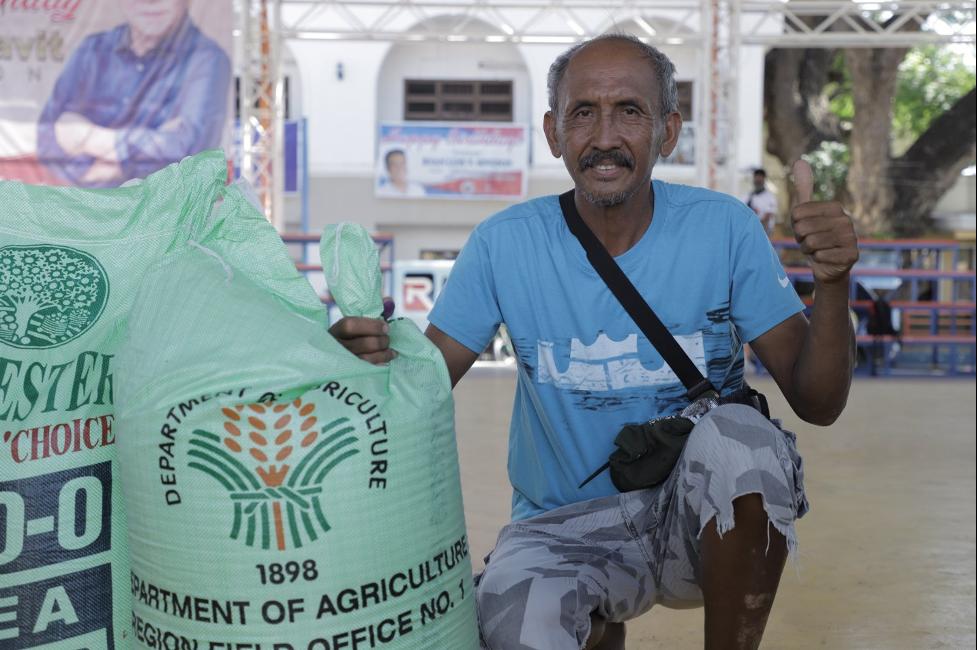
In addition, a total of 82,143 farmers and 1,1 agricultural extension workers (AEWs) bene from the conduct of 903 training and trainin related activities such as School-On-The-Air Farmer Field School, among others In recognition of the vital role that AEWs play a the forefront of providing agriculture extens services to the rice farmers, 6,473 extension workers, as well as 218 Agricultural and Fishery Council (AFC) representatives and 2,196 Local Farmer Technicians (LFTs), were given incentives Moreover, 279,614 site-specific advisories and recommendations were provided to 51,966 farmers through the deployment of the Rice Crop Manager Advisory Service (RCMAS) to aid in their decision-making
On rice research and development, the program conducted various production, extension, policy, irrigation, and market-related R&D activities This year, 18 were completed, 92 are still ongoing, and seven (7) new studies were initiated
In support to farm mechanization, a total of 513 production machinery and equipment were distributed to 513 FCAs, while 145 units of
postharvest machinery and equipment were provided to 145 FCAs On the other hand, a total of 24 rice postharvest facilities such as multi-purpose drying pavements, palay sheds, and warehouses were constructed benefiting 24 FCAs
Further, an aggregate service area of 1,085 hectares was generated from the construction of 65 small scale irrigation projects (SSIPs) consisting of diversion dams, small farm reservoirs, small water impounding projects, solar-powered fertigation system, and spring development, as well as the construction of 16,998 meters of irrigation canals The rehabilitation of SSIPs and irrigation canals, on the other hand, restored up to 1,066 hectares of irrigated rice areas.
Fund (RCEF) Program. By virtue of Republic Act No. 11203 otherwise known as the “Rice Tariffication Law”, the Rice Competitiveness Enhancement Fund (RCEF) or Rice Fund was created to help improve rice farmers’ competitiveness and income amidst the liberalization of the Philippine rice trade policy that lifted quantitative restrictions on rice imports and replaced it with tariffs, among others. RCEF has a Php10 billion annual appropriation for six years (2019-2024), to be allocated and disbursed to its four (4) components, namely: (1) Rice farm machinery and equipment (50%); (2) Rice seed development, propagation, and promotion (30%); (3) Rice extension services (10%); and (4) Expanded rice credit assistance (10%)
Mechanization Component:
This year, a total of 3,953 FCAs benefited from PHilMech’s distribution of 14,424 units of rice farming machinery and equipment which include four-wheel and hand tractors, floating tiller, precision seeder, walk-behind, and riding type transplanters, rice reaper, combine harvester, axial flow thresher, and mobile rice mill, among others
Seed Component:
Under the Seed Component, a total of 5,000,413 bags (20kgs per bag) of inbred seeds were distributed by PhilRice across three (3) planting seasons, corresponding to an estimated area planted of 2,324,033 hectares
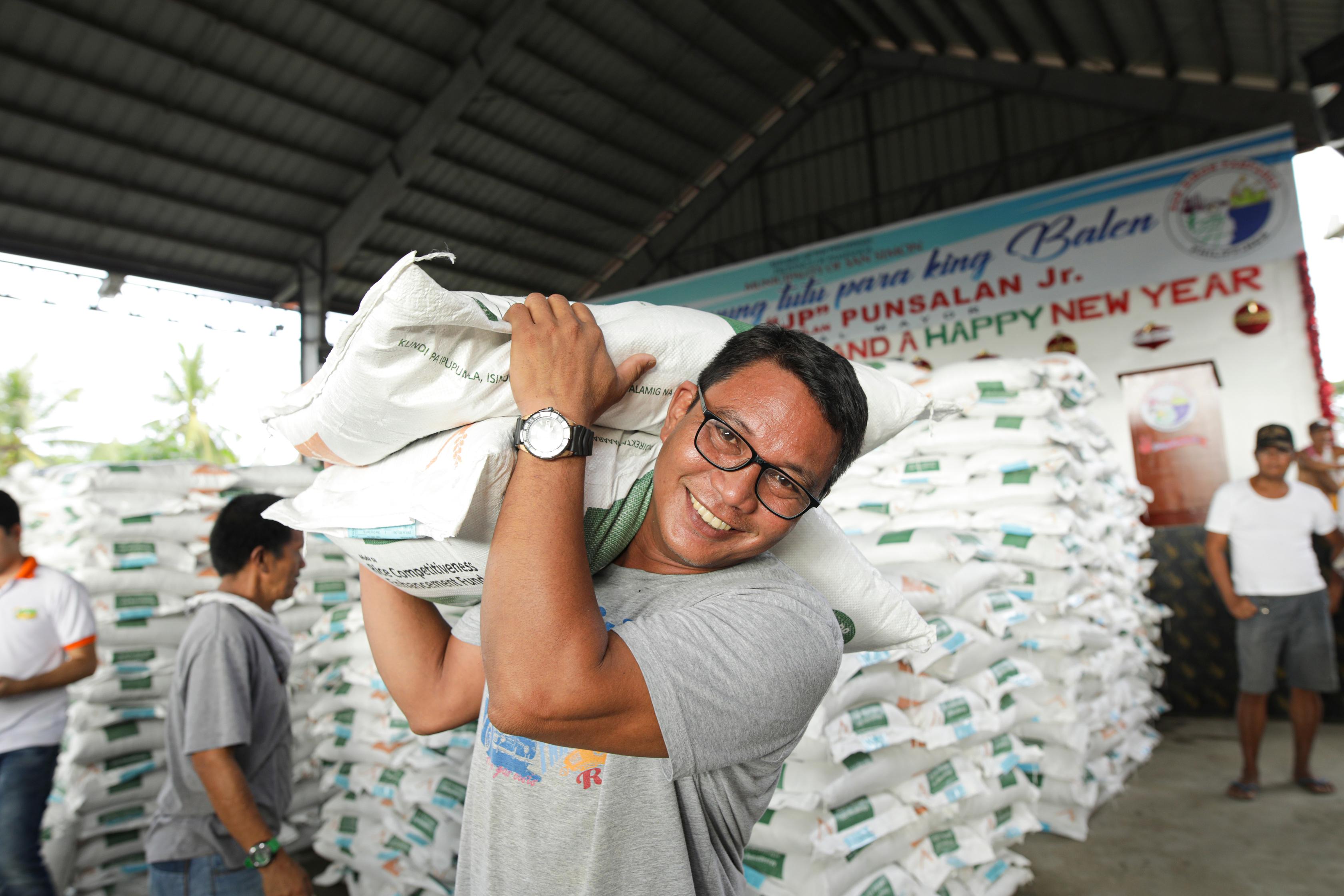
This has served rice farmers from 42 RCEF Seeds priority provinces (details of which are as follows):
2021 Dry Season (16 September 2020-15
March 2021): 661,567 beneficiaries
2021 Wet Season (16 March-15 September 2021): 713,052 beneficiaries
2022 Dry Season (16 September 2021- 15
March 2022): 615,767 beneficiaries
Extension Component:
The RCEF Extension Component has provided scholarships to 52,421 rice farmers and trained 49,625 participants comprised of 46,759 farmers, 1,238 trainers, 167 specialists, and 1,461 other extension intermediaries (analysts, inspectors, etc ) This year, a total of 63 farm schools were established which were utilized to capacitate farmer-beneficiaries under the RCEFFarmer Field School (RCEF-FFS) approach, providing farmers with an innovative, participatory, and interactive learning platform
To ensure the development of viable and sustainable enterprises among the FCA beneficiaries, 2,042 FCAs were capacitated and assisted in preparing their business or operational plans.
Credit Component:
In 2021, a total of Php656 million with zerointerest and non-collateral loans were granted to 2,636 individual farmers and 62 borrower organizations/cooperatives with about 24,000 members/sub-borrowers.
With the converged efforts of the RCEF Implementing Agencies, the program was able to substantially contribute to improving the output of the country’s rice industry The assessment of emerging benefits among RCEF beneficiaries conducted by PhilRice revealed that the seeding rate decreased by 33% and the average yield increased by 0 56 ton/hectare resulting in an increase in the approximate gross income of about Php10,000 per hectare (based on the PhilRice M&E result for DS 2019 and DS 2021)
Meanwhile, the comparative study conducted for WS 2019 and WS 2021 also showed a 0 34 ton/ha increase in yield and a projected incremental gross revenue per hectare of Php 5,100 at Php15/kg of fresh palay
Rice Farmers Financial Assistance (RFFA). The RCEF-RFFA, which was launched in October 2021 and funded under RCEF excess tariff revenues from rice importation, aims to provide cash assistance amounting to Php5,000 to eligible rice farmers registered in the RSBSA and are owning/tilling a rice area of two (2) hectares or less
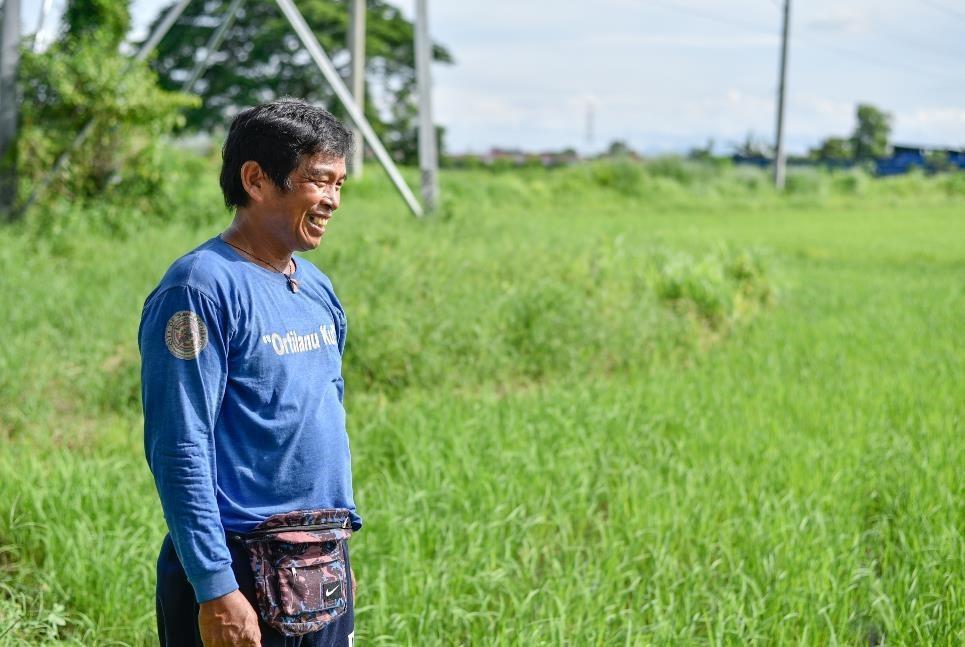
The cash assistance was provided through the Interventions Monitoring Card (IMC), a QR-codebearing transactional card that also serves as an identification card for the farmer-beneficiaries The Department partnered with Land Bank of the Philippines (LBP) and the Development Bank of the Philippines (DBP) for the rollout of RFFA
As of December 31, 2021, the Department, in cooperation with DBP and LBP, was able to provide cash assistance through the DA-IMC to 169,630 farmer-beneficiaries amounting to Php848 15 million
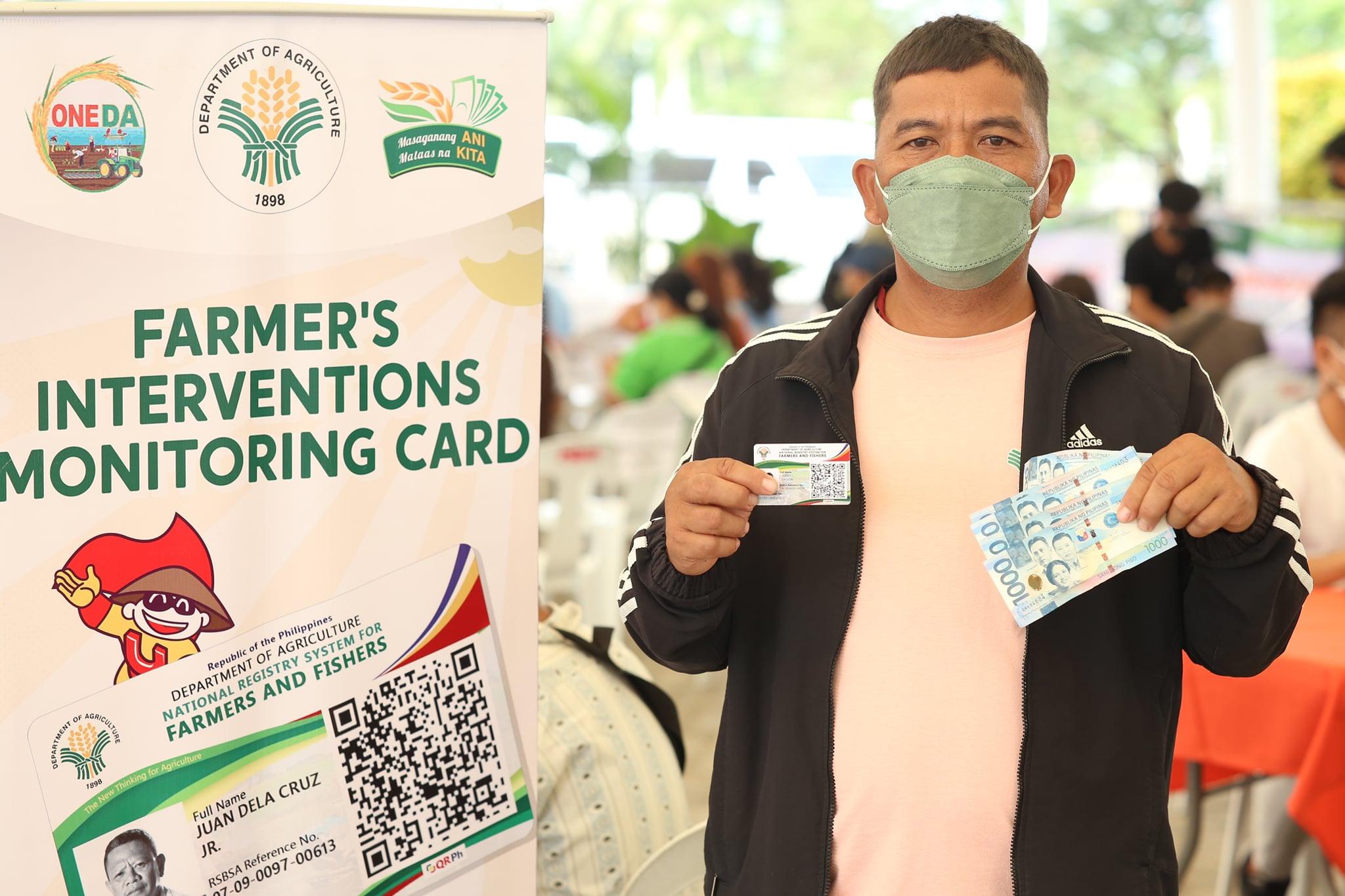
Rice Research for Development. In 2021, PhilRice has implemented 66 rice research for development (R4D) projects that developed yield-enhancing and cost-reducing technologies such as varieties, machines, and crop management options and platforms

On variety development and germplasm conservation:
Facilitated the approval of eight (8) PhilRicebred inbred varieties for commercial release, three (3) of which are for irrigated lowland;
Evaluated 1,106 inbred rice lines, cytoplasmic-genetic male sterile (CMS) parent lines, and germplasm accessions for resistance to four (4) diseases and three (3) insect pests;
Agro-morphologically characterized 2,821 traditional rice varieties (TRV) germplasm accessions; and
Tested stress-tolerant varieties that yielded encouraging results: two (2) salt-tolerant varieties were identified as putatively tolerant to both drought and salinity stress at the seedling stage; one (1) salt-tolerant variety was also submergence-tolerant at the seedling stage; two (2) salt-tolerant varieties performed well under managed drought stress condition during the DS evaluation; and one (1) heat-tolerant variety exhibited drought tolerance at the seedling stage.
The Philippines also became the first country to approve "Golden Rice" for commercialization With the release of the biosafety permit for the commercial propagation of “Golden Rice” in July 2021, DA-PhilRice, in collaboration with the International Rice Research Institute (IRRI) and other partners, has taken steps towards bringing the vitamin A-enhanced rice to farmers through the production of seeds Limited amount of seeds will be made available for the pilot-scale deployment next year, while succeeding seeds produced will be distributed in the last quarter of 2023 in areas with high prevalence of vitamin A deficiency

Ongoing development of three (3) ecological and non-chemical ways of managing pests and diseases;
Uploaded soil information of 22 provinces in the PhilRice Database Management Portal, and assessed and determined the best alternative nitrogen topdress for organicbased nutrient management in normal, acidic, and saline paddy soils; Developed, updated, and improved various data warehouses and smartphone application digital innovations such as the Minus-one Element Technique (MOET) App, Leaf Color Computing App, Weather-Rice-
On Integrated/Smarter Crop Management:Nutrient Decision Support System (WeRise), Rice Crop Manager Advisory Service (RCMAS), Rice Seed Information System (RSIS), PalayStat, as well as other platforms for Physical Inventory System, Rice Seed Production Traceability Monitoring, and Germplasm Management System which were made accessible to the public; and
Maintained and continuously updated the Philippine Rice Information System (PRISM) rice maps for 17 regions which contain data on rice area estimates, yield and production estimates, field profile, cultural management, prevailing palay prices, areas at risk and affected by flood/drought, among others.
On climate change adaptation:
Established technology demonstrations on diversified rice-based farming such as Integration of rice-duck-cash crop production; Vermicompost production; Nutraceutical crop production; Sorjan Cropping System; Climate resilientvegetable production; and Buffalo-dairy production, among others through Palayamanan; and
Established a multi-purpose, typhoonresistant, and low-cost structure (Kwebo) for drying of paddy, mushroom production, or livestock and poultry raising.
On mechanization:
Ongoing development of 12 rice mechanization technologies for land preparation, crop establishment, care, and harvest, postharvest/value-adding, and power generation which are in the various stages of the technology development process (prototype development, pilot and field testing, and enhancement)
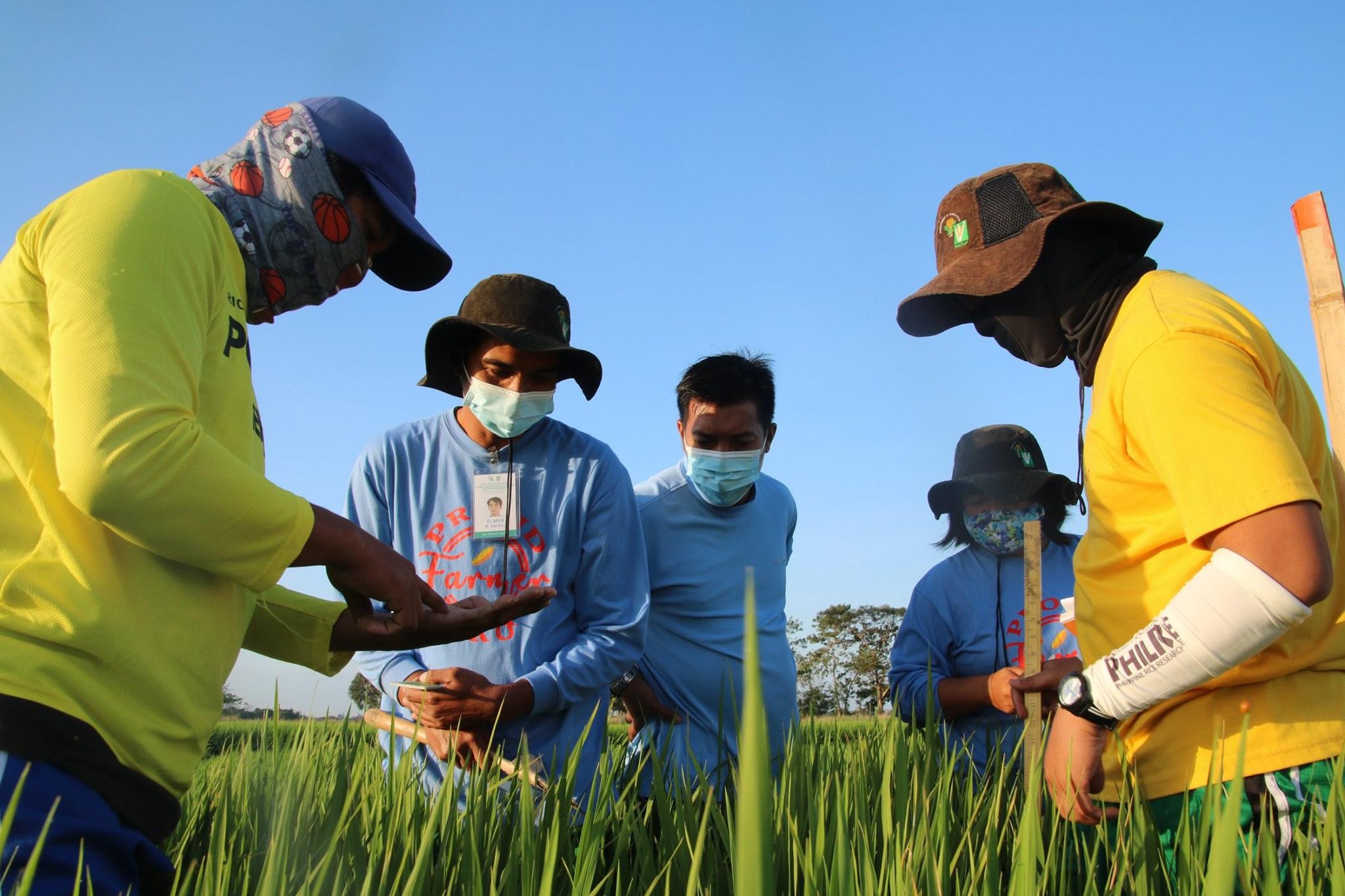
These were promoted through training, field days, technology demonstrations, exhibits, and knowledge products and materials. Various knowledge-sharing and learning and other information dissemination activities were conducted using multi-media platforms such as the PhilRice Text Center (PTC) for the dissemination of text blasts, radio segments, PalayAralan live streams, technology demonstrations, and rice education briefings and field tours.
PhilRice developed position papers and policy briefs/notes on truthful labeling, comparative sources of rice production growth, low-quality rice, tariff reduction on rice imports from nonASEAN countries, imposition of suggested retail price (SRP) on rice, rice categories/classification, and supply and demand outlook and price projections among other existing and emerging rice sector issues for the benefit of lawmakers and partner-agencies.
Rice Business Innovations System (RiceBIS) Community Program. The RiceBIS Community Program of PhilRice draws on the clustering approach and agribusiness framework to address farmers’ needs from production, processing, and marketing to ensure available and affordable rice in a resilient and sustainable manner RiceBIS promotes productivity through improved technology adoption and agripreneurship by intensifying the deployment of technologies to the ground level; spurring the agro-enterprise potential of farmers; and promoting integrated, diversified, and intensified farming, and varied rice and ricebased sources of income.
As of December 2021, a total of 23 RiceBIS communities were established across 16 provinces nationwide, engaging 194 farmerclusters covering 5,786 rice farmers with 4,956.29 hectares of farm area. Each community organized a site-working group (SWG) that partners and works closely with LGUs, DA and its attached agencies, academe, business and financing institutions, and other government agencies to support the development of agro-enterprises. In addition, the program was able to train 6,658 farmers through the conduct of various capacitybuilding activities on rice production and processing, agro-enterprise development, and organization-building and strengthening, among others.
As a result of these interventions, the overall yield average across sites increased by 4.71% during 2021 WS compared to the 2016 baseline, and by 16% during 2021 DS versus 2017 baseline data. On the other hand, the cost of production was reduced by Php1.37/kg during 2021 WS and Php3.14/kg during 2021 DS compared to 2016 and 2017 baseline data, respectively.
Across all RiceBIS communities, a total of 40 rice and rice-based agro-enterprises are being sustained and monitored for collective marketing. These include brown/pigmented/milled rice, custom service provision of farm machinery, crop production loans, agricultural inputs trading, rice brew, and seed and mushroom production For 2021 DS, farmers’ income grew from Php 17,510 to Php 24,005, or an increase of 37%
Palay Procurement. The National Food Authority (NFA) buys palay from local rice farmers as well as farmers’ organizations and cooperatives at a government-set price of Php19 00/kg for clean and dry palay In 2021, NFA procured a total of 9,116,142 bags (455,807 MT) of palay from local producers equivalent to Php8 66 billion
More farmers were encouraged to sell their produce to NFA and take advantage of the relatively higher buying price, which allows them a Php2 35/kg benefit over the average prevailing farm gate price of Php16 65/kg (PSA, Q4 2021).
Distribution. The NFA maintains rice buffer stocks in strategic locations to be used for emergency situations and to sustain the disaster relief programs of the government during natural or man-made calamities. As of December 31, 2021, NFA maintains a rice inventory of 4,193,199 bags or 209,659.93 metric tons (MT) nationwide (excluding commercial and household stocks), which is good to last for 6.25 days based on the National Daily Consumption Requirement of 671,280 bags or 33,564 MT. Based on Average Daily Sales of 58,795 bags, the inventory is good to last for 71.32 days, with a market participation rate of 5.68%.
Moreover, a total of 8,261,806 bags or 413,090 MT of government rice were supplied to consumer markets, LGUs, DSWD, and other government and relief agencies equivalent to Php10 33 billion at Php25 00 per kilogram Of this volume, about 21 34% was allotted to support various COVID-19 relief efforts
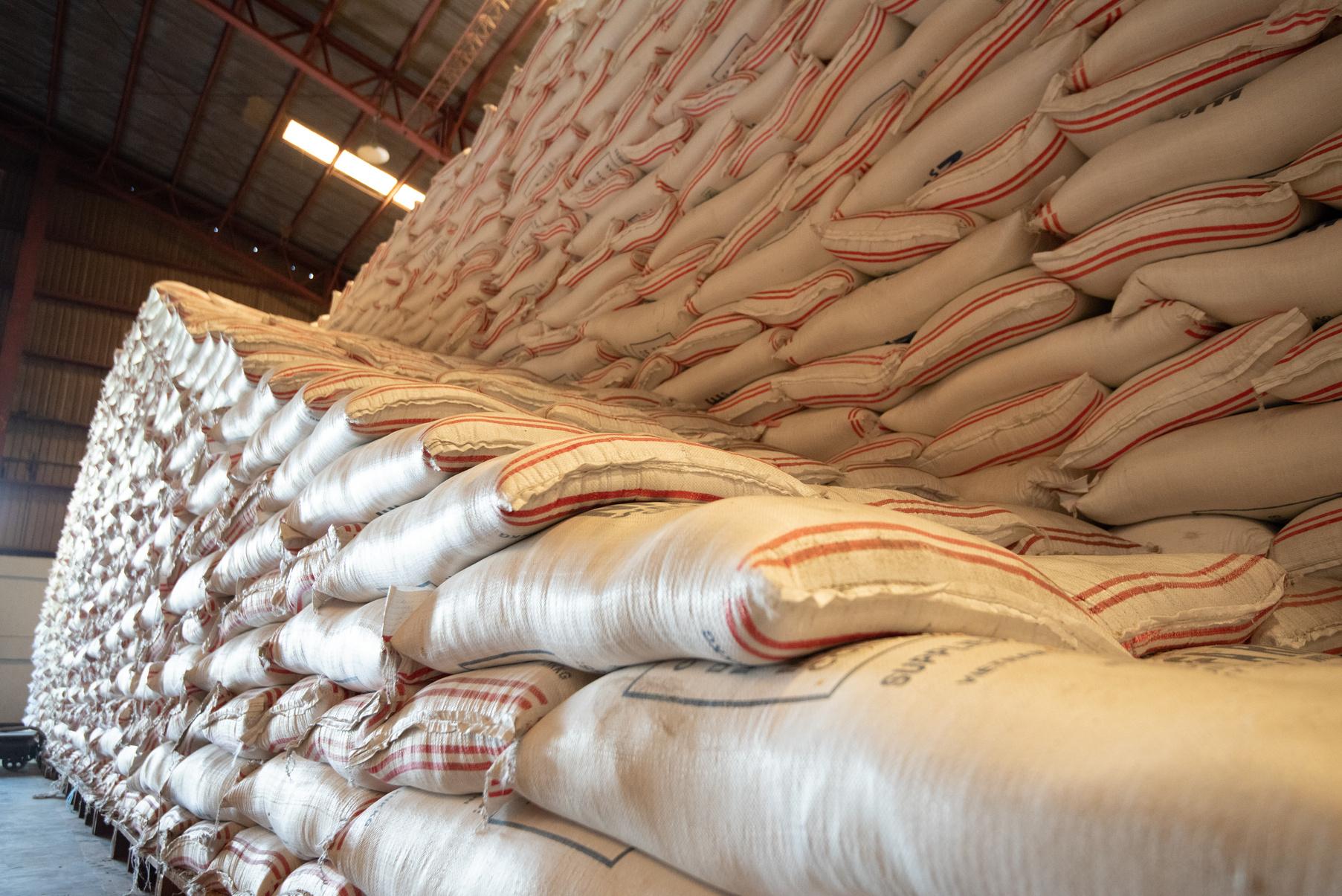
The National Corn Program (NCP) endeavors to develop a competitive local corn and cassava industry contributing to the growth of the livestock, poultry, and food sectors It aims to increase the production of quality corn and cassava for human consumption, feeds, and industrial uses, as well as empower the farmers and support various stakeholders to be more cost-efficient, profitable, sustainable, and resilient
In 2021, the program distributed a total of 865,420 kilograms of white and yellow corn seeds, 5,851,750 cassava cuttings, and 5,683,250 kg of fertilizer to 82,576 individual farmer-beneficiaries and 1,045 groups In addition, the NCP positioned 486,216 kilograms of corn seed reserve nationwide
Through the program, a total of 403 training and training-related activities on GAP, production and postharvest, livelihood, and pest management were conducted benefiting 11,756 participants. As partners of the program on the ground, 2,401 extension workers and 73 AFC representatives were given incentives. Moreover, a total of 227 techno demonstrations and model farms were established nationwide showcasing and promoting corn, cassava, and sorghum production technologies. On research and development, a total of 53 studies were conducted while 35 researches on corn and cassava were funded by the program and implemented by SUCs, RFOs, and Attached Agencies.
Further, a total of 349 units of agricultural machinery and equipment were distributed and 40 postharvest facilities were constructed that benefited 389 groups and associations. On irrigation, 1,200 hectares of new service area were generated and 341 groups benefited from the installation of 392 units of SSIPs.
Fall Armyworm (FAW) Management. The fall armyworm (FAW) was first reported in June 2019, in Piat, Cagayan, affecting corn plants. From January to December 2021, FAW infestation has been monitored in 17,424 hectares of corn farms nationwide
With DA’s aggressive campaign to eradicate FAW, 16,420 hectares or 94% of the reported affected area have been treated already. The DA has provided Php150-million worth of assistance to help farmers control FAW infestations under the Quick Response Fund (QRF) and allocated Php30 million from its FY 2021 budget for the procurement and distribution of pheromone lures and inorganic pesticides.
An additional Php100 million was also allocated under Bayanihan 2 to bolster the Department’s existing initiatives in managing the incidence of fall armyworm infestations in the country and assist corn farmers during the 2021 DS A total of 62,280 liters of pesticides, 27,415 packs of pheromones, and 31 units of power sprayers were distributed to 45,412 affected individual farmers and 112 groups In addition, pest awareness materials composed of 3,985 pieces of tarpaulins and 20,080 leaflets were distributed in support of the project's information campaign and to facilitate the early detection of FAW
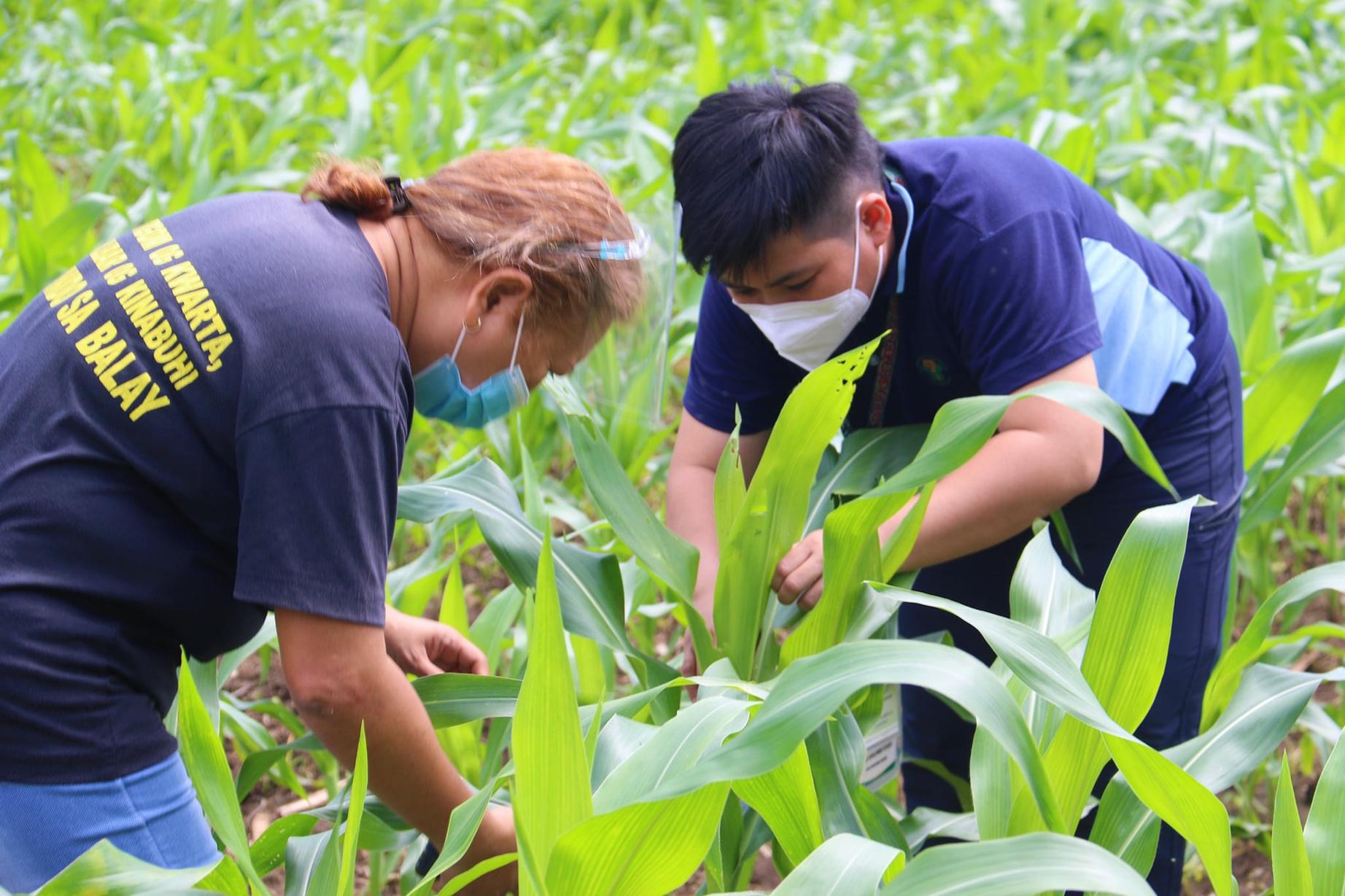
The Department, through the National Livestock Program (NLP), promotes the accelerated growth and sustainable development of the livestock, poultry, and dairy sub-sectors through the implementation of cohesive programs to ensure meat, egg, and milk sufficiency as well as the prosperity of the local livestock, poultry, and dairy farmers
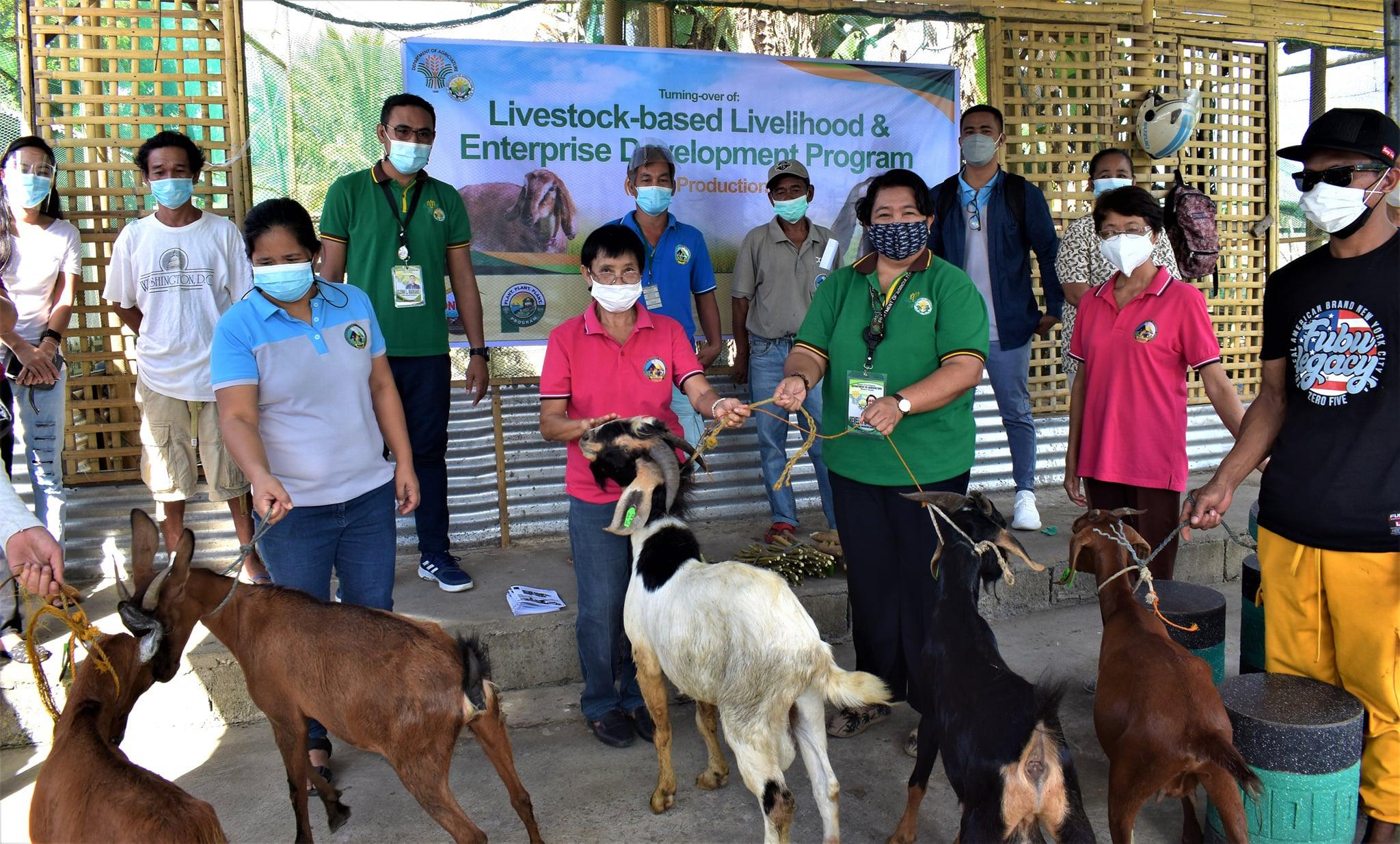
The NLP maintains and supports 43 Research and Development Centers, Government Stock Farms, and Livestock Production Centers under the management of DA RFOs and the Bureau of Animal Industry (BAI) These facilities serve as the Department’s ready source of breeding and upgraded animals as well as animal stocks for distribution during disasters and calamities Moreover, these stations also serve as learning venues for the conduct of various training activities for clients and farmers on animal and forage production, among others
Through these facilities and under NLP’s various assistance programs, start-up inputs which include animals, forage seeds, planting materials, vaccines and biologics, and semen straws, among others were provided to help create more income-generating opportunities for livestock and poultry production and uplift marginalized farmers while increasing the inventory of animals in the regions through the provision of quality stocks
In 2021, a total of 8,476 individuals and 1,594 groups benefited from the various production support services of the program This includes the distribution of 168,344 head of livestock and poultry animals; 2,876,121 pieces of forage planting materials and 1,311 kilograms of seeds to help expand and develop the country’s feed base; 3,920,290 doses of biologics, vaccines, and drugs, and 16,027 testing kits to help prevent and control animal diseases; and 234,406 semen straws from genetically superior cattle, carabao, swine, and goats for the implementation of the Unified National Artificial Insemination Program (UNAIP), among others
In addition, a total of 447 groups and 10 individuals benefited from the distribution of 804 units of production and postharvest machinery and equipment, and the establishment and construction of 27 production and postharvest facilities.
Moreover, a total of 6,473 extension workers and 10,050 farmers and other beneficiaries were provided with training support services through the conduct of 55 training and trainingrelated activities. A total of 41 learning sites and technology demonstrations were established and maintained for the period. On research, the program conducted 25 R&D activities. Of these, one (1) was completed and 10 were initiated this year while 14 are still ongoing.
Dairy Industry Development. The Philippine Carabao Center (PCC) and the National Dairy Authority (NDA) work collaboratively towards the development of the Philippine dairy sector, specifically to generate more livelihood opportunities in the countryside This allowed PCC and NDA through their respective set of programs and interventions to help increase the income of small rural-based dairy farmers, as well as contribute to food security and to provide safe, quality milk products and proper nutrition for consumers
For 2021, the PCC, through its Regional Centers, provided production support services on forage production and improved feeding system, animal nutrition and animal health, genetic improvement, reproduction, milk production and processing, and cooperative development to 184,949 clients. Moreover, 157,365 semen straws were distributed to village-based artificial insemination technicians (VBAITs), LGU technicians, and other institutional partners across the PCC network coverage areas. A total
of 26,346 calves were produced from previous AI services rendered
On market development, a total of 205 organized dairy groups were assisted and were able to trade 5,087,903 kilograms of buffaloderived products amounting to Php776 6 million In addition, the PCC was able to establish 13 Dairy Box Outlets and 13 processing plants through the implementation of the Carabao-based Business Improvement Network (CBIN) Project and Bayanihan Project in support of market services to farmers and make carabao-derived products more accessible to the public
A total of 17 organized groups of farmers were also able to supply milk to the milk feeding programs of the Department of Social Welfare and Development (DSWD) and the Department of Education (DepED). Further, a total of 21,265 clients participated in training programs and accessed knowledge products as well as IEC materials on various dairy technologies.
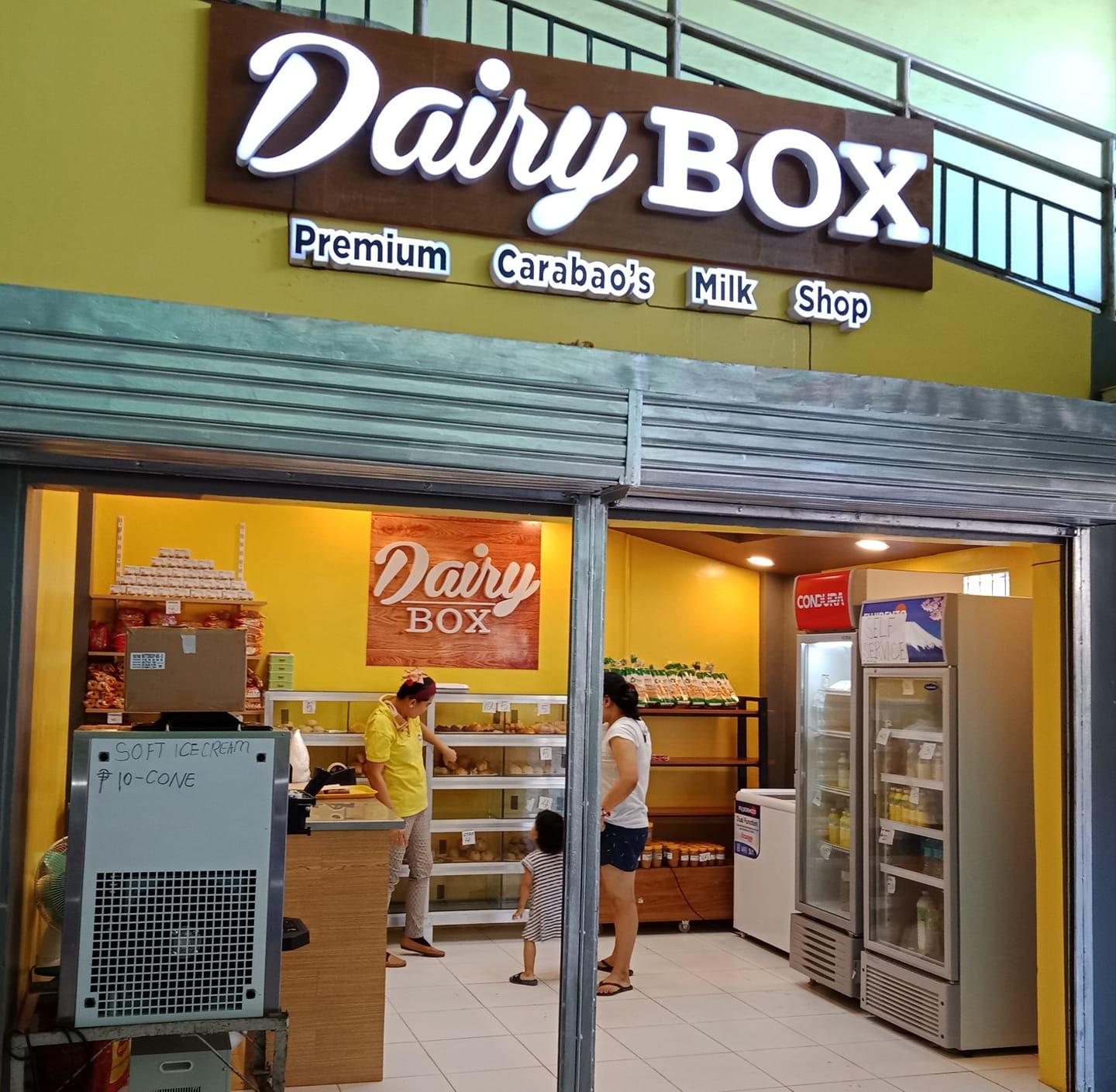
The NDA, for its part, maintains a total dairy animal inventory of 64,884 in NDA-assisted areas as of December 2021 Of these, 14,472 dairy animals on the milk line generated an aggregate milk production of 20 29 million liters
As part of the continuing efforts to build up the dairy herd and boost local milk production, a total of 100 head of locally-produced dairy animal repayments from previous dairy farmerbeneficiaries of the NDA Buyback Program were bought and distributed to interested dairy farmers and cooperatives valued at Php9 4 million In addition, a total of 3,206 imported dairy goats (Saanen and British Alpine) were brought in, accepted, and distributed to 41 beneficiary organizations and 312 farmerbeneficiaries nationwide. In line with these efforts, a total of 12,707 animals were bred, while previous breeding and upgrading activities led to the production of 10,528 additional calves.

Under its Dairy Enterprise Development Program, NDA distributed, through a loan program, a total of five (5) units of chillers to five (5) dairy cooperatives in Zambales, Isabela, and Bulacan; five (5) units of milk cans to three (3) dairy farmers in Negros Oriental; and one (1) unit of forage chopper and four (4) units of chest type freezer to one (1) dairy association in Cebu. In partnership with DA-AMAS, a series of Kadiwa Agribiz Webinars and Dairy-Skwela Webinars were conducted to promote dairy farming as a viable business enterprise as well as the various investment opportunities in dairy production and processing.
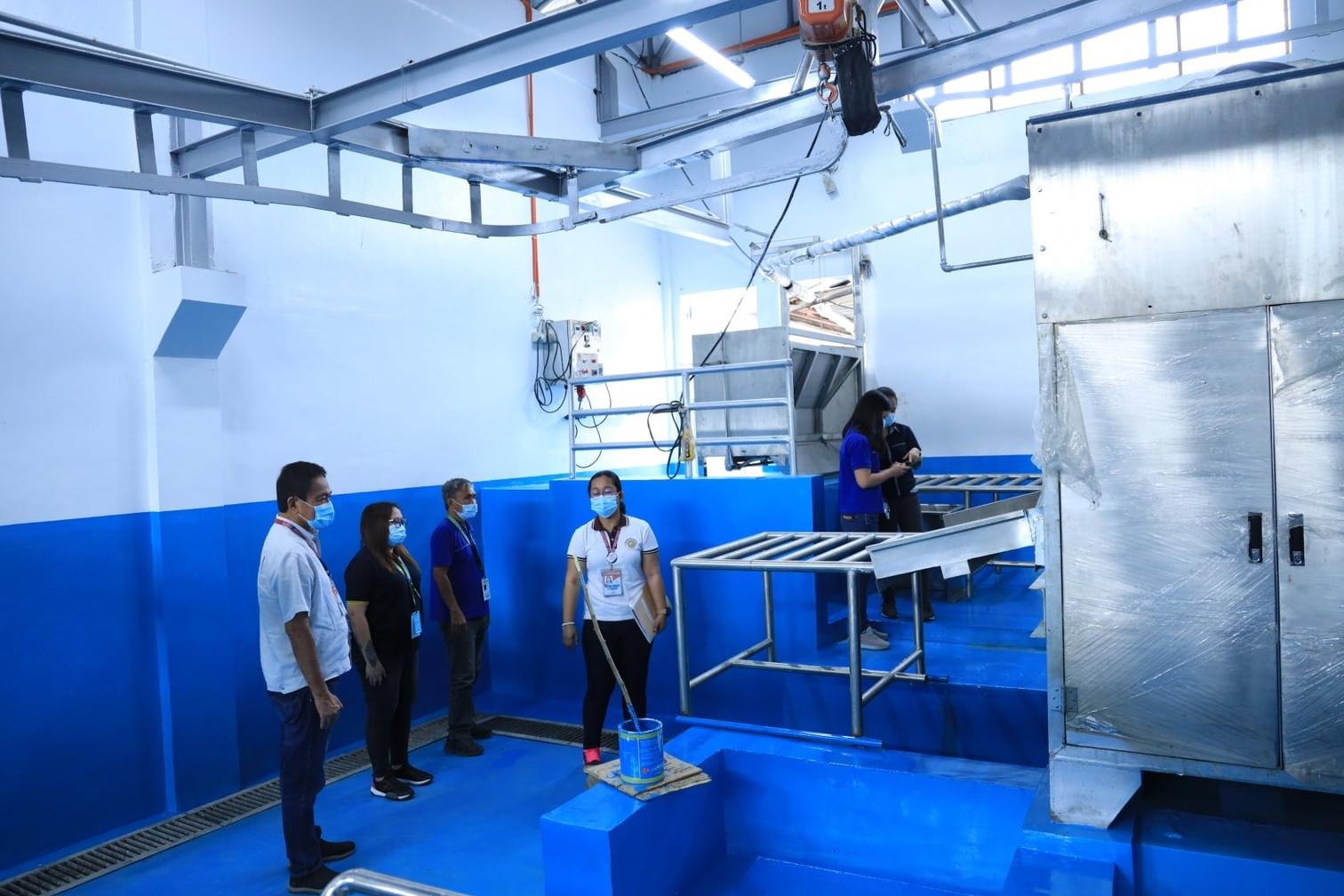
By virtue of Republic Act 11037 or the Masustansyang Pagkain Para sa Batang Pilipino Act, the NDA is also implementing the milk feeding initiatives alongside PCC and in partnership with DepEd and DSWD As of December 2021, a total of 56 dairy cooperatives, private farms, SUCs, and LGUs were tapped to supply 9 95 million liters of milk to DepEd's school-based feeding program and DSWD's supplemental feeding program that benefited 1,515,349 children Further, NDA also linked nine (9) Drug Treatment and Rehabilitation Centers (DTRCs) in Quezon City, Pasig City, Leyte, Cagayan de Oro, Davao City, and Davao de Oro to dairy farmers, cooperatives, and processors that can provide quality milk and milk products through a partnership forged with the Dangerous Drugs Board (DDB) that aims to incorporate the use of Nutrition Management Guidelines in the treatment and rehabilitation of persons who use drugs (PWUDs).
Meat Establishment Improvement Program (MEIP). The Department, through the National Meat Inspection Service (NMIS) MEIP, extended technical and financial (cost-sharing scheme) assistance to three (3) LGUs in order for their existing meat establishments to comply with national standards, namely: San Jose, Occidental Mindoro; San Miguel, Iloilo; and El Salvador City, Misamis Oriental. This year, two (2) slaughterhouses in Sablayan, Occidental Mindoro and Santiago City, Isabela were completed and turned over. In addition, two (2) slaughterhouses in Tabuk City, Kalinga and Santa Ana, Cagayan were already completed pending turnover.
In support of the thrust and priorities of the Department, the Philippine Coconut Authority (PCA) implemented the following productivity management programs in order to provide a holistic approach in the delivery of interventions at the farm-level and establish a well-managed production system that is responsive to the demands of the industry
Accelerated Coconut Planting and Replanting Project (ACPRP):
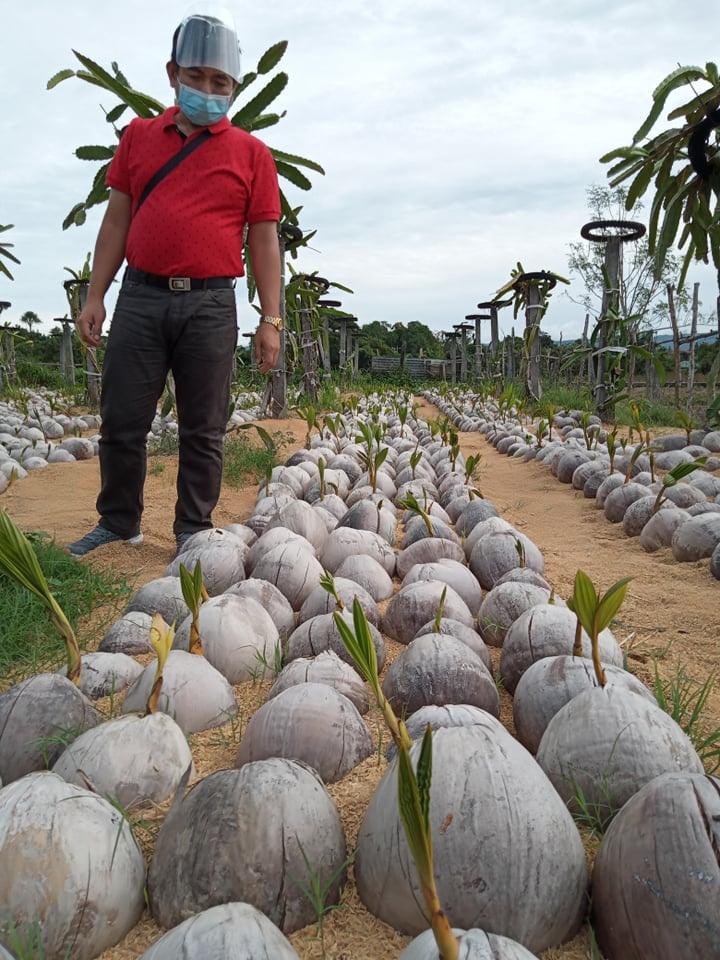
The project involves the planting and/or replanting of either Open-Pollinated Variety Tall or Dwarf good quality coconut seedlings to replace senile coconut trees or those that were totally destroyed by typhoons or other natural calamities. The ACPRP has three components, namely: (i) Participatory Coconut Planting Project where coconut farmers are given incentives of Php40.00 per transplanted and duly stabilized seedlings to encourage them to plant more coconut trees; (ii) Coconut Seedling Dispersal Project that involves the negotiated procurement of seedlings including nursery operations through the participation of local communities for project sustainability; and (iii) Indigenous People Outreach Program that prioritizes beneficiaries from the Indigenous Peoples and minority groups in the country. For 2021, a total of 1,551,487 coconut seedlings covering an area of 12,141.84 hectares were planted by 12,966 farmer participants.
The CFP is a quick turnaround measure of increasing coconut production to address the increasing demand for new and emerging coconut products such as coco water and Virgin Coconut Oil aside from the traditional products such as coconut oil and desiccated coconut, among others. The project involves the application of Agricultural Grade Salt Fertilizer (AGSF) or a combination of AGSF and Coconut Coir Based Organic Fertilizer (CCBOF) to improve yield
For the period, 273,200 coconut trees were fertilized covering 2,732 hectares benefiting 2,972 coconut farmer-beneficiaries
The project is being implemented to address the scarcity of potential sources and supply of good quality seed nuts or seedlings that can be made available for planting to sustain future planting and replanting projects of the PCA. This involves a partnership with LGUs, SUCs, and the Coconut Farmers Organizations (CFOs) or Agrarian Reform Beneficiaries (ARBs) or private individuals for the establishment of small village-based facilities through a Memorandum of Agreement or Contract of Lease.
For 2021, a total of six (6) new seed farms were established in Marinduque, Camarines Norte, Cebu, Samar, Zamboanga del Norte, and TawiTawi covering 50 7 hectares planted with recommended coconut varieties A total of six (6) proponents/partners (SUCs, LGUs, CFOs, and individual farmers) were engaged in the project
The project is designed to promote and institutionalize coconut-based enterprise through an integrated resource-service convergence approach to increase farm productivity and incomes of the small coconut farming communities The project, through its various components (intercropping, animal integration, and community/household-level coconut processing) involves the establishment of coconut-based enterprises which may be CFOs or cooperative and establishing start-ups or expanding mature community-based enterprises engaged in coconut processing, intercropping and livestock raising It builds on the capacities of the CFO’s/cooperatives to engage in agribusiness.
This year, the project intercropped a total of 2,166 hectares of coconut farm area with vegetables, bananas, and corn. Moreover, six (6) coconut-based enterprises were established in Regions V, VI, and VII while the construction of a processing facility/building in Alabat, Quezon is already ongoing.
The project, pursued in complementation with the coconut industry, is designed to promote oil palm plantation development through organized growers or out-growers schemes with marketing tie-ups with the oil millers. The project has two (2) components, namely: (i) Oil Palm Planting/Replanting which involves the planting of oil palm in open and highly suitable areas and/or replanting of existing oil palm plantations using high yielding varieties along with the provision of fertilizer support for the first few months from planting; and (ii) Rehabilitation Thru Fertilization that involves the provision of appropriate fertilizer to farmers with existing plantations of oil palm trees aged 4-20 years old and an average production below 10MT Fresh Fruit Bunch (FFB) per hectare, and those with outgrowership arrangements with Oil Millers
As of December 2021, a total of 72,069 oil palm seedlings were planted in Regions IX, X, XIII, and BARMM, benefiting 441 oil palm growers while 252,605 oil palm trees were fertilized benefiting 1,533 oil palm growers

Incentivized Coconut Planting and Replanting:
The project involves the introduction of new planting of coconut trees in Northern and Central Luzon including the Cordillera Region and continuous expansion of coconut plantations in other regions Potential coconut farmers in the area are encouraged to plant coconut through the provision of the required planting materials with cash incentives for intensifying the planting of coconut trees in open areas as well as coastal areas In 2021, a total of 3,823,802 good coconut seedlings were planted covering a total area of 28,914 33 hectares benefiting 31,978 farmer-participants
This project involves the rehabilitation of fruitbearing coconut trees less than 50 years old, with relatively high chances of the increased commercial value of production, through the application of appropriate inorganic and/or organic coconut fertilizers This year, the project fertilized a total of 1,310,900 low-bearing trees covering 13,109 hectares of coconut farm area benefiting 13,480 coconut farmers
Efforts to promote crop diversification and animal integration in coconut farms aim to augment the income of coconut farmers, enhance food supply and mitigate hunger Intercropping was implemented in newly planted, established, or replanted coconut farms using short-gestation crops such as vegetables, corn, sweet potato, cassava, and banana
The assistance is complemented with fertilizer subsidy to ensure crops’ early productivity and ample harvest Similarly, the integration of livestock and poultry animals was also pursued in suitable areas planted with coconut and oil palm
In 2021, a total of 42,323 hectares of coconut farm area were intercropped benefiting 41,574 farmers A total of Php122 4 million incentives were also provided to coconut farmerbeneficiaries In addition, a total of 17,217 head of goat and chicken were distributed to 5,815 coconut and oil palm farmers
On February 26, 2021, President Rodrigo Duterte signed into law Republic Act 11524 that created the Coconut Farmers and Industry Trust Fund with a Php75 billion allocation for the next five (5) years. This is expected to jumpstart the transformation of the coconut industry. The major reforms brought about by this legislation are expected to address a combination of socioeconomic, biophysical, environmental, technology and policy challenges confronting the coconut industry.
Coconut farmers are expected to benefit from the provision of social protection including health and medical benefits, crop and livestock insurance, scholarships for their children, access to credit, and skills and certificate training, among other interventions to increase their farm productivity, welfare, and income
Funding will also be allocated to organize, strengthen, and empower coconut organizations and cooperatives, as well as to professionalize the coconut industry workforce through certificate training and continuing education that will mainstream them into the formal workforce as wage earners making them qualified for worker benefits
In addition, the passage of the CFITFA aims to bridge the gap between the supply of good quality coconuts and the growing demand from various coconut-based value chains industry clusters here and abroad through the Accelerated Hybridization and Massive Planting and Replanting Program. In order to penetrate more export markets, the legislation will also address the wide promotion and adoption of traceability and sustainable practices by providing incentives to farmers who adopt GAP or organic production systems, with support towards certification.
Recognizing the potential of systematically designed integrated coconut-based farming systems in increasing coconut productivity and farmers’ income, incentives will also be provided to coconut farmers in order to encourage them to integrate complementary enterprises with improved coconut production practices such as intercropping, dairy, poultry and livestock integration and processing/valueadding.
Moreover, comprehensive crop and livestock insurance will be included in the design of programs and interventions to enhance the resilience of farmers and enterprises to recurring extreme weather risks and changing pest and disease dynamics. Along this line, the adoption of climate-resilient coconut-based farming systems will be integrated into the planning for agribusiness corridors both for coconuts and intercrops to provide farmers with stable and diversified income sources.
These interventions were encapsulated and packaged into seven (7) National Program Components in the Coconut Farmers and Industry Development Plan (CFIDP) The formulation of the CFIDP is currently underway and is spearheaded by the PCA, in consultation with 14 national agencies identified and mandated in the law to support the implementation of interventions, as well as various national and regional stakeholders.
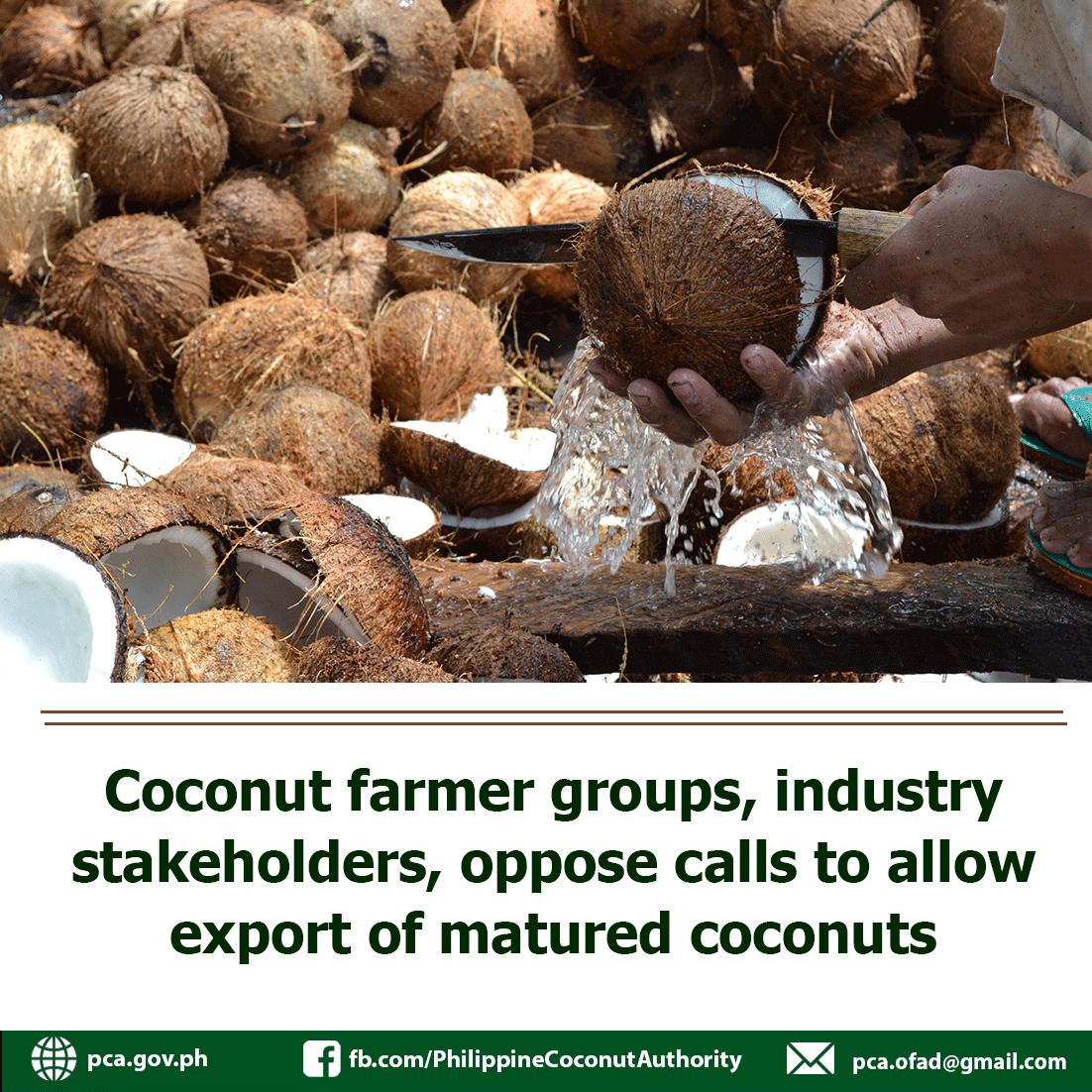
The final draft of the CFIDP will be forwarded to the National Economic and Development Authority (NEDA), Department of Finance (DOF), Department of Budget and Management (DBM), and Department of Trade and Industry (DTI), as well as the Department of Science and Technology (DOST) for review and vetting prior to the approval of the PCA Board and endorsement to the Office of the President for final approval.
While waiting for the CFIDP’s final approval, the PCA has initiated the conduct of preimplementation activities together with various implementing agencies to jumpstart the groundwork and ensure readiness for the rollout of interventions. This includes the identification of permanent and alternate representatives for both national and regional technical committees who will be responsible to undertake the groundwork for the following activities: integrated planning, implementation, monitoring, and evaluation of projects for reporting to the PCA Board and the oversight agencies; conduct of information dissemination
and orientation of their respective personnel and stakeholders; development of a strategic communications plan; drafting of the operations manual and criteria for selecting beneficiaries; preparation of the program of instruction, instructional packages, and training materials; conduct of site surveys and initial coordination with farmer organizations and LGUs; and preparation of data sharing agreements and Application Programming Interfaces or APIs for the use of system data, among others
As part of the major deliverables under CFITFA, the PCA is also facilitating the registration of coconut farmers in the National Coconut Farmers and Registry System (NCFRS) As of December 2021, the profiles of 2.178 million coconut farmers from PCA’s existing database have been updated and migrated into the new NCFRS while 1.015 million new registrations were added, totaling 3.193 million registrants in the system. Of these, a total of 2,970,866 farmers are tilling less than five (5) hectares of coconut farm and are eligible to benefit from the law.
The High-Value Crops Development Program (HVCDP) addresses food security, poverty alleviation, and sustainable economic growth by empowering high-value crop producers (fruit crops, root crops, vegetable crops, and other non-traditional crops) Through the efficient delivery of support services, diversification, and product value addition, the program aims to increase the income of farmers by creating alternative profitable business and livelihood opportunities along the value chain while substantially contributing to the shared goal of food security and resiliency
In 2021, production support services provided to stakeholders include the distribution of 378,964 kilograms of vegetable seeds (lowland/upland, legumes, and spices) to 2,431 farmers’ associations, as well as the distribution of 11 32 million pieces of quality planting materials such as coffee, cacao, mango, banana, and pineapple, among others, to 997 groups and 108 individuals to increase production and productivity of various commodities
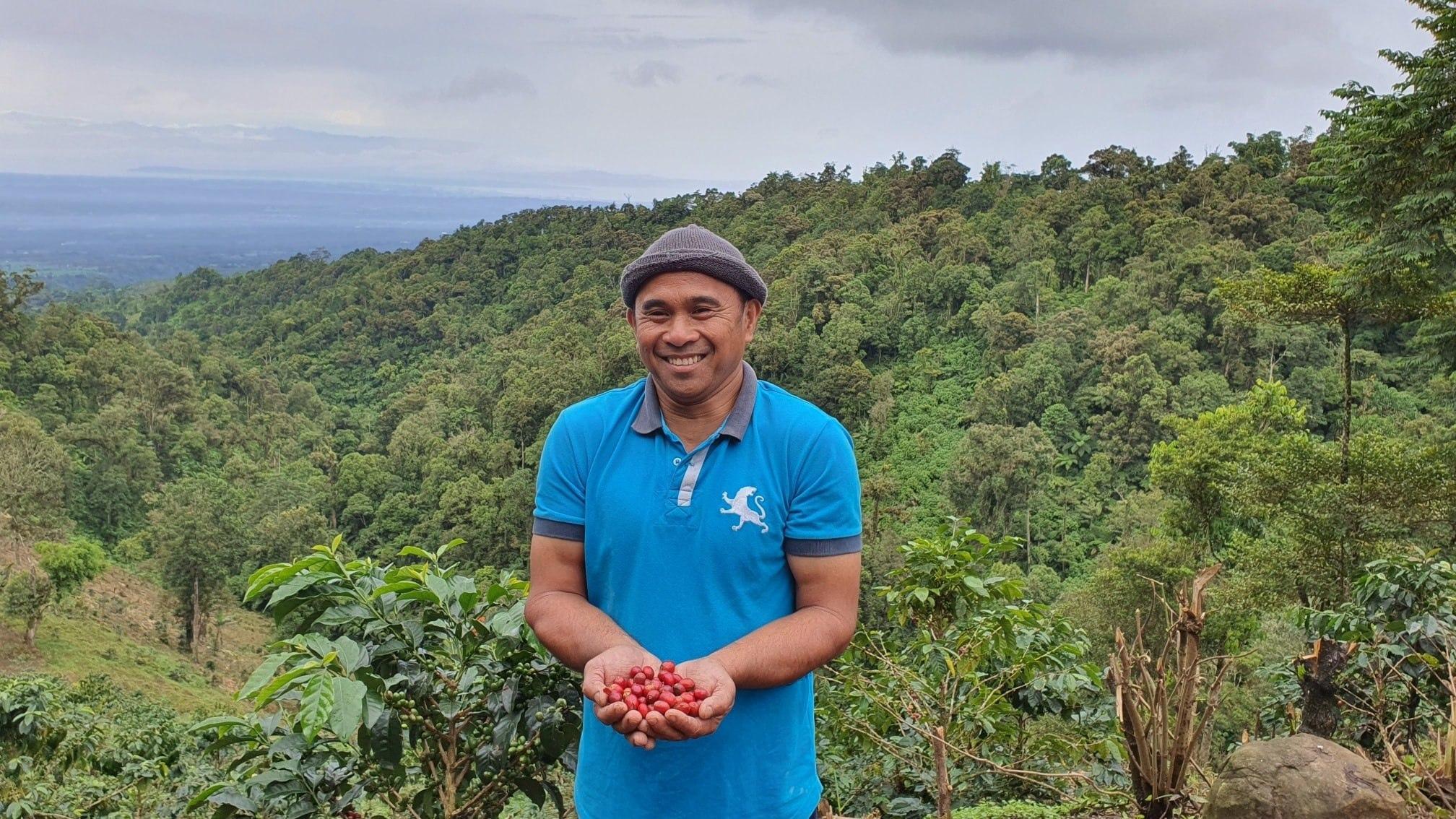
To complement, 332,180 kilograms of flower inducers and fertilizers, 294 liters of liquid fertilizer, and various farm inputs and paraphernalia were distributed to 1,389 group beneficiaries The DA Regional ROS produced a total of 20,485 83 kilograms of vegetable seeds and 8,000 pieces of planting materials as buffer stocks which are readily available to support areas damaged by natural calamities, insects, pests, and diseases
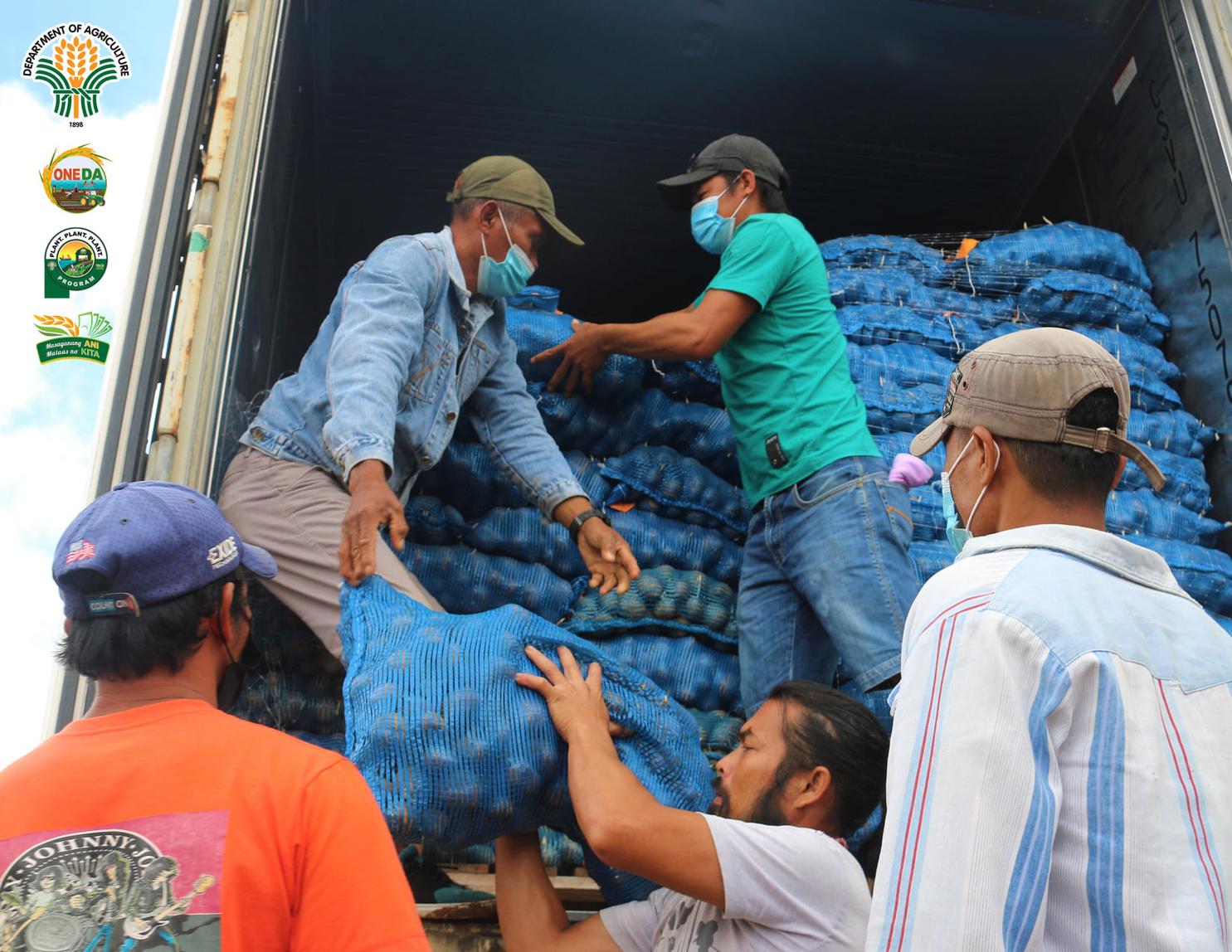
Moreover, a total of 18,420 farmers and AEWs took part in the various training activities of the program which include Package of Technology, Training of Trainers, Farmer’s Field School, School-On-The-Air, and other specialized training A total of 132 techno demo farms and 30 learning sites were also established. A total of 2,549 AEWs were given incentives to render various support/assistance in the implementation of the program’s initiatives. On R&D, 61 projects were funded under the applied research and technology commercialization for this year. Of which, seven (7) are new and 54 are still ongoing.
In addition, a total of 6,979 groups benefited from the program's various agricultural machinery, equipment, facilities, and infrastructure interventions. For 2021, a total of 31,806 units of farm production-related and postharvest machinery and equipment were distributed, and 5,097 production and postharvest facilities were established and constructed.
A total of 431 SSIPs such as small farm reservoirs, spring development, wind pumps, solar-powered irrigation systems, pump irrigation systems for open source (PISOS), and shallow tube wells were also installed and constructed in areas planted to various highvalue crops that generated an estimated service area of 862 92 hectares and benefited 402 groups
Rubber. The Department, through the Philippine Rubber Research Institute (PRRI), established and showcased rubber-based farming technologies which integrate other crops/vegetables and livestock to help provide sustainable income to rubber farmers during the immature period of rubber. A total of four (4) rubber cooperatives and farmers’ associations in Zamboanga Sibugay and Zamboanga del Norte benefited from the distribution of high-quality planting materials of different clones of rubber, cacao, coffee, banana, assorted vegetable seeds, fertilizers, livestock animals (i.e. native chicken), feeds, biologics and other agricultural inputs.
In addition, a total of 295 rubber farmers from the Zamboanga Peninsula, Davao de Oro, and North Cotabato benefited from the conduct of 15 training activities that aim to strengthen rubber farmers’ organizations, and promote Good Agricultural Practices (GAP) as well as rubber product standards to facilitate modernization in the rubber industry.
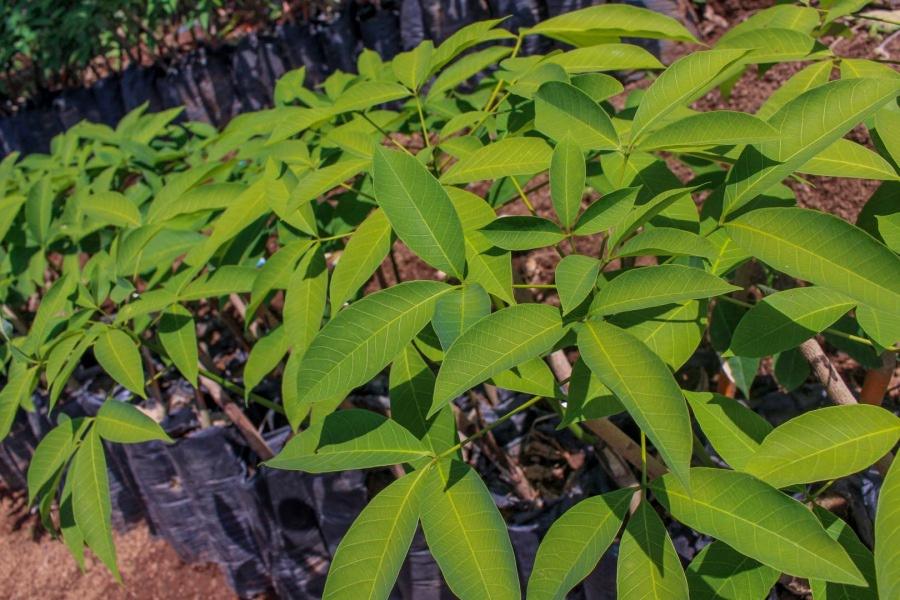
Moreover, PRRI also implemented three (3) production-related research and development projects in Zamboanga Sibugay, namely: (1) Performance of International Rubber Research and Development Board (IRRDB) Exchange Clones under Different Locations, (2) Influence of Different Coagulants on the Quality of Rubber Sheets, and (3) Design, Fabrication and Field Trial of Rubber Tree Guards for Improved Latex Yield
Tobacco. To ensure the continued, balanced and integrated growth and development of the tobacco industry, improve the economic and living conditions as well as raise the quality of life of the tobacco farmers, the National Tobacco Administration (NTA) provided various production assistance and other interventions.
For Crop Year (CY) 2021-2022, a total of 7,182 tobacco farmers in CAR, Region I and II covering 5,003.96 hectares were provided with production assistance/subsidy amounting to Php204 million under NTA- LGU financing of the Tobacco Contract Growing System (TCGS) – a contract-growing scheme that promotes a market-oriented approach in tobacco production, and enhances the participation of private sector in production technology transfer, credit assistance, and leaf marketing
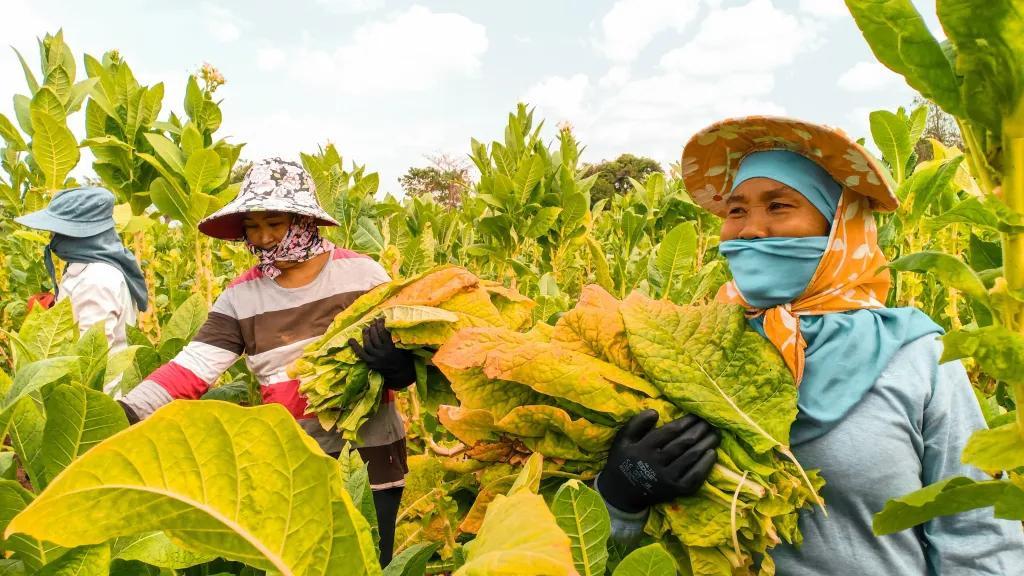
Through the Curing Barn Assistance Project (CBAP), a total of 4,029 tobacco farmers benefited and received assistance for the construction of new and repair of old and damaged curing barns and sheds, as well as the provision of curing psychrometers/hygrometers and graphs
Moreover, NTA also implemented diversification projects that aim to provide tobacco farmers with alternative income sources and enhance food productivity, supply availability, and price stability amid COVID-19 One of which is the Beef Cattle Production Assistance Project wherein a total of 500 head of Brahman heifers were distributed to farmer-cooperators of Regions I, II, and CAR valued at Php20 million This is to provide them with ready-to-breed upgraded Brahman heifer and jumpstart the beef cattle industry in tobacco-growing provinces wherein offsprings will serve as payment to downline farmer-cooperators. On the other hand, a total of 6,685 tobacco farmers received vegetable seed packs which consist of five (5) packs of different vegetable seeds as part of NTA’s refocused pandemic response.
On R&D, NTA continues to implement six (6) farm technology researches focused on improving leaf quality as well as reducing the cost of tobacco production, and four (4) studies that aim to explore alternative uses of tobacco.
Sugarcane. For 2021, the Sugar Regulatory Administration (SRA) provided 178 beneficiaries with a total of 1,157 04 lacsa or 11,570,400 canepoint pieces sourced from research stations in Pampanga and Negros Occidental In addition, 30 groups benefited from the distribution of 115,510 pieces of plantlets produced using micro-propagation technology to rapidly multiply newly released varieties of sugarcane
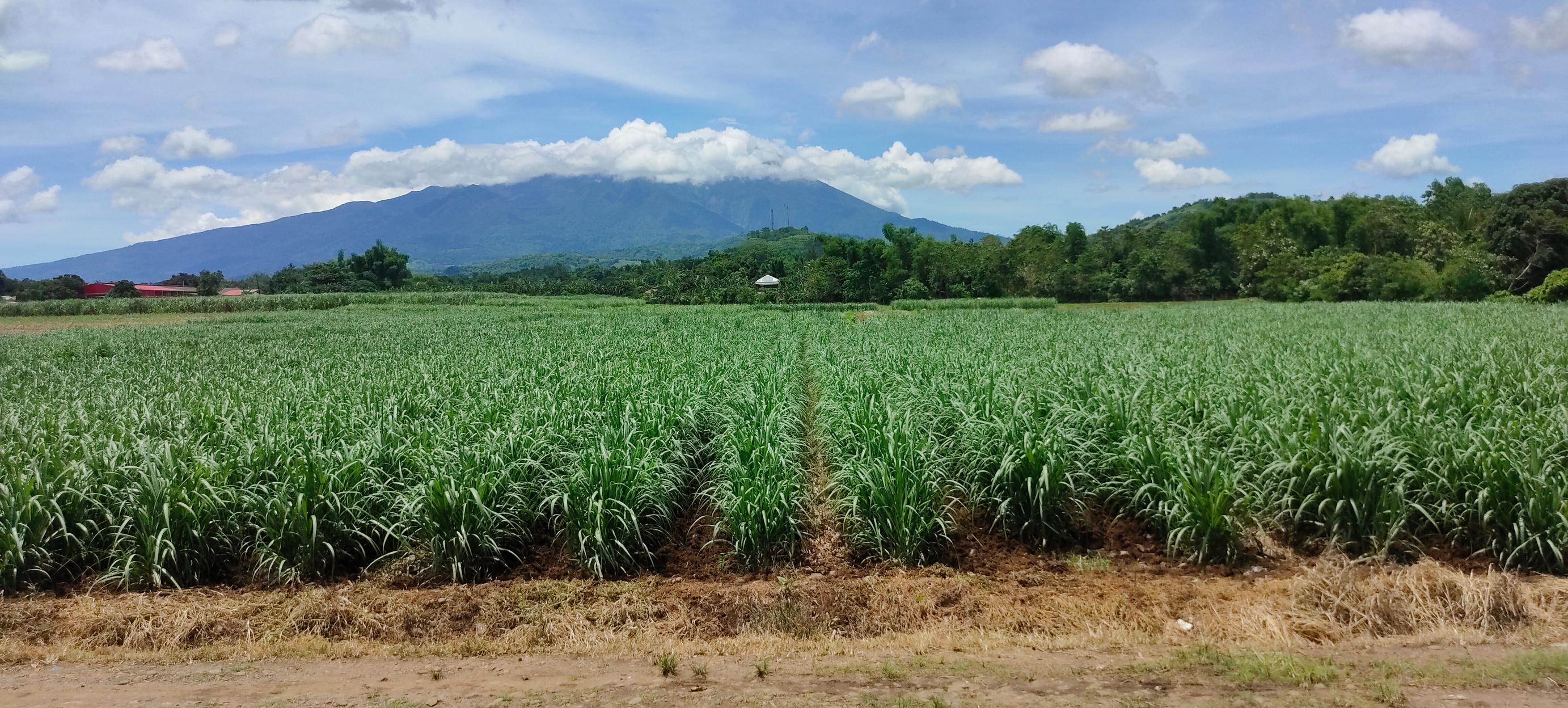
Moreover, a total of 40,449 pieces of Trichogramma strips were produced by SRA Of these, 31,247 pieces have been distributed to 61 clients This serves as an effective, safer, and cheaper biological control agent than chemical agents
SRA also distributed 6,225.72 gallons of Beneficial Micro Organism to 159 farmers with a total area of 622.57 hectares as a nitrogen fixer for sugarcane which promotes crop growth, protection, stress resistance, and nutrient uptake efficiency.
Further, pursuant to RA 10659 or the Sugar Industry Development Act (SIDA), SRA spearheaded the implementation of five (5) mandated component programs under SIDA, namely, Block Farming, Infrastructure, Scholarship, Research, Development & Extension, and Socialized Credit, to promote the competitiveness of the sugarcane industry and
maximize the utilization of sugarcane resources as well as improve the incomes of farmers and farm workers through improved productivity, product diversification, job generation and increased efficiency of sugar mills
Below are the highlights of SIDA Program accomplishments:
A total of 58 block farms were accredited nationwide with 2,040 enrollees and a total area of 8,416.16 hectares. SRA released a total of Php6.475 million to block farms as start-up capital and support for the establishment of high-yielding variety (HYV) nurseries and procurement of agricultural inputs. In 2021, 62 HYV nurseries were established nationwide. Under SIDA’s Infrastructure Program, five (5) farm-to-mill roads (FMR) projects were completed for the current year while 27 are still in the construction and pre-implementation stage. To date, a total of 169 FMRs with a total length of 175.74 kilometers and three (3) bridges totaling 57 linear meters have been completed nationwide.
For Academic Year 2021-2022, a total of 234 scholars are currently being supported by the SIDA- SRA scholarship program across 10 regions. The total financial assistance provided amounted to Php7.05 million for the scholars’ monthly stipend, tuition, and miscellaneous expenses.
To date, a total of 41 RDE projects funded have been completed Outputs of the research projects will be packaged and disseminated by SRA to sugarcane farmers and other stakeholders Through the RDE Program, different laboratory equipment were provided to one (1) planter cooperative, and four (4) SUCs for the upgrading of their laboratories; and
A total of Php149 62 million in loans were released to 235 sugarcane farmerbeneficiaries in 18 sugarcane producing provinces under the SIDA credit program for the acquisition of production inputs and farm machinery, and implements necessary for the continuous production of sugarcane
Abaca and other fiber crops. The Philippine Fiber Industry Development Authority (PhilFIDA) spearheads the implementation of the Fiber Development Program that focuses on increasing the country’s fiber production volume and quality as well as farmers’ income through the provision of appropriate support services
For 2021, a total of 1,480 individual beneficiaries and 28 groups were provided by PhilFIDA with a total of 1 27 million pieces of abaca, sisal, mulberry, and ramie planting materials
In order to expand the country’s production base for abaca and other fiber crops, PhilFIDA provided technical assistance to 1,926 farmers for the expansion or opening of 1,166 hectares of new fiber crop farms and rehabilitation of 850 hectares of old and unproductive fiber crop areas
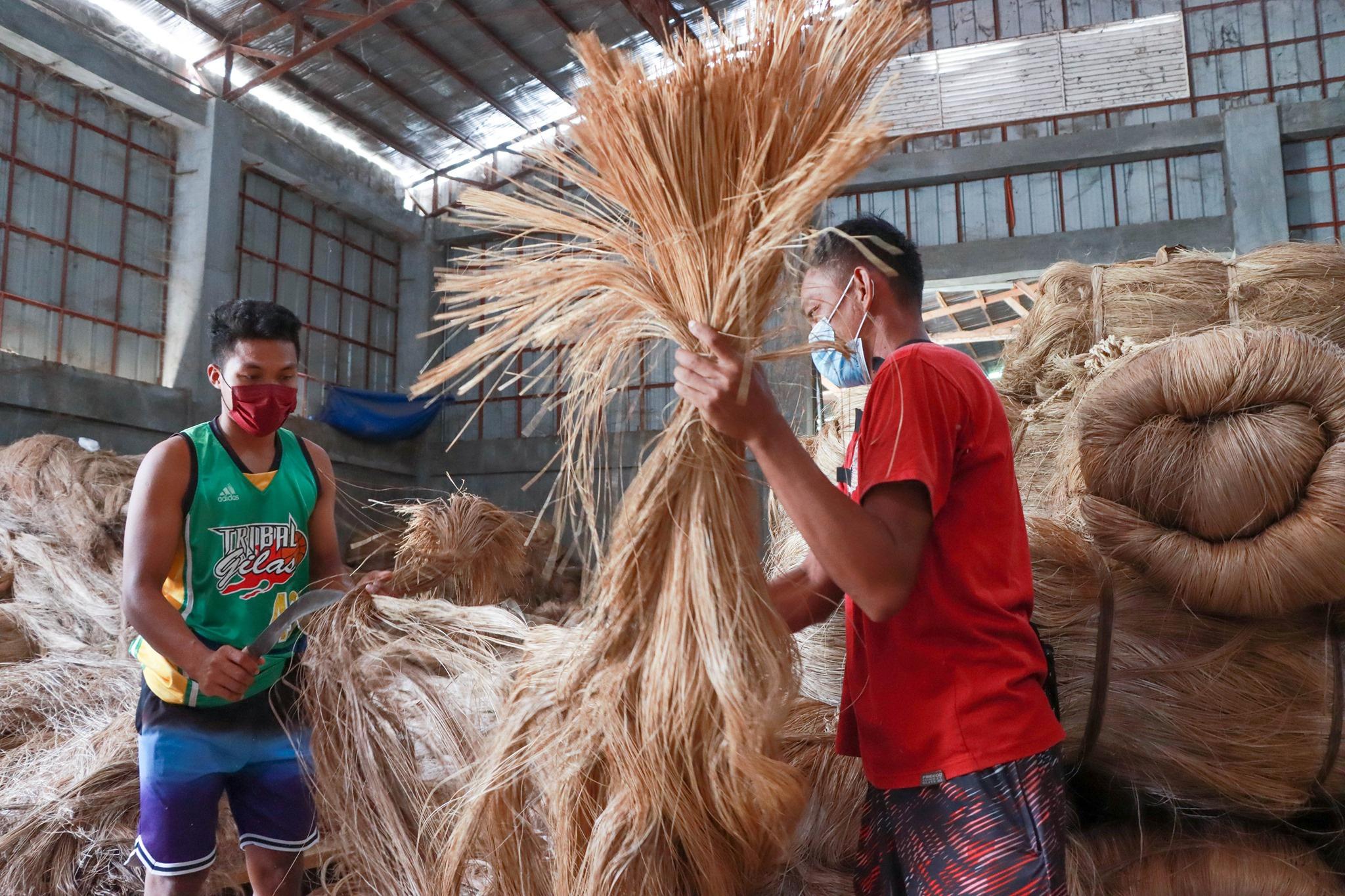
In addition, a total of 2,535 hectares of abaca areas were treated for the Abaca Bunchy Top under the Abaca Disease Management Project
Moreover, a total of 106 training courses on different fiber production technologies, grading, and classification as well as fibercraft making were conducted benefiting 3,625 fiber crop farmers.
The DA, through the Bureau of Fisheries and Aquatic Resources (BFAR), ensures that good quality, sufficient and affordable fish and fishery products are available and accessible to the consuming public while ensuring stable income for fishers.
Fish Seed Production and Distribution. Majority of the Philippines’ fisheries production comes from the aquaculture sector Instrumental to this is the intensified broodstock development and fingerling production of BFAR For the period, 233 27 million fingerlings were distributed to 41,174 individuals and 1,291 fisherfolk associations/groups In addition, 334,836 pieces of broodstock were maintained and 4 8 million pieces were distributed to 255 individual beneficiaries and 41 fisherfolk associations/groups.
Operation and Maintenance of Mariculture
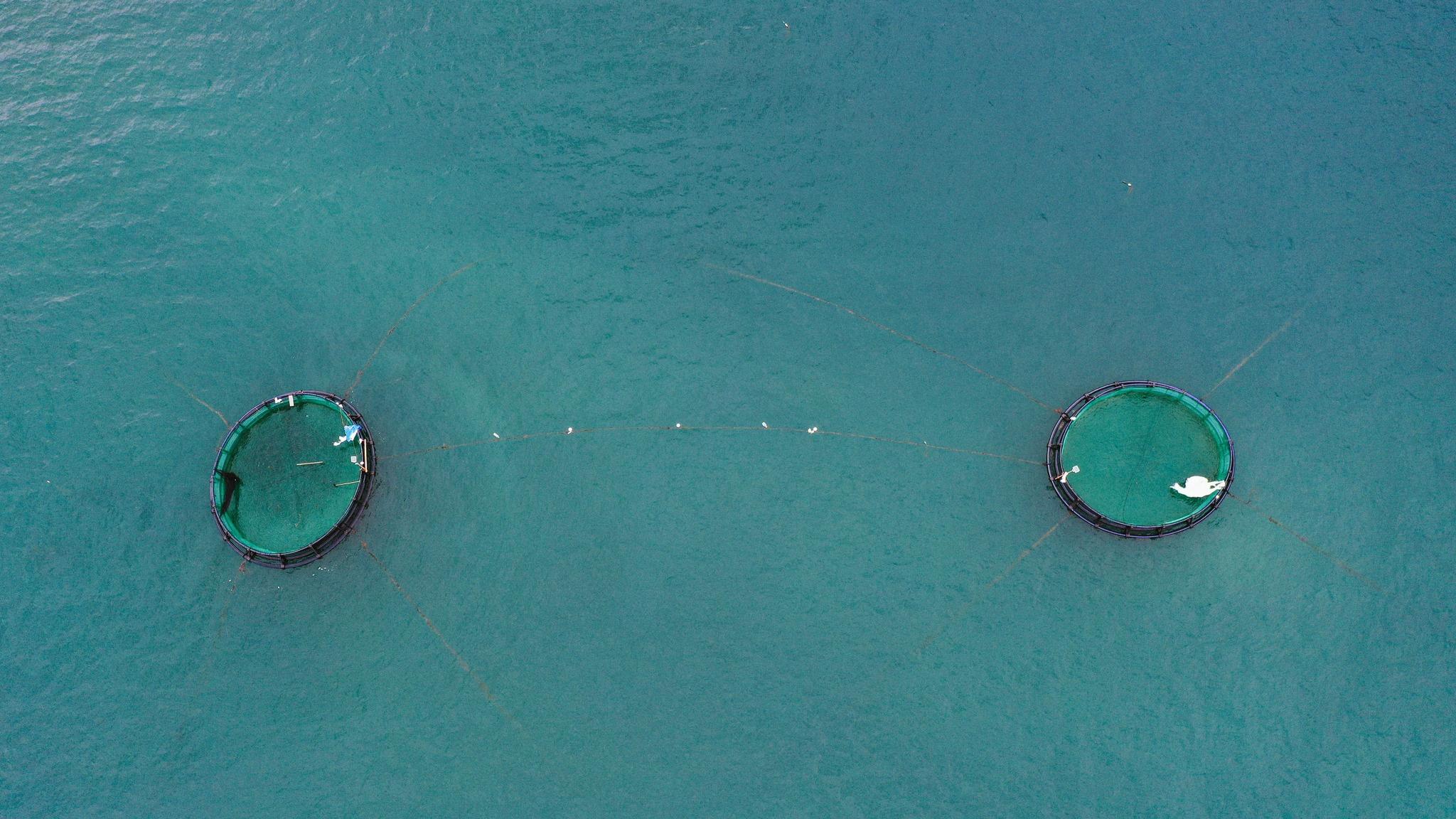
Parks/Aquapark. BFAR, in partnership with LGUs, established Mariculture Parks to address major issues such as food security, employment, livelihood generation, and poverty reduction in coastal areas A total of 30 Mariculture Parks/Aquaparks are being maintained by BFAR in strategic locations throughout the country
Coastal and Inland Fisheries Resource Management. BFAR actively supported the establishment of 12 Fisheries Management
Areas (FMAs) in support of the goal of making fisheries more sustainable. In line with this, a total of 395 LGUs were assisted, four (4) marine sanctuaries, reserves, and refuges were monitored and assessed; and 12 FMA Management Boards were established with the assistance of BFAR Regional Offices.
Distribution of Fishing Gears and Paraphernalia, and Postharvest Equipment. In line with the promotion of sustainable fisheries, BFAR distributed a total of 20,319 passive and environment-friendly fishing gears to 11,080 fisherfolk and 169 groups. In addition, 1,737 units of various postharvest equipment were provided to 547 individuals and 289 groups. The operation of the following facilities were also maintained:
five (5) processing plants in Pangasinan, La Union, Bulacan, Camarines Norte, and Camarines Sur; and three (3) postharvest facilities namely, the Fish Processing Laboratory, Seaweed Processing Laboratory, and Fishery Products Laboratory in Quezon City.
Moreover, BFAR provided coastal communities with Community Fish Landing Centers (CFLCs) equipped with fish stalls and chest freezers. As of December 2021, there are 422 operational CFLCs nationwide. In addition, 257 CFLCs were completed pending operationalization. These facilities serve as landing and fish trading hubs for artisanal fisherfolk and training centers for fish processing, value-adding, and conservation and protection of the fishery resources.
F/B Pagbabago Livelihood Program. This involves the construction and distribution of disaster-resilient, durable and environmentfriendly fiberglass reinforced plastic (FRP) bancas designed to ensure resiliency and safety of fisherfolk at sea BFAR institutionalized the conduct of training on the construction and maintenance of FRP bancas as livelihood intervention to help uplift the economic status of fisherfolk by empowering them and their families to become responsible resource users
In 2021, 81 fisherfolk groups and 773 individuals received 758 units of FRP boats under the program
Fish Ports Development Program. The Philippine Fisheries Development Authority (PFDA) maintained the operation of nine (9) Regional Fish Ports (RFPs) namely, Navotas, Iloilo, Zamboanga, Camaligan, Lucena, Sual, Davao, General Santos, and Bulan Fish Ports
In 2021, the total volume of fish unloaded at PFDA-maintained RFPs has reached 517,860 metric tons The majority of the fish unloadings came from the General Santos Fish Port Complex and Navotas Fish Port Complex accounting for a combined 86 5% share
Moreover, PFDA completed the upgrading of the pier and repair of building facilities at the Zamboanga Fish Port Complex and the construction of the Mariveles Fish Port in Bataan

Extension Support, Education and Training Services. On the provision of extension and training services, BFAR conducted a total of 763 face-to-face and virtual training on aquaculture, municipal and commercial fisheries, regulatory, and post-harvest technologies that benefited 21,362 individuals and 108 groups
Moreover, 1,156 aquaculture and postharvestrelated techno-demo projects were established that benefited 183 groups/associations and 1,054 individuals These techno-demo projects are designed to showcase modern and digital technologies in the culture of seaweed and shellfish, and aquasilvi/mangrove culture, among others
Fisheries Research. The National Fisheries Research and Development Institute (NFRDI) generated 47 policy recommendations from the conduct of the National Stock Assessment Program for 42 species that exhibited signs of overfishing in 11 Fishery Management Areas which include scientific advisories and regulatory measures such as Harvest Control Rules that aims to ensure the sustainability of wild stocks in capture fisheries
This year, a total of 12 policy recommendations and technologies were adopted including six (6) matured aquaculture technologies, a digital weather advisory for fisherfolk, the National Blue Swimming Crab Management Plan, Octopus National Management Plan as well as scientific inputs for the amendment of BFAR issuance on the implementation of the Balik Sigla sa Ilog at Lawa (BASIL) Program and fisheries regulations, among others.
NFRDI also spearheaded the implementation of 35 regular and 23 externally-funded fisheries projects to stimulate on-farm transfer and adoption of matured technologies developed for fish farmers, as well as promote the application of innovations and best practices for entrepreneurship development in aquaculture.
Mechanization & Infrastructure Development. The DA recognizes that the availability of critical infrastructure and improving the level of mechanization in farming and fishing are vital in increasing agricultural productivity and income Under the modernization and industrialization pillars of the OneDA Reform Agenda, the Department intensified the promotion of mechanization and infrastructure investments in order to provide appropriate machinery, equipment, facilities, and infrastructure in strategic locations taking into consideration the competitive and comparative advantages of localities as well as climate change impacts
This reinforces the sustainable development of agricultural value chains of various commodities, improvement of supply chain efficiency, and enhancement of the national agriculture logistics system to speed up and reduce transport and distribution costs from production to consumption areas, including export destinations

In 2021, a total of 9,784 groups and 12 individuals benefited from the provision of a total of 7,385 production-related and 28,302 postharvest machinery and equipment as well as the construction/establishment of 5,614 production facilities and 121 postharvest facilities.
The Department, through the Bureau of Agricultural and Fisheries Engineering (BAFE) and DA RFOs, closely coordinates with the DPWH, in the identification and construction of rural roads that will improve the links between the production areas and markets, and enhance the efficiency of transporting agricultural products
For 2021, Php11 74 billion was allocated for the implementation of 828 FMR projects with a total target length of 977 63 kilometers As of December 2021, a total of 827 projects with an equivalent length of 946 72 kilometers were validated by DA RFOs Of these, a total of 194 FMR projects with a total length of 178 95 kilometers were completed amounting to Php2 57 billion In addition, a total of 738 FMR projects funded from previous years were completed which accounts for an aggregate length of about 590 67 kilometers amounting to Php8 74 billion

To assist farmers in improving their farm productivity, the Department distributed, installed, constructed, and rehabilitated a total of 1,052 small-scale irrigation projects (SSIPs) which include pump irrigation systems, shallow tube wells, diversion dams, solar-powered irrigation systems, drip irrigation systems, spring development, small water reservoir and small water impounding projects, among others In addition, a total of 21,895 linear meters of irrigation canal were constructed and rehabilitated These interventions generated and restored a total of 5,172 hectares of service area benefiting 983 group beneficiaries
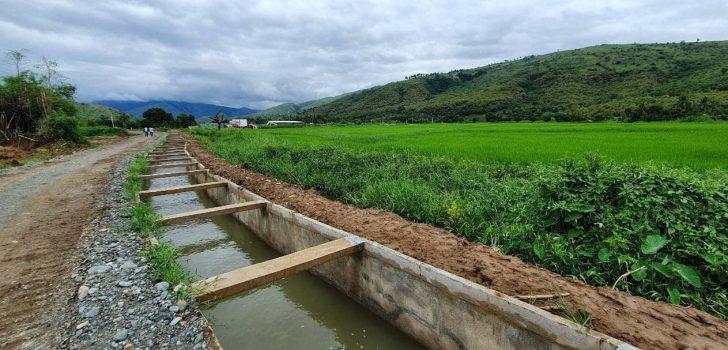
In 2021, BAFE completed the Farm-to-Market Road Network Plan (FMRNP) which includes the list of proposed priority FMR projects with corresponding scope of work, estimated length in kilometers, and specific location, as well as a list of FMR projects leading to arterial or secondary roads and key production areas The FMRNP, which was completed in collaboration with Caraga State University and Don Mariano Marcos State University, serves as a guide for LGUs in proposing FMR projects for funding
Prior to its completion, the FMRNP, was piloted in Regions I and VI, and Caraga The DA through BAFE acts as the Chairperson of the interagency Technical Working Group (TWG) on Food Infrastructure
Currently, the TWG is developing a database and mapping out completed, ongoing & budgeted food and agri-fishery infrastructure using BAFE’s Agricultural Biosystem Engineering Management Information System (ABEMIS). Inter-agency projects were already captured in the system which include roads and other infrastructure projects under DPWH and DTI’s Roads Leveraging Linkages for Industry and Trade (ROLL-IT) Program; DOTr’s road infrastructure projects; DOT’s Accredited Farm Tourism Sites; DA’s FMRs and Trading Centers; PPA’s Port Infrastructure; and DICT’s GovNet ICT infrastructure
In 2021, PHilMech completed the development of eight (8) technologies on bio-process and food engineering, socio-economic and policy research, and laboratory services which includes the Vacuum Microwave-dried Cavendish Banana Powder, and Essential Oil Extractor, as well as information and policy briefs on Adaptability of Multi-Row Onion Seeder (MROS), Postproduction Losses of White and Yellow Corn, Benefits of Mechanizing Rice Production and Drying, and Effects of Different Storage Techniques
Moreover, PHilMech also facilitated the filing of Intellectual Property applications for 10 PHilMech-developed technologies at the Intellectual Property Office of the Philippines.
Agricultural Insurance Program:
The Philippine Crop Insurance Corporation (PCIC) implements the Agricultural Insurance Program which offers an array of agricultural insurance lines with the ultimate goal of increasing the financial risk protection for agricultural producers.
In 2021, the government’s lead agricultural insurer provided 3,179,652 farmers and fisherfolk with insurance coverage amounting to Php103.47 billion. The insured area for crops totaled 2,007,336 hectares with 66% of the total coverage devoted to rice, 19.7% for corn and 14.3% for high-value crops. Moreover, PCIC was also able to insure about 2.28 million head of poultry and livestock, 8,670 fishing boats, fishing gears and fishery projects, and 934 noncrop assets. Some 259,852 policies for life and credit insurance were availed by farmers and fisherfolk. A total of 432,544 insured farmers and fishers were paid a total of Php2.64 billion in indemnity.
In light of the ASF outbreak, PCIC also intensified its efforts to encourage backyard and commercial hog raisers to avail insurance packages in order to protect their livelihood and regain their businesses and investments, in case their farms are affected by ASF. ASF has been included among the risks covered by PCIC’s livestock insurance as early as 2019 when the disease broke out locally. Compared to 2020, the number of insured livestock increased by 74.87% in 2021 while the amount of coverage increased by 120 72%
The PCIC provides Php10,000 insurance cover per head of swine, on a regular premium payment of only 2 25% This is separate from the ASF indemnification claims, where beneficiaries are eligible for a Php5,000 assistance per pig culled, which was doubled to Php10,000 starting April 2021 Free insurance is given to small backyard hog raisers listed in the Registry System for Basic Sectors in Agriculture (RSBSA)
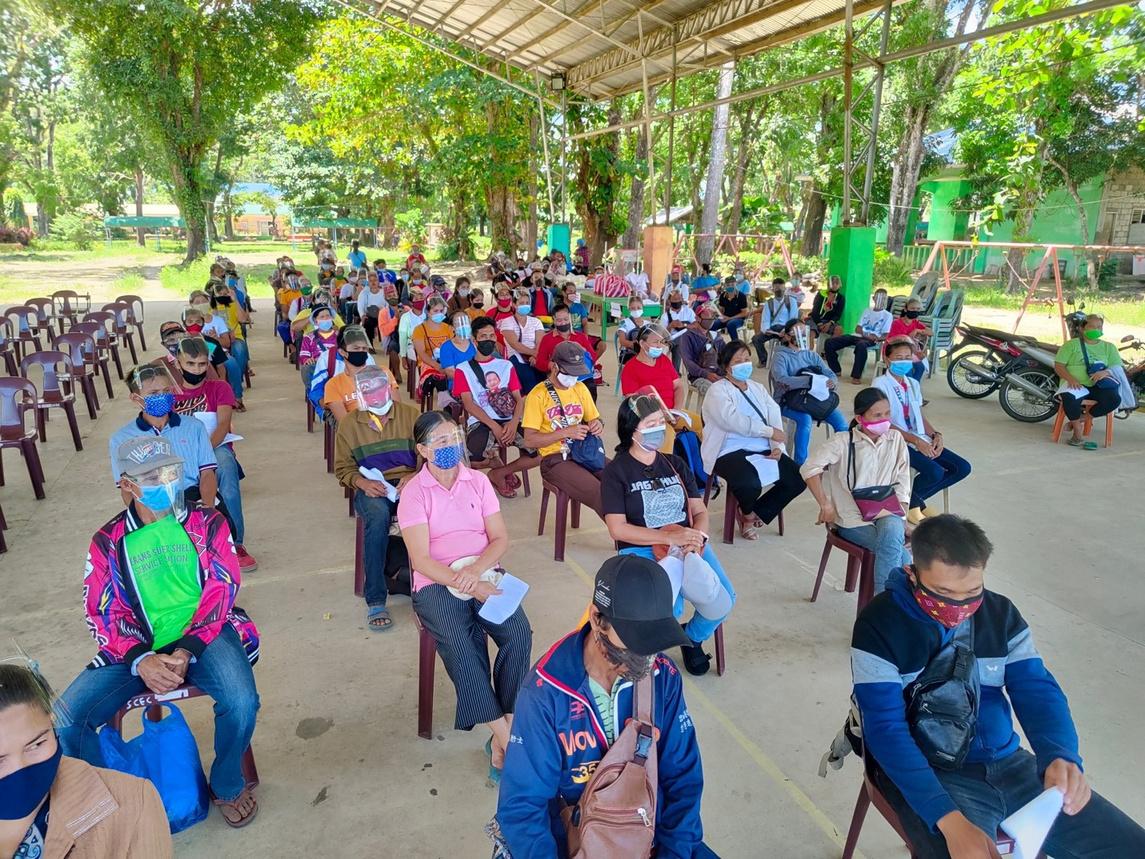
The transfer of PCIC to the Department of Finance (DOF) effective September 2021, by
virtue of Executive Order No 148, is also a welcome development that will make the operations of the agency more efficient in fulfilling its mandate toward providing insurance protection to subsistence farmers and fisherfolk The restructuring underscores the need for PCIC to align its plans and programs with national development policies and the government's overall fiscal plan
Agricultural Credit Programs:
Expanded SURE Aid and Recovery Project (SURE COVID-19)
To support the emergency and capital needs of small farmers and fishers (SFF) and agri- fisherybased micro and small enterprises (MSEs), including farmers and fisherfolk organizations (FFOs) whose livelihoods and incomes were affected by COVID-19 pandemic, the Department, through the Agricultural Credit Policy Council (ACPC), launched the Expanded SURE Aid and Recovery Project (SURE COVID19).
Through SURE COVID-19, SFF may borrow up to Php25,000.00, payable up to 10 years at 0% interest rate for their emergency and production capital requirements, while MSEs who may be under sole proprietorship, partnership, corporation or cooperative may avail of loan up to Php10 million at 0% interest, payable within five (5) years as working capital for food production, delivery, marketing, and other supply chain activities In 2021, a total of Php1 48 billion in loans were granted to 54,915 SFFs and 54 MSEs/FFOs nationwide
The Survival and Recovery (SURE) Loan Assistance Program is ACPC’s umbrella loan program for post-disaster recovery. It intends to provide funding for the immediate rehabilitation and restoration of agricultural and livelihood activities of SFF affected by typhoons, flooding, and other natural calamities.
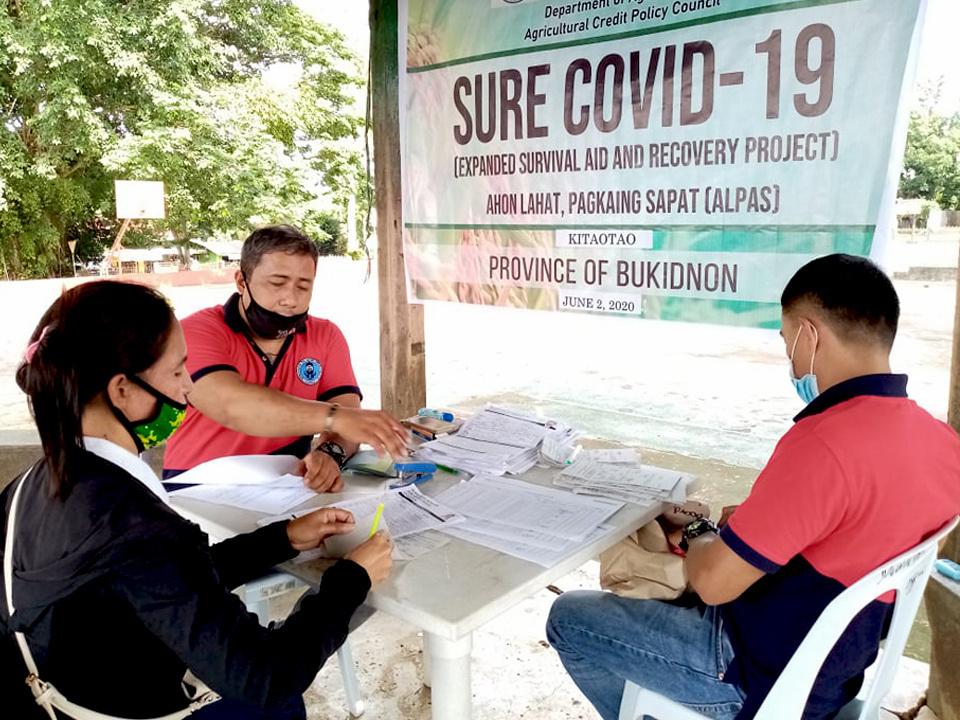
Through the years, SURE has developed and transfigured into several schemes in order to be more responsive and fitting to the needs of SFFs affected by various disasters, and to hasten their recovery process.
On top of the regular SURE Program, ACPC also developed SURE Hogs for backyard hog raisers whose stocks were affected by the ASF outbreak, SURE Aid Taal for farmers and fishers whose livelihoods were affected by the eruption of the Taal volcano, and SURE Aid Palay for small rice farmers whose incomes were affected by the drop in the farm gate prices of palay. For the period, a total of Php286.16 million in loans were granted to 12,775 SFFs under these postdisaster loan facilities
With the intention of gradually harmonizing ongoing credit programs, the AgriNegosyo (ANYO) Loan Program was created in 2020 where other capital loan programs such as the Production Loan Easy Access (PLEA), Working Capital Loan Easy Access (CLEA), Agriculture and Fisheries Machineries and Equipment (AFME) Loan Programs were subsumed. The ANYO Loan Program offers loans to individuals/sole proprietors, partnerships, corporations, and cooperatives whose owners or members are marginal or small farmers and fisherfolk engaged in agri-fishery related projects to finance their income-generating agri-fishery activities and working capital and/or fixed asset acquisition requirements of up to Php15 million. It offers loans at 0% interest rate and payable up to five (5) years based on the projected cash flow. A total of Php1.42 billion in loans were granted to 16,742 SFFs and 130 FFOs/MSEs under the program.
In 2021, three (3) specialized ANYO credit windows were set up to cater to the capital needs of specific segments specifically, hog raisers, OFWs and women
This include ANYO Swine Repopulation, Rehabilitation and Recovery (Swine R3) for swine backyard raisers, semi-commercial raisers, and farmers cooperatives/associations, and micro and small enterprises (MSEs); ANYO Loan Program for Overseas Filipino Workers (ANYO-OFW) for repatriated OFWs who wish to engage in agribusiness; and ANYO Agri-Pinay for women in agriculture Under these three (3) newly established ANYO credit facilities, a total of Php272 6 million in loans were granted to 2,814 SFFs and nine (9) FFOs/MSEs

Also incorporated under ANYO is the Agricultural Value Chain Financing Support and Capacity Building thru Entrepreneurship and Organizational Development (Project ASCEnD) The project which started in 2019, is an action research that intends to develop the capacity of non-bank rural financial institutions (such as cooperatives/farmer organizations and agrifinance corporations) to provide financing to farmers for their activities along the commodity supply chain. In 2021, a total of Php69.03 million in loans were granted to 499 SFF borrowers.
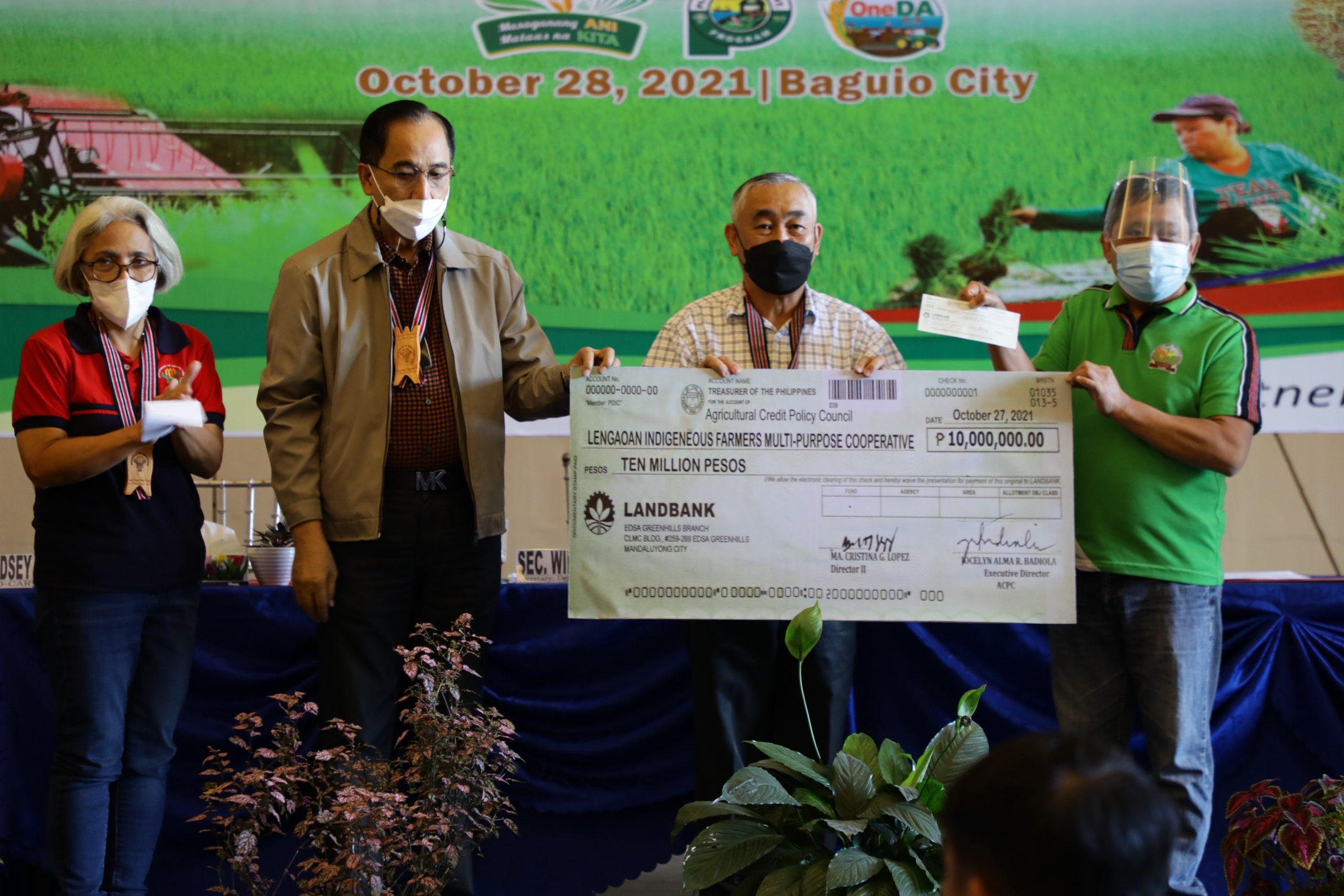
The Kapital Access for Young Agripreneurs (KAYA) credit facility aims to encourage the youth to engage in agriculture and enter into agri-related ventures This will finance capital requirements of start-up or existing agri-based projects of young entrepreneurs and agrifishery graduates aged 18-30 years old. Young agripreneurs or ‘yaggies’ may avail loans of up to Php500,000 at 0% interest rate and can be paid for up to five (5) years based on the projected cash flow. In 2021, a total of Php81.65 million in loans were granted to 444 SFFs and one (1) MSE.
Export Promotions and Development. The Department, under the OneDA Reform Agenda’s Industrialization pillar, aims to further boost the country’s agri-fishery exports in order to maximize the sector’s foreign exchange earning potential Further, it aims to empower the private sector to take the lead in the collective effort to promote exports, which shall also result in increased employment and income for a huge part of the country’s population
This year, the country started the commercial shipment of fresh okra to the Republic of Korea The Philippine Okra Producers and Exporters Association (POPEA), in partnership with DA and DTI, made an initial shipment of 1,200 kilograms of fresh okra to Korea on June 6, 2021. To ensure product safety and quality, accredited okra exporters strictly comply with the sanitary and phytosanitary requirements and GAP with traceability codes and date of packing indicated in each pack.

This new trade opportunity with Korea supports the country’s economic recovery plans and is expected to contribute to export growth while generating opportunities for more local farmers and exporters. The DA banks on its consolidation strategy to ensure the quality as well as the volume of products to be shipped abroad. The POPEA member companies involve about 500 clustered farmers in Tarlac for the production of export-quality okra products.
Moreover, the Philippines can already export canned pineapples duty-free to Australia after Australia’s Anti-Dumping Commission (ADC) decided to lift its anti-dumping measure on Philippine canned pineapples, 15 years after it was first imposed
This favorable development will not only further strengthen the trading relationship with Australia but also allow the country to capture a bigger slice of the pineapple export market given the country’s comparative advantage in producing the said commodity In 2021, pineapple and pineapple products ranked third as the country’s top agricultural export next to coconut products and banana
The country is also looking to start shipping mangoes and pineapples to various US markets after the DA-BPI and the US Department of Agriculture’s Animal and Plant Health Inspection Service (USDA-APHIS) mutually agreed on and threshed out several pending regulatory concerns. By harnessing international cooperation, the DA aims to open up more avenues for global trade expansion.
The Philippines also began exporting processed meat products to Japan. This positive development is due to the recent inclusion of the Philippines by the Japanese Ministry of Health, Labour and Welfare (MHLW) in its list of certified countries that passed the Hazard Analysis and Critical Control Point-based (HACCP) hygiene management protocols.
In addition, two (2) Philippine poultry farms have secured the approval of the South Korean government to export chicken meat after successfully complying with the stringent requirements of South Korea’s Ministry of Agriculture, Food and Rural Affairs - Animal and Plant Quarantine Agency (MAFRA-APQA) after the Philippine Embassy, through Philippine Agriculture Office (PAO) Seoul, and the Department of Agriculture’s (DA) regulatory agencies (BAI and NMIS), facilitated the remote inspection and document review of the facilities
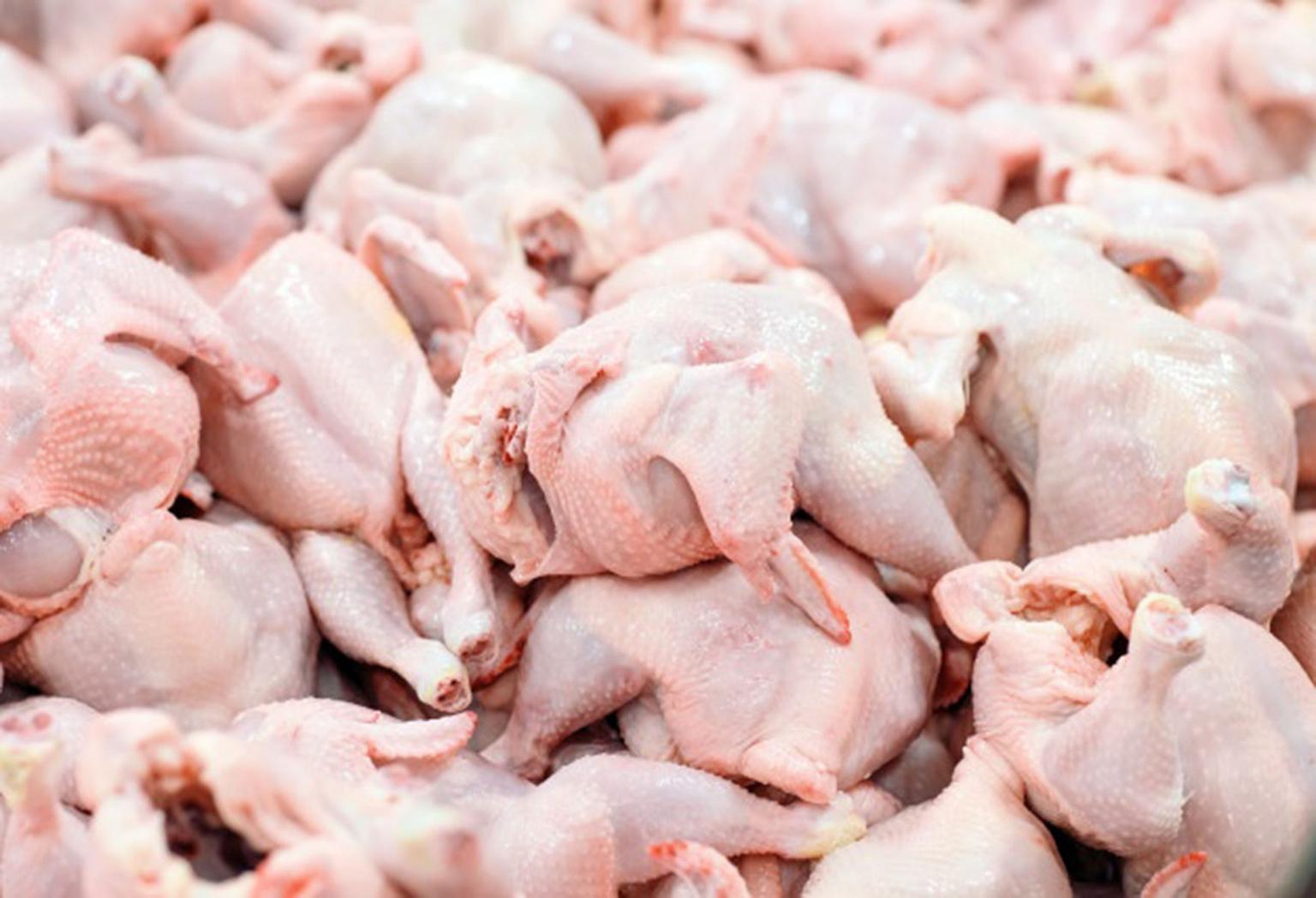
The Department, through the Bureau of Agriculture and Fisheries Standards (BAFS), develops and promotes standards to ensure consumer safety and the global competitiveness of Philippine agriculture and fishery products. For the period, BAFS developed and facilitated the approval of 32 Philippine National Standard (PNS). This is comprised of 20 food safety and quality standards on crops, livestock, and poultry, fish and fishery products, organic and halal products, and 12 agri-fishery machinery-related standards.
These developments serve as big boosts for local livestock and poultry producers, food manufacturers, meat processors, and exporters, as the Department continues to look for market opportunities to reinforce the country’s economic recovery efforts amid the pandemic.
Through AMAS, the DA also funded the country’s participation in five (5) international trade fairs in Korea, China, and Japan. Most successful among these activities is the Philippines’ participation in the 4th China International Import Expo (CIIE) where the 10 companies endorsed by the DA generated actual purchase orders amounting to Php28.7 trillion for the purchase of fresh fruits like cavendish banana, pineapple, avocado, and fresh green coconuts.
The continuous expansion of existing, and penetration of new foreign markets and segments for locally-produced agricultural products is a testament to DA’s commitment to providing safe, healthy, and world-class quality food for both domestic and export markets.
The Department’s regulatory agencies continue to carry out critical services to ensure stakeholders' compliance with relevant industry policies and regulations from production to processing, labeling, distribution, and sale, including goods/products that enter the country. Regulatory activities are likewise being undertaken to ensure compliance with relevant national and international standards and regulations of trading partners.
In 2021, a total of 4.75 million regulatory documents were issued by DA RFOs and Bureaus. In addition, other regulatory documents issued by other DA regulatory agencies totaled 459,338 for fisheries, 368 for agriculture and fisheries engineering regulations compliance, 20,214 for fertilizers and pesticides regulation, 12,157 for fiber crops, and 9,755 for meat safety and quality.
Moreover, a total of 9,543 agricultural products and 14,623 agricultural facilities were monitored/inspected by DA RFOs and Bureaus. Additionally, BFAR conducted monitoring and inspection activities for 369,694 fisheries entities (commercial fishing vessels and gears, Fishpond Lease Agreements covered areas, etc.) and products. A total of 3,758 land-based and seaborne field operations were conducted that
resulted in 584 apprehensions due to unauthorized fishing, operation of commercial fishing vessels with unlicensed fisherfolk, workers, and crew, use of active gears in prohibited areas, and use of unlicensed gears
The Fertilizer and Pesticide Authority (FPA) conducted monitoring activities and inspected a total of 22,609 fertilizer and pesticide handlers resulting in the detection of 415 violations
Notices of Violation were issued accordingly to erring dealers
Further, the NMIS certified a total of 1 96 billion kilograms of local and imported meat fit for human consumption Regulatory activities on meat safety and quality led to the confiscation of 176,202 kilograms of imported and local hot meat.
The Department continues to perform its critical mandate to formulate, review, and analyze policies and legislative measures concerning the agri-fishery sector in order to establish a policy environment that promotes food security and enhances the prosperity of the country’s primary producers
Towards the same end, the DA also pursues and harnesses international relations and cooperation for the growth and development of the agriculture and fisheries sector
Aside from the performance of regular liaison work and correspondence with the World Trade Organization (WTO) on matters concerning the country’s agriculture and fisheries sector, particularly on relevant trade policies and measures, the Department also reviewed, assessed, and provided technical inputs on various bilateral and regional Free Trade Agreement (FTA) engagements and negotiations The DA actively participated in negotiations that aim to put the country in a favorable and strategic position in pursuing more liberalized market access for the country’s agri-fishery products.
This year, the Department significantly contributed to the negotiations and review of major bilateral and regional FTAs such as the Philippines-Korea FTA (PH-Kor FTA), PhilippinesJapan Economic Partnership Agreement (PJEPA), Philippines-European Free Trade Association (EFTA) FTA, ASEAN-China FTA (ACFTA), and Regional Comprehensive Economic Partnership.
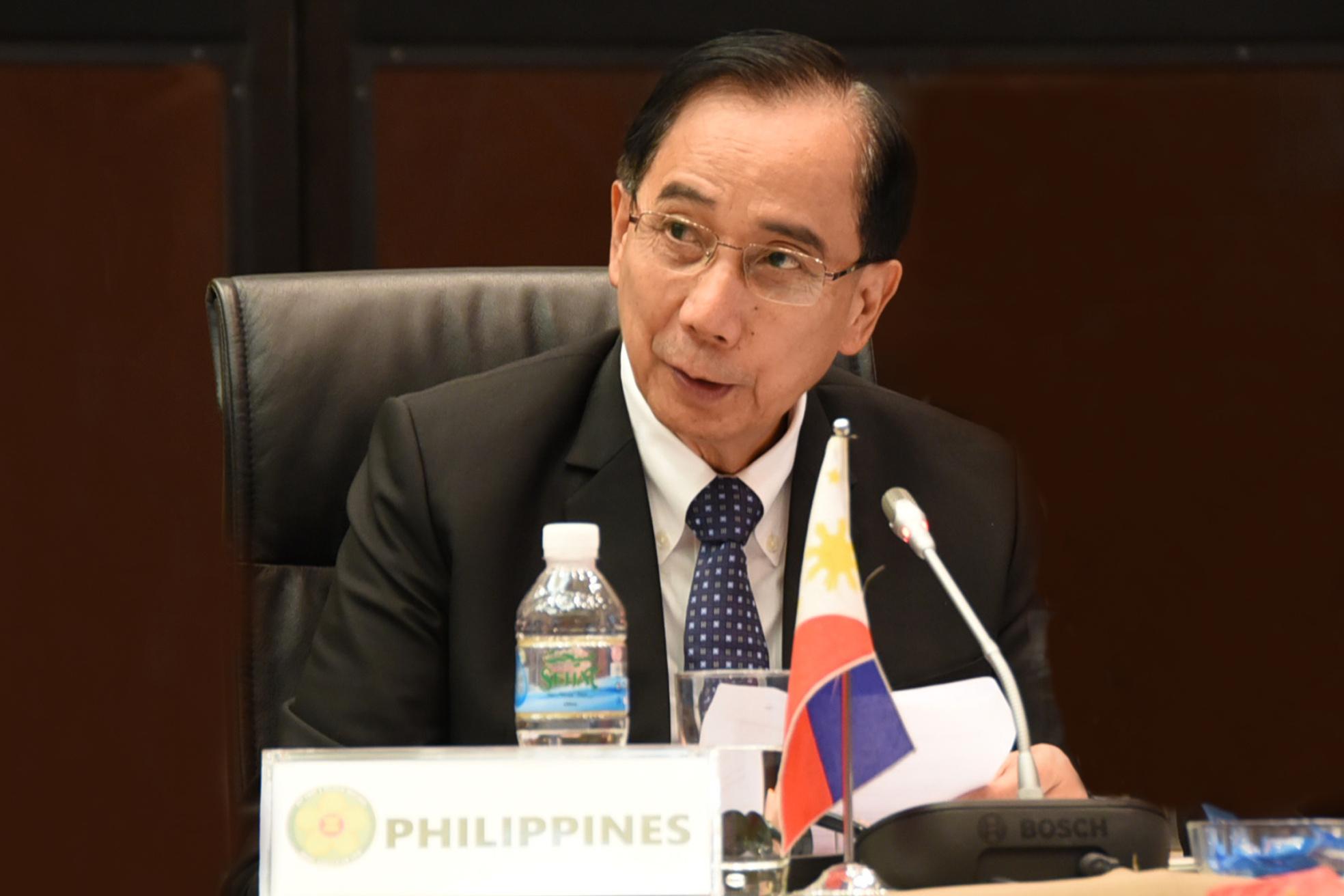
Moreover, the Department also supported other international trade-related bilateral engagements and provided technical inputs on the following: (1) proposed Memorandum of Understanding on Facilitating Bilateral Trade and Investments between Philippines and Indonesia with respect to the provisions on special safeguard measure imposed by the Philippines on coffee products; and (2) recommendations on the inclusion of some agricultural products in the list of essential goods under the ASEAN MOU, in response to the COVID-19 pandemic as well as the inclusion of staple food such as rice, corn, and sugar in the list of ASEAN essential goods under the ASEAN Comprehensive Recovery Framework
This year, the Department facilitated the signing of the following international cooperation agreements: (1) Implementing Agreement between Manila Economic and Cultural Office (MECO) and Taipei Economic Cultural Office (TECO) on the Establishment of the Taiwan Technical Mission in the Philippines on Agriculture; (2) Economic and Technical Cooperation Chapter and its Implementing Arrangements under the PH-Korea FTA; and (3) the PhilRice-Hungarian University of Agriculture and Life Sciences (MATE) MOU on Rice and Crop Research.
Meanwhile, the MOUs on Agricultural Cooperation between the Philippines and the governments of Argentina and Chile were already endorsed for signing and approval. The MOU on Agricultural Cooperation between the DA and the Ministry of Agriculture, Livestock, and Fishery of the Argentine Republic seeks to establish a general framework of cooperation in the agricultural, livestock, and agro-industrial sectors including, the aspects relating to primary agricultural and fisheries production; genetics and biotechnology and its products; technological innovation, rural development, value-added, marketing and the promotion of bilateral and third-country economic relations.

Similarly, the MOU on Cooperation in Agriculture between the DA and the Ministry of Agriculture of Chile will endeavor to foster
cooperation through exchanges on agricultural policies, experiences, and innovation; income and market-oriented research for development and education; market study to equip both countries to efficiently and competitively respond to emerging market opportunities; research and development collaboration to confront climate change, animal and plant health concerns; organic agriculture, digital agriculture and trade, and investment
Moreover, the DA-Winrock International MOU for the Implementation of Building Safe Agricultural Food Enterprises (B-SAFE) Project was endorsed for signing and is currently being reviewed by DA Legal Service B-SAFE will improve private-sector access to services, information, and relationships to access food safety-conscious export and domestic markets. The ultimate goal is to improve the trade of safe, wholesome food and agricultural products.
Further, 13 FTAs and MOU/As on Agriculture and Fisheries Cooperation between the Philippines and its partners are under negotiation and processing as follows: DACanadian Commercial Cooperation MOU on Government-to-Government Procurement, PCCMATE MOU on Livestock Biotechnology, BFARServicio Nacional de Pesca y Agricultura (SERNAPESCA) MOU on Cooperation in Fisheries and Aquaculture, and MOU on Agricultural Cooperation with the governments of Japan, Korea, China, UAE, Cambodia, South Africa, Bangladesh, Oman, Iran, and Poland, among others.
In response to major domestic trade concerns, DA conducted an initial study on the impact of the implementation of the Minimum Access Volume (MAV) Plus mechanism and the reduction of pork tariffs in relation to the instruction of the Economic Development Cluster (EDC) to assess whether or not there is a need to extend the implementation of these measures in 2022 Pork MAV was increased from 54,210 MT to 254,210 MT, through the MAV Plus mechanism, for MAV Year 2021, while the Most Favored Nation (MFN) tariff rates on pork were reduced to 10% (in-quota) and 20% (out-quota) in the first three months and 15% (in-quota) and 25% (out-quota) in the remaining three months, effective May 2021. This is part of the Department’s response to the adverse effects of ASF in the country.
Likewise, the DA also conducted a study and submitted a position paper to the Tariff Commission, in support of the Department of Finance, on the proposed temporary reduction of the MFN rates of rice to 35%, to expand the country’s sources for affordable rice. This was based on the simulation conducted on the possible landed cost of imported rice using different tariff rates from 5% to 50%.
Additionally, DA also conducted studies and reviewed proposed trade policies concerning the removal of MAV on fish imports and the approval of the Certificate of Necessity to Import (CNI) on fish, and tariff reforms on imported corn.
On sanitary and phytosanitary (SPS) and food safety concerns, the Department is working towards the harmonization of terms and streamlining of procedures in granting authorization and recognition to DA Regulatory Agencies By establishing a facilitative, systematic, and predictable regulatory environment, the Department aims to enhance transparency and evidence-based decision making, and improve coordination with relevant government offices This initiative also facilitates the transition to electronic or online platforms and processing systems in preparation for the eventual shift to TradeNet or the government’s National Single Window In line with this, the DA is also looking to harmonize quarantine policies and border inspection procedures.
In support of the implementation of the Food Safety Act, the Department also initiated and facilitated the review of proposed policies and measures on the (1) adoption of food safetyrelated standards into technical regulations; (2) delineation of functions and responsibilities of various agencies in the planning and conduct of food safety-related training; (3) regulations on the importation of fish and fishery products; and (4) certification of food safety training providers and registration and licensing of food business operators, among others.
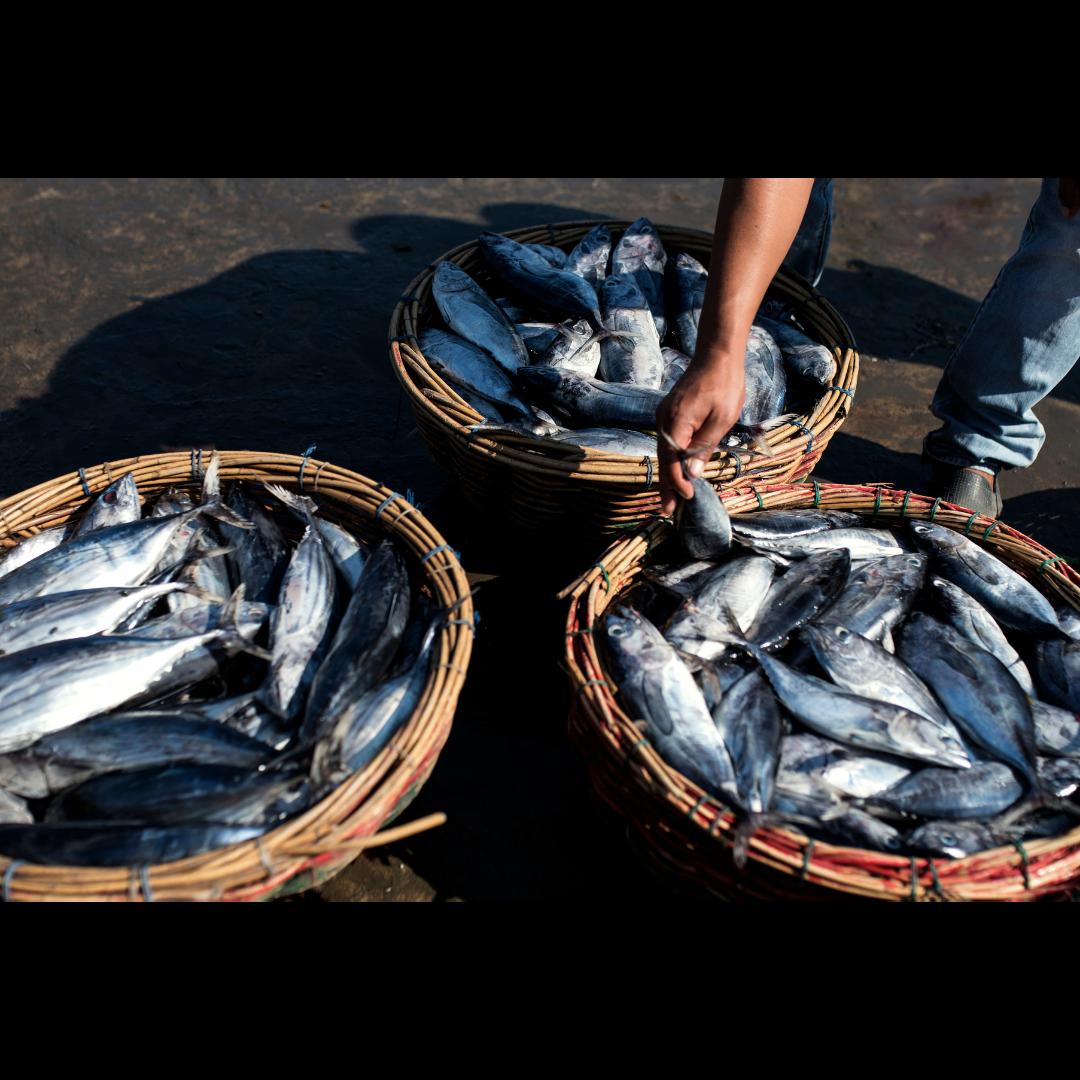
The Department provided comments and technical inputs on more than 60 proposed bills, legislative amendments, resolutions, and statutes that were tabled in both houses of Congress and issuances of other government agencies Most notable of which are proposed legislative measures concerning various issues such as increasing food prices, consumer welfare, and food security; transition to a better normal; mechanized agricultural and marine production; support for young agripreneurs; protected geographical indications; labeling of food and food products; cash assistance and pension for farmers and fishers; fuel subsidy to municipal fisherfolk; rice and corn hoarding and profiteering; protection of agricultural lands; disease control; export sector recovery; development of the cacao and pili industries; and agri-tourism development, among others.
Moreover, the DA also reviewed and commented on proposed bills seeking to amend the Magna Carta of Small Farmers, Safeguard Measures Act, Livestock and Poultry Feeds Act, and Price Act, among others.
Industry and Sectoral Consultations and Partnerships. The DA, through the Philippine Council for Agriculture and Fisheries (PCAF), is working to set up better and more inclusive platforms and mechanisms for multistakeholder engagement, transparency, and accountability in policy and program development processes for the agriculture and fisheries sector.
As the Department’s integrative and consultative structure for inter-agency and inter-sectoral collaboration, PCAF developed the Innovative Consultation on Agriculture and Fisheries Policy Reforms and Engagement (iCARE) Program which aims to engage and ensure broad representation of stakeholders across the commodity value chain, and participatory policymaking, planning and budgeting, project development and monitoring and tracking of programs and projects.
In 2021, a total of 2,596 virtual consultations and meetings with Agricultural and Fishery Councils (AFCs) were conducted at the national
and local levels to discuss pressing matters in the agriculture and fishery sector particularly in ensuring sustainable food value chains, stable food supply, and prices, and continued access to farm inputs and services during this pandemic Solutions to control and contain the spread of ASF in the country and other issues and concerns emerging due to restrictions imposed were also tackled in the dialogues
These consultations generated a total of 416 policy resolutions/recommendations which were endorsed by concerned agencies for their appropriate action Of these, 212 policy resolutions/recommendations have been adopted
On partnership development and Civil Society Organization (CSO) accreditation, PCAF continued to build partnerships and convergence with CSOs and farmers and fishery stakeholders as well as solicit the active involvement of private partner organizations in the implementation of agri-fishery programs and projects. An online platform has been put in place to assess and evaluate the submitted documents of CSO applicants. As of December 31, 2021, a total of 335 CSOs, nine (9) at the national level and 326 at the regional level, were endorsed and accredited to work hand-in-hand with the Department
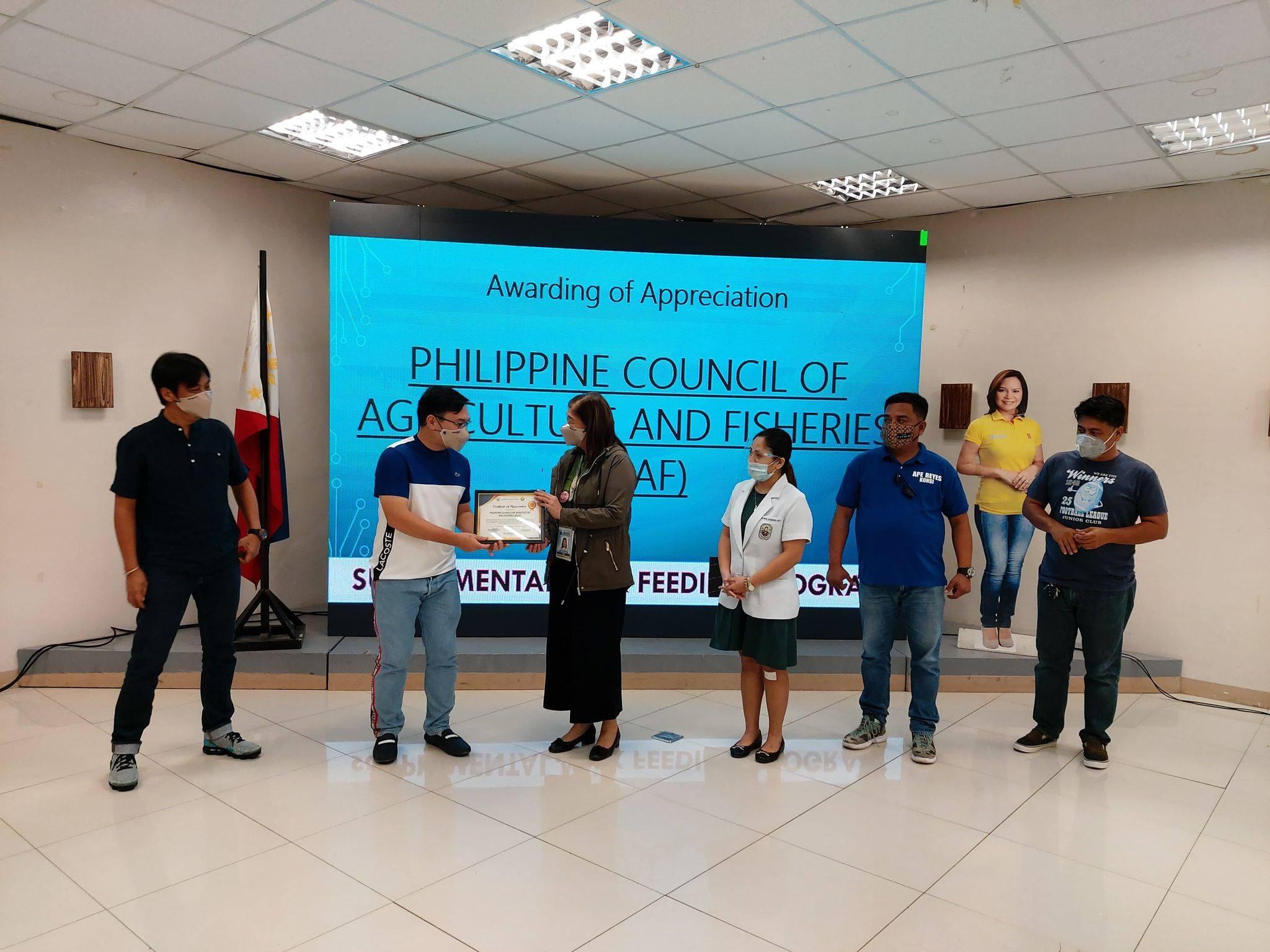
Special Projects. For the year, the Department’s special projects portfolio covers 64 projects amounting to Php211 64 billion Of these, 36 are financed through foreign grants and loans while 28 are funded by the government amounting to Php108 1 billion and Php 103 5 billion, respectively In addition, 27 projects were approved by the DA-Wide Project Clearinghouse System amounting to Php22 92 billion These projects were endorsed to the NEDA - Investment Coordination Committee, Development Partners, and other oversight agencies for evaluation and approval
The Special Projects implemented by the Department offer a wide range of interventions and services such as the conduct of research and development initiatives, the conduct of capacity building activities with technology transfer, development of decision support platforms, provision of rural infrastructure, support to agri-fishery enterprise development, and protection and rehabilitation of agricultural and coastal areas, among others. These initiatives are aligned and support the Department’s two-fold objectives of increased productivity and incomes toward a food-secure and resilient Philippines. Below are the highlights of accomplishments of two (2) of the Department’s high-impact flagship projects:
The PRDP is a World Bank (WB)-assisted project designed to establish the government's platform for a modern, climate-smart, and market-oriented agri-fishery sector This project is implemented in partnership with the LGUs and the private sector in providing key infrastructure, facilities, technology, and information that will raise farmers' incomes, productivity, and competitiveness in the countryside
In 2021, a total of 129 proponent groups (PGs) with 18,531 farmers and fisherfolk members benefited from 80 completed rural enterprise subprojects (SPs) nationwide In addition, 57 rural infrastructure SPs were completed that benefited 77,531 households These include 37 FMR, FMR with bridge, and bridge SPs with a total length of 260 kilometers and 182 linear meters; four (4) Communal Irrigation Systems (CIS) servicing 692 hectares; four (4) Potable Water Supply (PWS) Level 2 SPs; and 12 other infrastructure SPs (i e postharvest facility, warehouse, etc )
The SAAD Program was implemented to help alleviate poverty through increased food production and productivity by providing the appropriate technology, financing, marketing, and other support services in order to make the farmers and fisherfolk, especially members of people's organizations (POs), beneficiaries of DSWD's 4Ps and/or indigenous peoples (IPs), productive and profitable For the period, a total of 1,441 groups and 10,116 individuals benefited from the 613 livelihood projects implemented on rice, corn, high value, livestock, poultry, and fisheries. Social preparation activities and specialized training were conducted by the program to complement its livelihood interventions. The program is currently being implemented in 30 poorest provinces of the country.
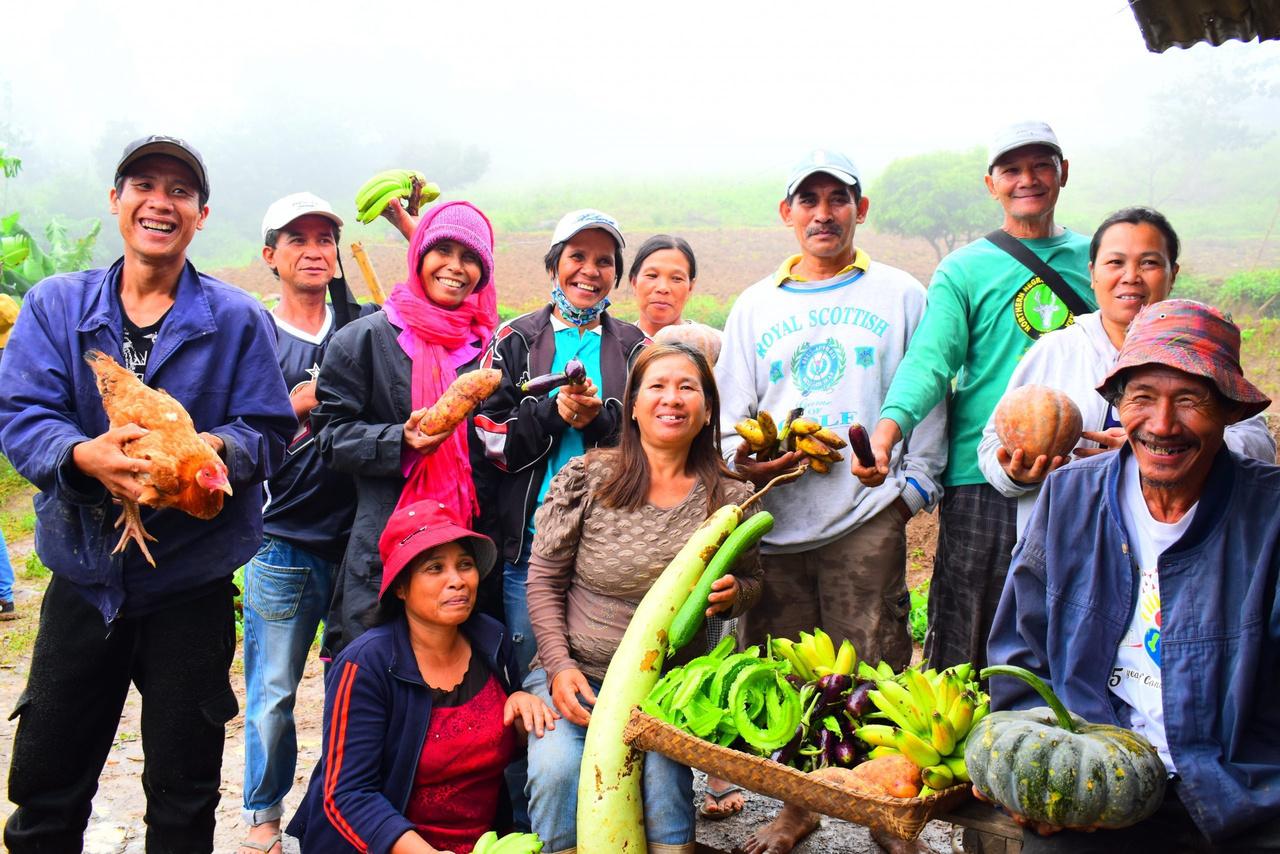
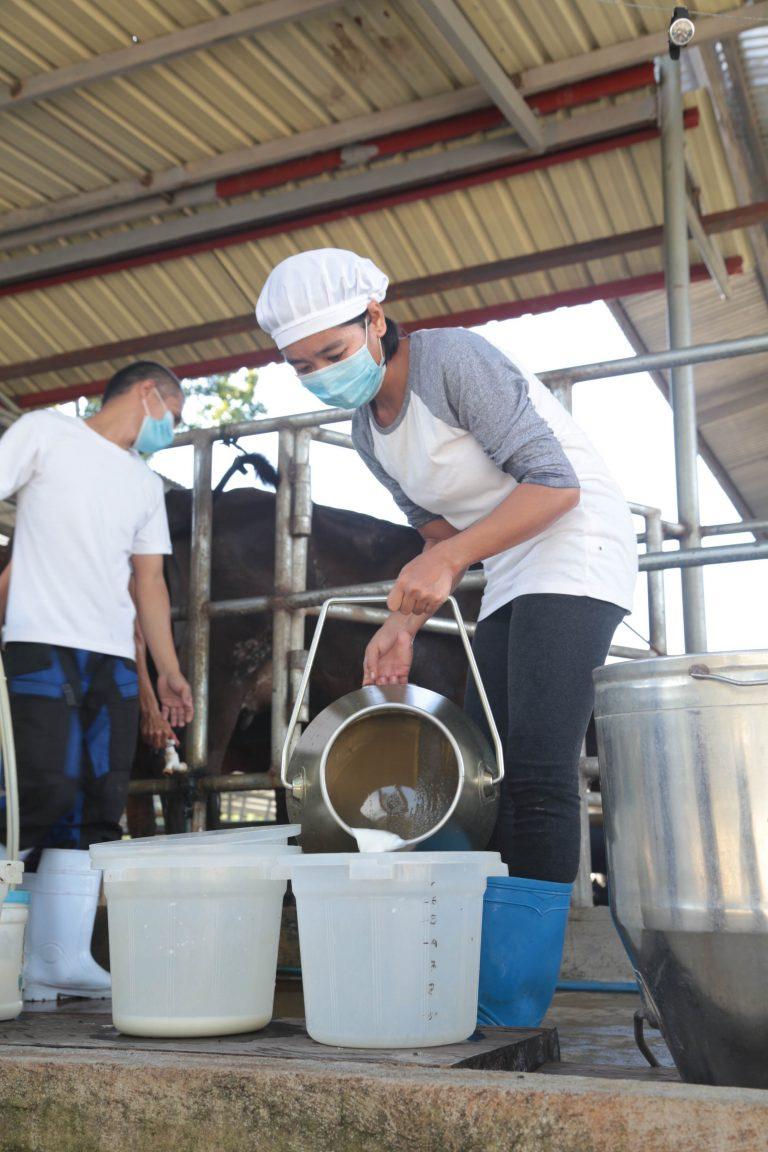
Digital Agriculture. The challenges that Philippine agriculture faced in the new normal validated the urgent need to develop innovative digital solutions to be more efficient, responsive, and modern in the ways DA is serving the country’s farmers and fisherfolk during this pandemic and beyond
The Department is committed to improving agri-fishery activities throughout the food value chain and logistics – from pre-production, during, and post-production stages, with the aid of these technological innovations In the same vein, the digitalization of agriculture would provide tools and information for decisionmakers to improve productivity, cost-efficiency, and timely delivery of services
To this end, the Department has developed market-related portals on agriculture & fisheries to generate and provide informative analyses of market trends and factors affecting the supply and demand for agri-fishery products.
Through its website ekadiwa.da.gov.ph, consumers are linked to producers and agripreneurs where they can conveniently order a wide range of fresh and affordable farm and fishery products through the E-Kadiwa online market platform. Currently, there are 27 accredited vendors under eKadiwa.

Moreover, DeliverE, a farm goods delivery platform aimed at helping Filipino farmers transport their produce to key markets and address urgent food security issues, was also launched.
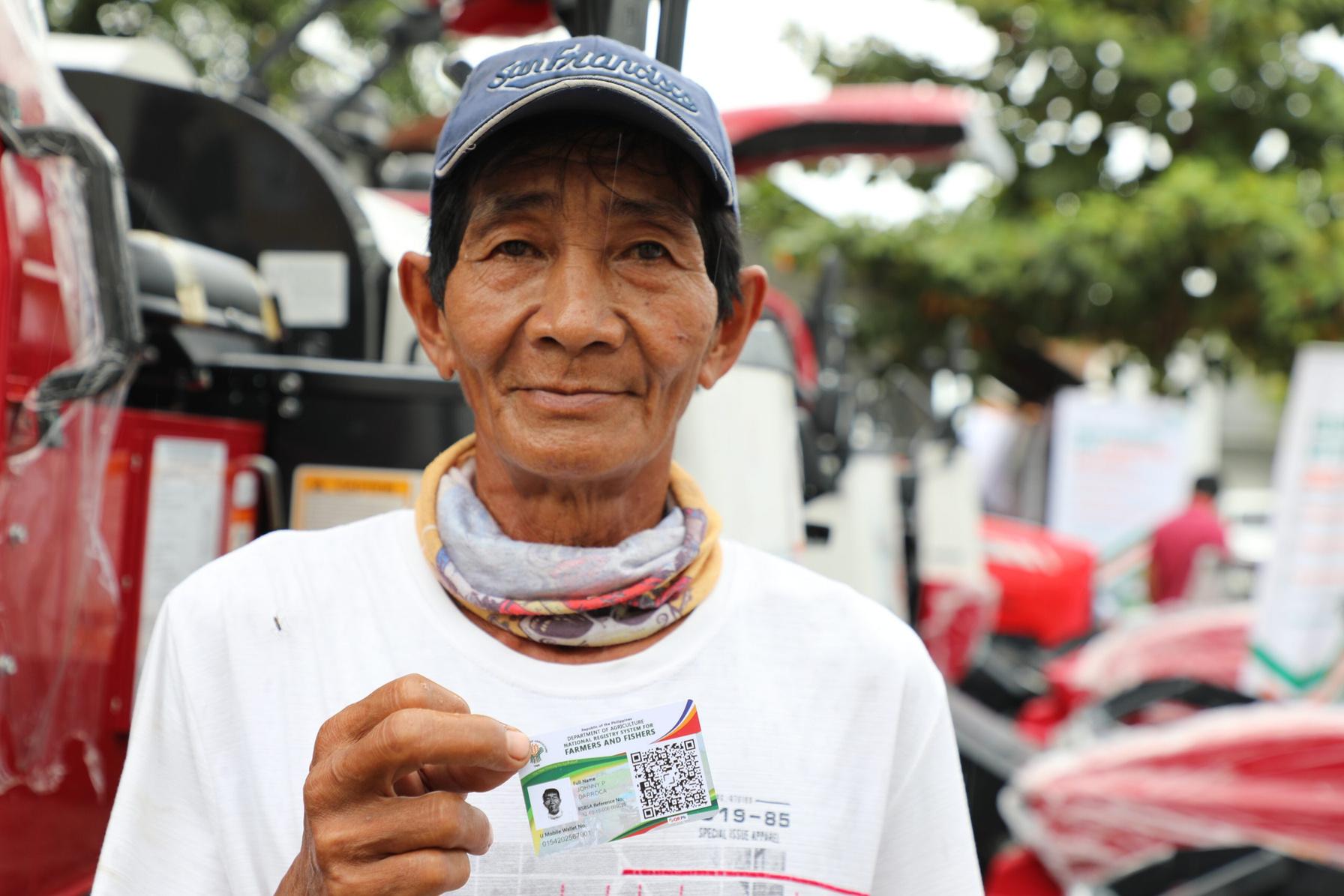
It serves as an end-to-end marketing solution linking producers with consumers Farmers generate more income by selling fresher fruits and vegetables to buyers so that less food goes to waste DA-ICTS is working on merging eKadiwa to the DeliverE platform The onboarding of Kadiwa sellers and ADC suppliers to the platform is already underway
Further, the system enhancements, map visualization, and regular system maintenance of the Farmers and Fisherfolk Enterprise Development Information System (FFEDIS) were completed this year The FFEDIS serves as an online data warehousing and reporting system that profiles and maps out the location of registered agri-fishery enterprises (producers and processors) with the goal of enabling them to strengthen their market linkages and integrate market development support services. As of December 31, 2021, a total of 2,309 agrifisheries enterprises nationwide are registered and approved in the system while 1,112 applications are being validated.
In addition, DA is also investing heavily in its transformative and enabling programs to set the scene for a digitalized agri-fishery sector. In line with this, DA is setting up the Farmers and Fisherfolk Registry System (FFRS) that aims to hasten the registration of farmers and fisherfolk in the DA’s master list of beneficiaries and clientele. Information gathered will be the basis of the Department in the provision and delivery of agri-fishery interventions. As of December 2021, a total of 4,981,000 farmer profiles were encoded in the system.
Professionalization. In line with DA’s professionalization pillar, the Department actively formed partnerships and linkages for internship programs and scholarship grants, and to promote agriculture as a viable formative and professional track among the youth, especially in rural areas
Internship Programs:
The DA implemented the Mentoring and Attracting Youth in Agribusiness (MAYA) Program across regions in coordination with DA-BAR to develop the youth into agri-fishery entrepreneurs or “agripreneurs” by training them as future leaders of the DA or their respective communities and LGUs. A total of 790 interns, who were stationed in 26 handling offices under the DA, completed the program. Of which, 89 interns were hired by DA, other government offices & private organizations.
A Youth Internship Program is also being implemented by the ATI. A total of 29 trainees were sent to Taiwan under the Young Filipino Farmers' Internship Program for agricultural and cooperative management training. In addition, a total of 109 interns were deployed and graduated under BAFE's Government
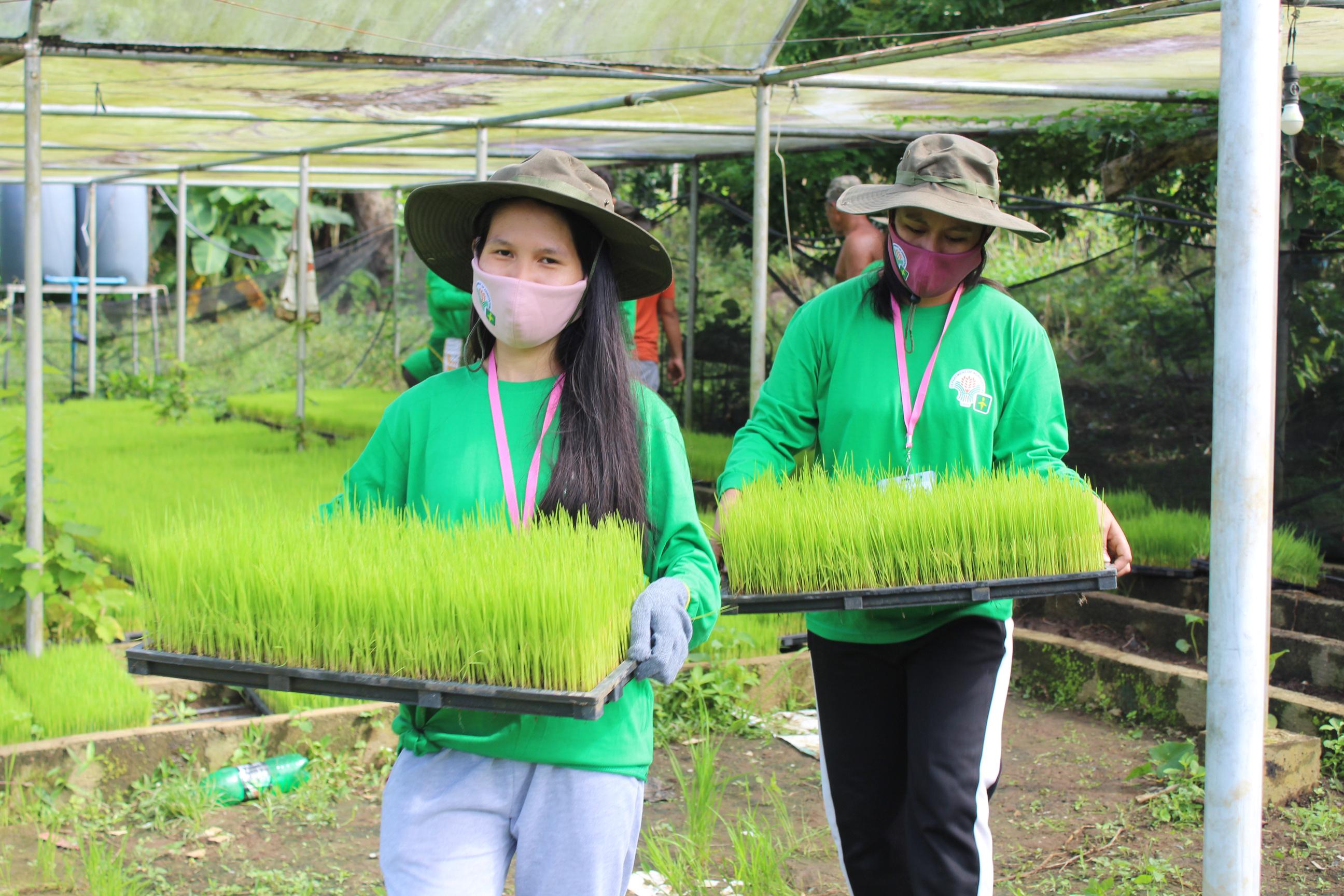
Internship Program for Agricultural and Biosystems Engineering Youth (GIP for ABE Youth), in collaboration with DOLE
Another set of 143 youth interns were approved under the program to assist DA operating units in the implementation of mechanization and infrastructure projects for 3 to 6 months
Scholarship Programs:
ATI implemented the Educational Assistance for Youth: Degree Courses in Agriculture and Agricultural and Biosystems Engineering (EasyAgri). The program supported a total of 223 scholars in the 2nd Semester of AY 20202021 where 214 scholars successfully completed the semester. Currently, there are 223 scholars enrolled and started attending their classes for AY 2021-2022.
Meanwhile, the scholarship program under SIDA has 234 SRA scholars and 454 CHED scholars for AY 2021-2022. These are children or dependents of sugarcane industry workers or small sugarcane farmers and are taking up graduate or postgraduate courses in agriculture, chemistry, engineering, or other relevant courses.
Additionally, a total of 2,248 scholars were accepted under the Agricultural Competitiveness Enhancement Fund’s (ACEF) scholarship component for AY 2020-2021 Of these, 27 scholars have already graduated while 2,221 scholars are still being supported by the program Under the law, 10 percent of the total ACEF allocation must be set aside for the comprehensive and attractive grant-in-aid program for agriculture, forestry, fisheries, and veterinary medicine education to promote agrifishery development
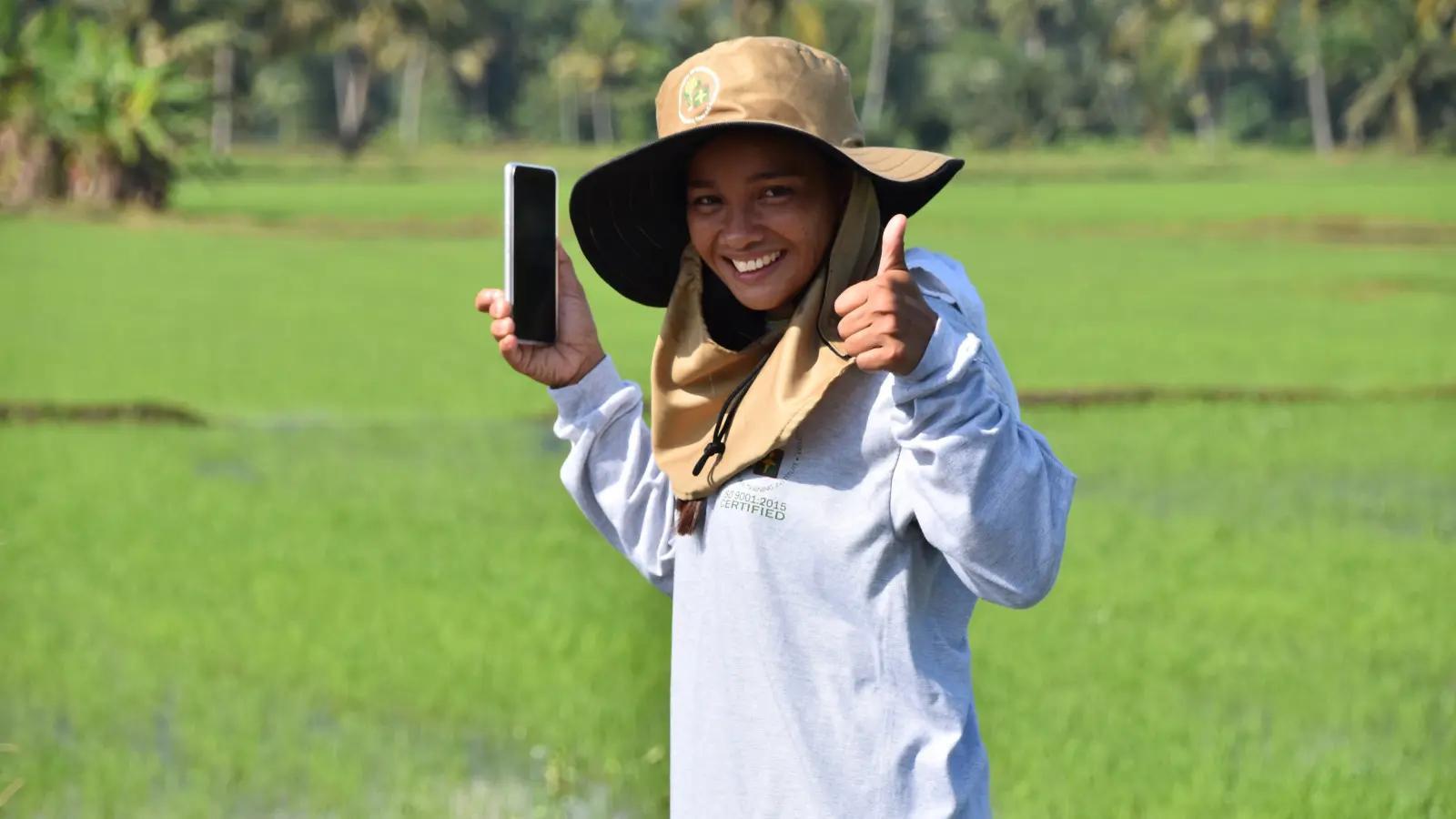
Other programs for the youth:
Under the Kabataang Agribiz Program or Young Farmers Challenge Fund, a total of 1,248 youth across the country were declared provincial winners. A total of Php71.4 million was awarded to the program beneficiaries as start-up capital for their proposed agribusiness ventures.
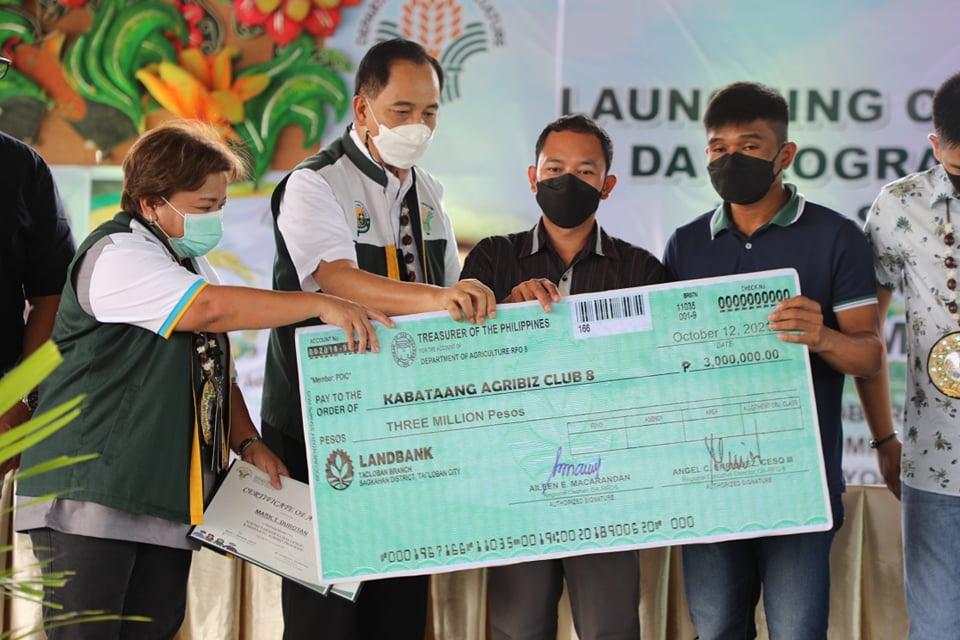
In June 2021, ATI launched the Binhi ng Pag-asa Program (BPP) to encourage the youth to engage in agriculture and fishery by capacitating them with entrepreneurial skills training as well as leadership and values formation training. As of December 2021, a total of 98 training activities under the program were conducted which benefited 2,251 youth participants
Moreover, 19 young farmers will undergo onfarm training for 11 months under the Young Filipino Farmers Training Program in Japan (YFFTPJ) The YFFLTPJ is a yearly training program managed by the ATI, Japan Agricultural Exchange Council (JAEC), and the Japan Ministry of Agriculture Forestry and Fisheries (MAFF) The ATI and JAEC work hand-in-hand to develop deserving young Filipino farmers to become farmer leaders and agri-entrepreneurs
Gender Equality and Social Inclusion. The DA, through its Gender and Development Focal Point System and Gender Equality and Social Inclusion (GESI) Office, advocated for the further mainstreaming of gender and social inclusion concerns in the planning, design, implementation, monitoring, and evaluation of all DA programs and projects. The Department’s gender and socially inclusive programs and policies are of paramount importance in increasing agricultural productivity, eradicating rural poverty, constructing an equitable economy, and sustaining development. These initiatives help address systemic issues that discourage the participation of women and other marginalized sectors such as Persons with Disability (PWD), and the Indigenous Peoples (IPs), in agriculture and agribusiness such as deprived access to farm inputs, credit, market know-how, and land ownership.
In 2021, a total of 313,901 women and 4,009 women groups were provided with access to interventions under DA’s various programs and projects, such as capacity building activities; farm inputs like seeds, planting materials, and fertilizers; agricultural machinery, equipment, and facilities; credit; and market-related assistance. In addition, a total of Php19.83 million in loans were released to 286 women borrowers under ACPC's Agri Pinay Program – a special credit window that aims to provide financial assistance to women in agriculture and agribusiness.
The DA Search for the Outstanding Rural Women is an annual undertaking of the Department that gives due recognition to rural women who showed excellence in their field endeavors and have made both outstanding achievements in agri-fishery development and significant impacts on the lives of their fellow rural people The event puts a spotlight on the success stories of Filipina farmers and fishers to focus public attention on them as role models for women empowerment
This year, Region V nominee Cristina Torreda was hailed as the national winner. The Catanduanes native has accumulated years of
experience working in the food and hospitality service industry before going full-time in agriculture at the age of 25
Now at 28, Cristina is a farmer-entrepreneur and owner of Cristina's Strawberry Farm, a farm tourist spot in the Bicol Region She also advocates for the production of non-typical but safe and nutritious food, as well as the creation of job and livelihood opportunities for farm youth and rural women

Torreda is the youngest nominee this year She hopes to inspire more people, especially the youth, to partake in agriculture through her influence as this year’s National Winner
This year’s awardees also include Annette Patdu of Region III (First Runner-up); Mercedita Cubar of Region VI (Second Runner-up); Gerlie Vedra of Region X (Third Runner-up); and Lilibeth Arce of Region XIII (Fourth Runner-up).
Kabuhayan, Kaunlaran ng Kababayang Katutubo (4Ks) Project:
The Department intensified measures to support Indigenous Cultural Communities/Indigenous Peoples (ICCs/IPs) through the implementation of the Sustainable Agriculture and Improved Farming Systems in Upland Communities for Indigenous PeopleKabuhayan, Kaunlaran ng Kababayang Katutubo (4Ks) Project.

It aims to develop vast ancestral domains that remain unutilized and unproductive by providing ICCs/IPs with agricultural and fisheries-related livelihood, investments, and services that are compatible and tailored fit to their Indigenous Knowledge System and Practices (IKSP) The project likewise aims to preserve innovations, skills, practices, values, and beliefs that locals have accumulated and developed throughout the years and over generations as they live in a particular environment
In order to help ICC/IP beneficiaries maximize the use of the ancestral agricultural lands and turn it into productive, profitable, self-sustained, and developed resilient agricultural enterprises, the Department conducted 190 capacity building, and 177 community organizing activities as part of its social preparation activities
This year, a total of 93 ICC/IPs from 103 ancestral domains in 38 provinces benefited from the completion of 101 livelihood and enterprise sub-projects Of which, 62 subprojects were implemented in Luzon, 12 in the Visayas, and 27 in Mindanao A total of 40 subprojects are still ongoing in these areas
The interventions provided, which are valued at Php95 million, include the provision of agricultural inputs (seeds, planting materials, fertilizer, and tools); distribution of poultry and livestock; provision of farm and post-harvest machinery and equipment; construction of production and post-harvest facilities; and conduct of technical training Major commodities supported by the project in these target communities are heirloom rice, corn, coconut, sugarcane, coffee, assorted fruits, and vegetables as well as native animals.
The project caters to organized groups, whether registered or unregistered, provided that they are recognized by the National Commission on Indigenous Peoples (NCIP) as a legitimate IP Organization.
Among the indigenous groups that benefited from the project are Kalinga, Ibaloi, Agta, Aeta, Dumagat, Mangyan and Tagbanwa tribes in Luzon; Akeanon, Iraynon and Ati tribes in Visayas; and Maranao, T’boli, Blaan and Manobo tribes in Mindanao, among others.
The Plant, Plant, Plant Program was initially launched in 2020 as the Department’s centerpiece initiative to address the challenges brought by the COVID-19 pandemic to the local food systems Following its success, the government is accelerating a comprehensive set of proactive measures and interventions under the Plant, Plant, Plant Program - Part 2 to mitigate and cushion the lingering effects of the pandemic compounded by global economic challenges causing disruptions to the global supply chain, high logistics costs, high fuel prices, climate change impacts, and presence of transboundary diseases with the net result of increased food prices driving high food inflation
The proposed Plant, Plant, Plant Program 2, which is targeted to be implemented in 2022, will serve as the government’s flagship program on food security with a budget of Php24 billion comprised of the following components: Php20 billion for fertilizer subsidy, and Php1 billion each for urban and peri-urban agriculture, local feeds production, aquaculture and mariculture fisheries, and food mobilization
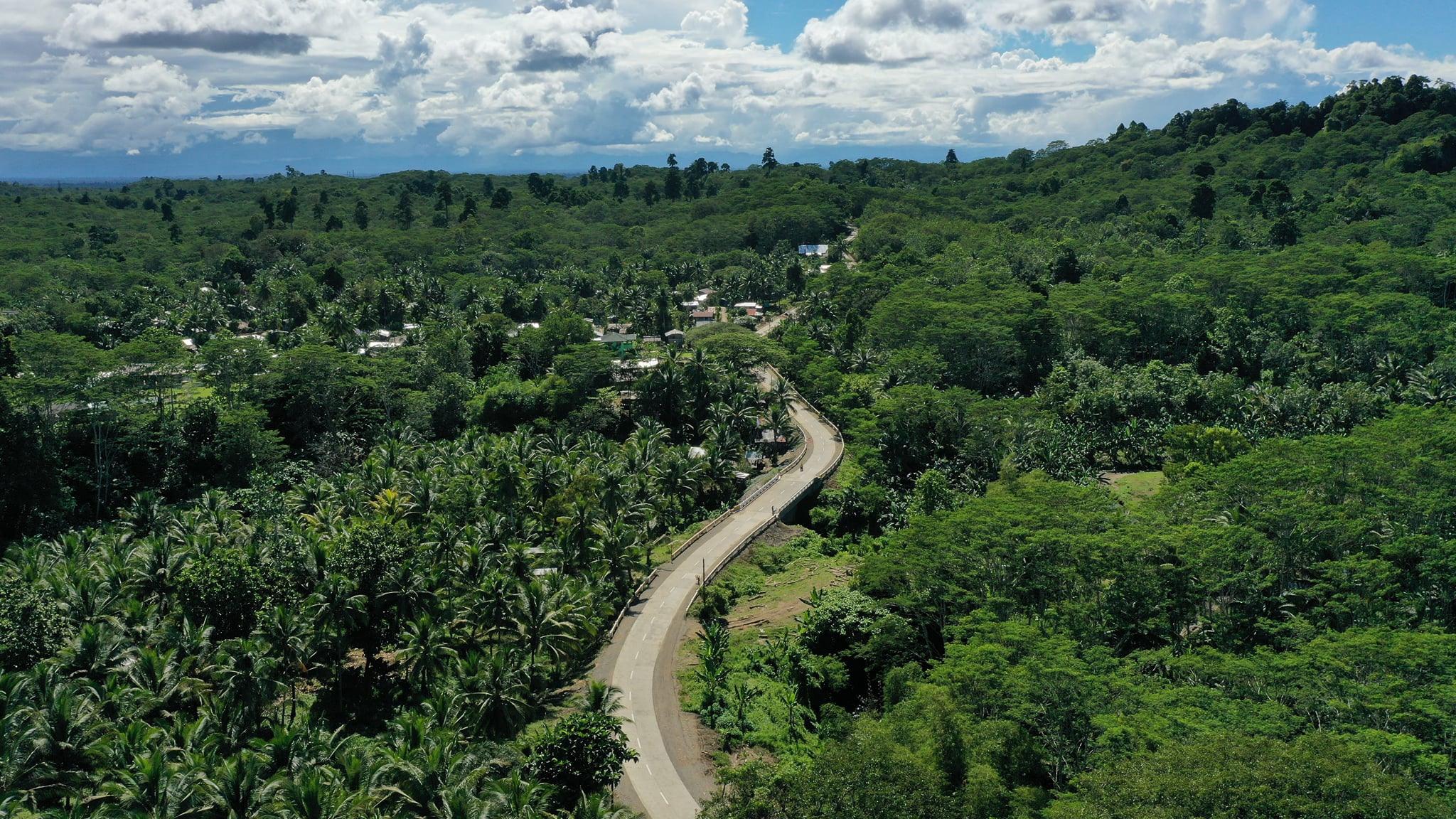
2021-2030
Next year, the DA is set to launch the National Agriculture and Fisheries Modernization and Industrialization Plan (NAFMIP) 2021-2030 which will serve as the 10-year modernization and industrialization plan for the agriculture and fisheries sector. The NAFMIP, which is designed to be a strategic and directional plan, will lay down the overall development thrusts for the sector, and guide government and private sector investments to reinforce the goal of a food- and nutrition-secure Philippines with empowered and prosperous farmers and fisherfolk. Further, NAFMIP shall aim to inspire the full range of private and public stakeholders
to take coordinated, cohesive, and determined actions, and to galvanize sector-wide public and private investments and resources to support the shared vision, objectives, and concerted action
The existing draft of the NAFMIP, which is still subject to further refinement and consultations with stakeholders as well as approval of the DA management, is built upon the tenets of the Integrative Food and Nutrition Security Paradigm which draws inspiration from the United Nations Food Systems Approach and the Philippine Food Security Development Framework As a general guiding framework, the NAFMIP also endeavors to enable the country to elevate its goal of food security to food sovereignty – a global movement adapted to the Philippines context which places local producers, distributors, and consumers in control of food systems. It aims to mobilize collective action toward empowering stakeholders by giving them choices and opportunities for improved health, increased incomes, and a healthier planet.
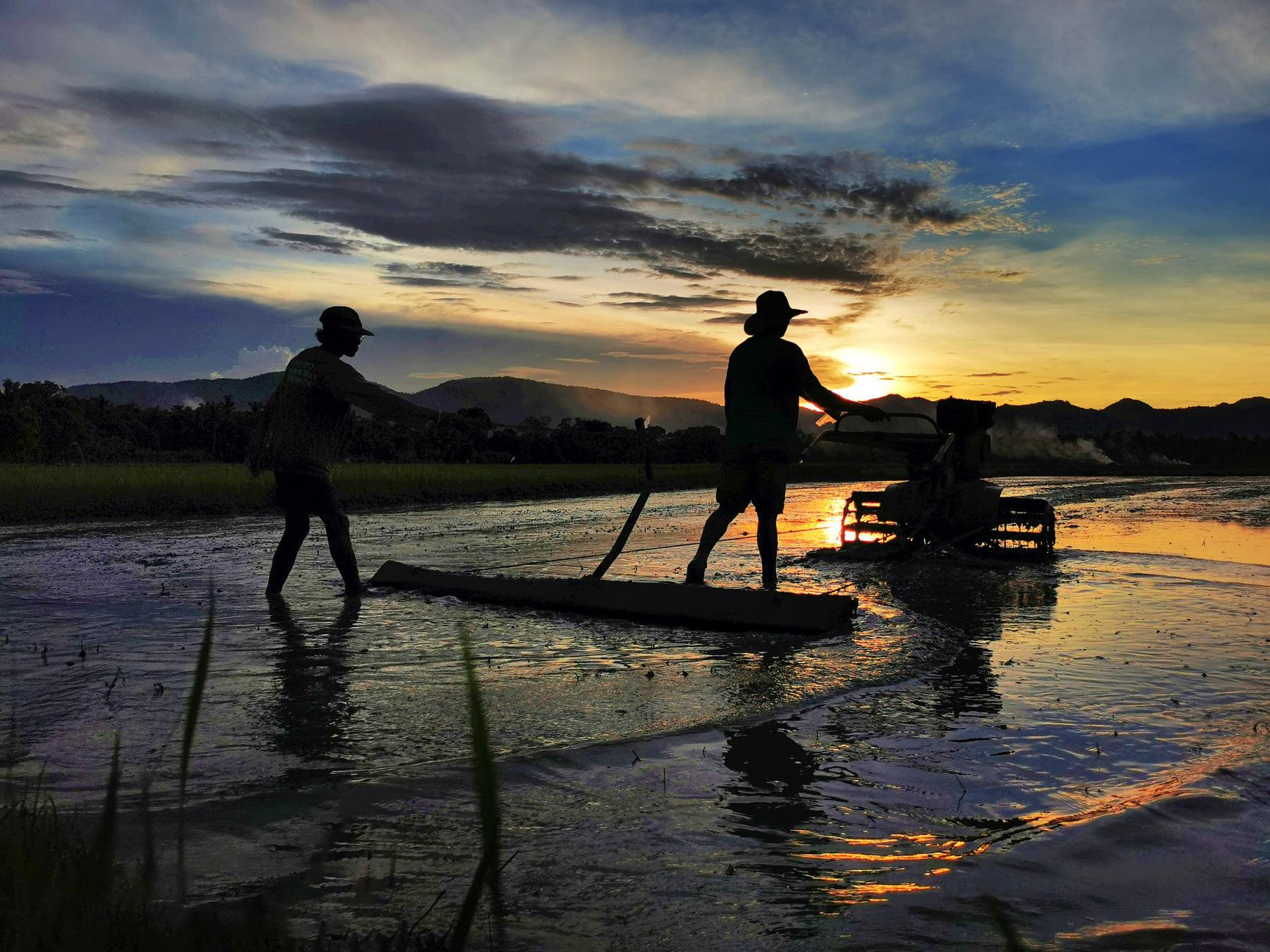
NAFMIP will comprise three (3) closely interrelated component plans, namely:
This will present concepts, strategies, and illustrative programs, projects, and activities reflecting the shift away from single commodity planning, budgeting, and implementation, and tap viable mixes of crops, livestock, poultry, and fishery commodities whether food or non-food, plus expand agri-fishery activities to cover processing and other post-production segments of value chains in order to diversify small farmer and fisher income and employment opportunities.
This will highlight the spatial role of each region in the envisioned transformation process leading to agri-industrialization and modernization within the next 10 years, based on natural and human resource endowments.
This will present the system for a “Centrally-supported Decentralized Services Delivery,” and guide the enhanced and better-coordinated performance of the steering roles of DA and other NGAs, and the complementary rowing functions of the LGUs, in light of the Mandanas Ruling, to ensure that the specific support needed per segment along the value chain of priority commodities are adequately provided.
Indicatively, the NAFMIP implementation period is presented in three (3) interlocking and not mutually exclusive phases, namely, the pandemic recovery phase, growth-inducing phase, and resilience-building phase, to guide the sequence and types of investments and interventions Recognizing that agriindustrialization requires continuity, the Plan is also designed to be a trans-administration plan that will transcend political administrations in order to better support the fundamental lifelong aspirations of various stakeholders
On June 25, 2021, DA has issued Special Order No 432 creating the Committee on Devolution and, subsequently, issued Special Order 513 for the creation of the Task Force on Devolution of the Department of Agriculture that will oversee and facilitate the formulation and submission of the DA Devolution Transition Plan (DTP) in compliance to Executive Order 138 series of 2021 and in line with the implementation of the Mandanas-Garcia Supreme Court Ruling.
The Department has already submitted the initial draft of its DTP and corresponding annexes to DBM and is currently in the process of enhancement and finalization based on the comments provided by oversight agencies and inputs from DA Operating Units and other stakeholders.
The list of central versus local functions gives a glimpse of the intricacies involved in delineating but at the same time converging central and local services delivery once the proposed further devolution takes full effect. Functions devolved to LGUs include:
Enforcement of policies, regulations, and product standards;
Provision of production support services;
Enforcement of policies, regulations, and product standards;
Provision of production support services; Credit, insurance, and financing facilitation; Linking small farmer/livestock raisers/fisher cooperatives and associations to Agriculture and Fishery Industrial Business Corridors (AFIBCs) and other markets;
Capacity development of farmers, livestock raisers, and fisherfolk;
Maintenance and operation of production and post-harvest infrastructure, facilities, machinery, and equipment;
Institutional strengthening of small farmer/livestock raiser/fisher cooperatives and associations; and
Conduct of research, extension, and training for development (RETD)
Non-devolved services under the steering role of DA and other NGAs include:
Formulation of policy, plans, systems, advocacy, and results-based monitoring and evaluation (RBME);
Development of regulations and product standards;
Development of credit, insurance, and financing facilities;
Agribusiness and market development (local and international);
Promotion of private investments and organization of agri-fishery industry organizations;
Construction and establishment of infrastructure and facilities for commodity systems;
Capacity development of LGUs and private sector; and
Development of transformative R&D and ICT-enabled agriculture and fisheries.
On the other hand, a proposal to transfer the oversight function over the National Irrigation Authority (NIA) back to the DA was submitted to the Office of the President. Irrigation is a vital component in attaining agricultural productivity, especially when complemented with proper crop management practices and strategies, the DA believes that transferring NIA back to DA will support better integration and enhance coordination to maximize available resources to improve productivity of Philippine agriculture
This is consistent with the priority strategy under Chapter 8 of the Updated Philippine Development Plan 2017-2022, particularly on strengthening the coordination of government agencies to ensure the complementation of plans, programs, and projects to develop the agriculture sector The transfer would support the accelerated development of modern and climate-resilient irrigation facilities which are critical in implementing DA’s reform agenda to achieve a modern and industrialized Philippine agriculture
This move was also fully supported by DOF and NEDA citing that the transfer would ensure stronger and better complementation of interventions and activities to develop the agriculture sector By making NIA an attached agency of the DA, both agencies will be better able to fulfill their respective mandates and deliver better outcomes for the shared benefit of the Filipino farmers


As of December 31, 2021 (Amount in Thousand Pesos) Source: DA-Financial and Management Service (FMS)
*Includes allocation for Pension and Gratuity and Other Personnel Benefits, Special Purpose Fund, Calamity Fund and Unprogrammed Fund, among others
As of December 31, 2021 (Amount in Thousand Pesos)
Source: DA-Financial and Management Service (FMS)
*Funds sourced from agency regular budget (attributions and refocused) and additional funds as per RA
NOTE: Numbers may not add up due to rounding **Includes funds for the Rice Resiliency Project (RRP) I &
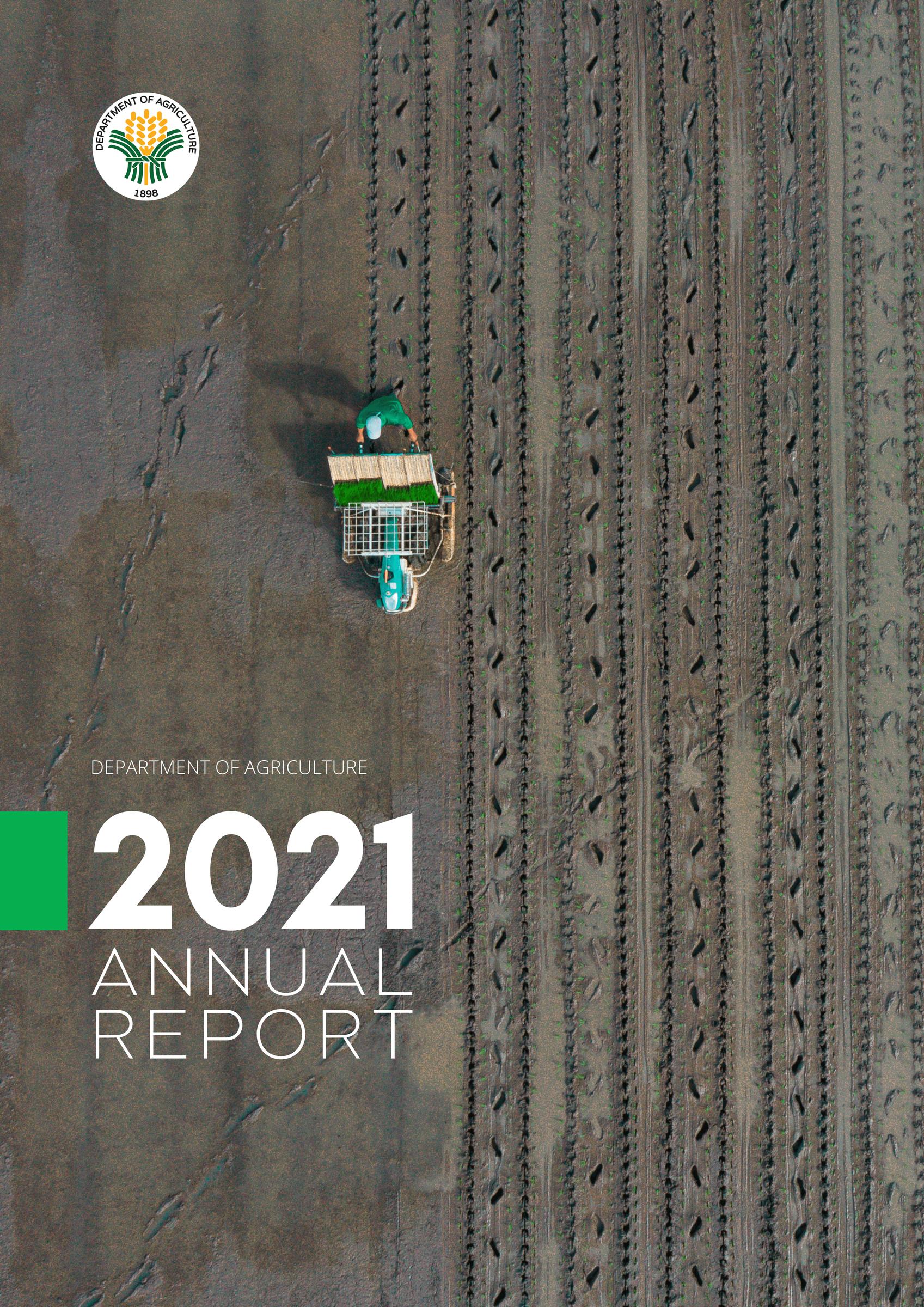 Photo Credit: Jayson C. Berto Development Communications Division DA-PhilRice
Photo Credit: Jayson C. Berto Development Communications Division DA-PhilRice
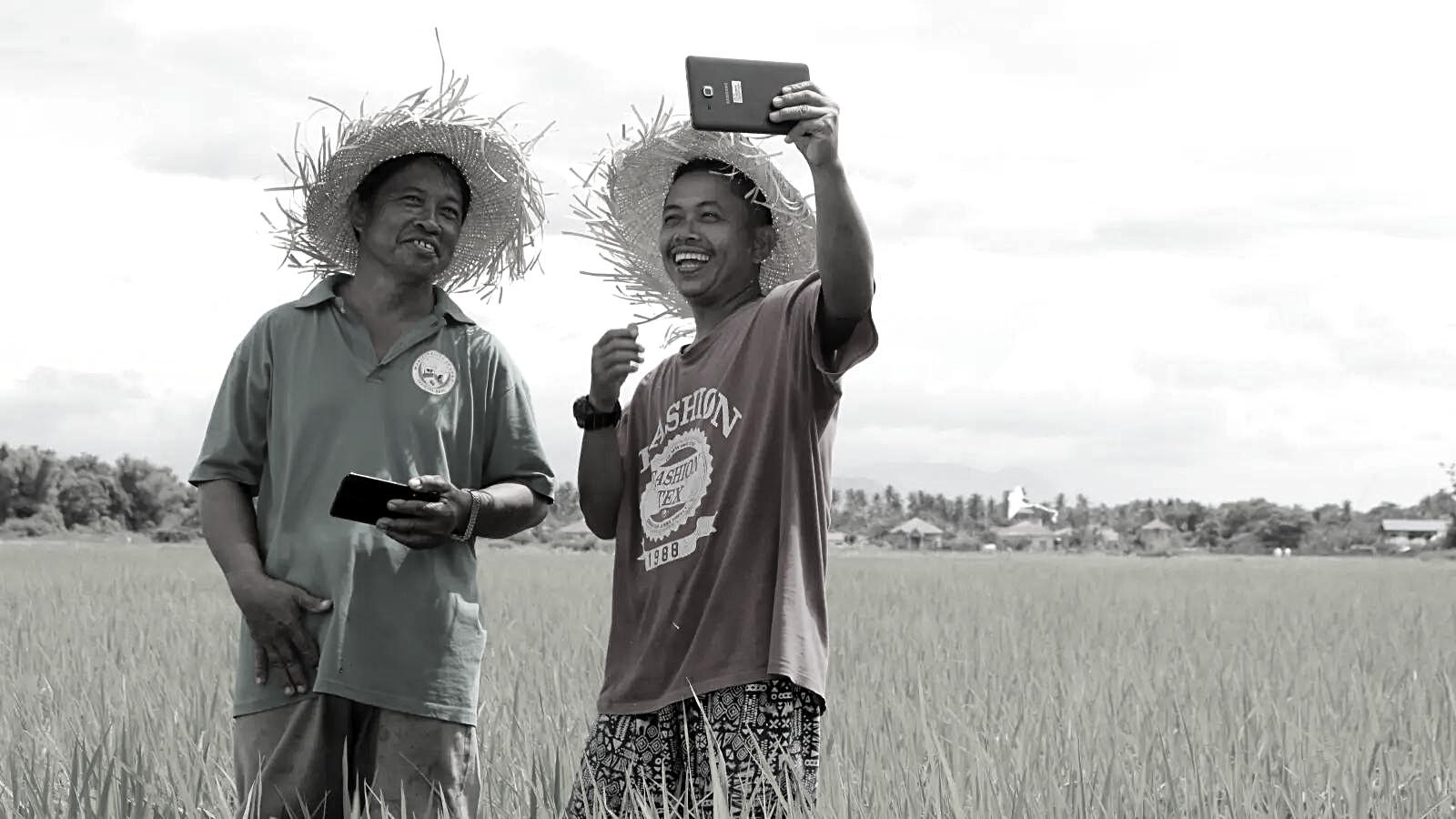


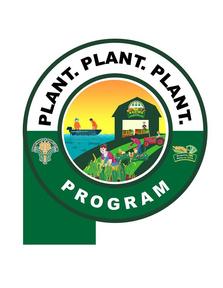
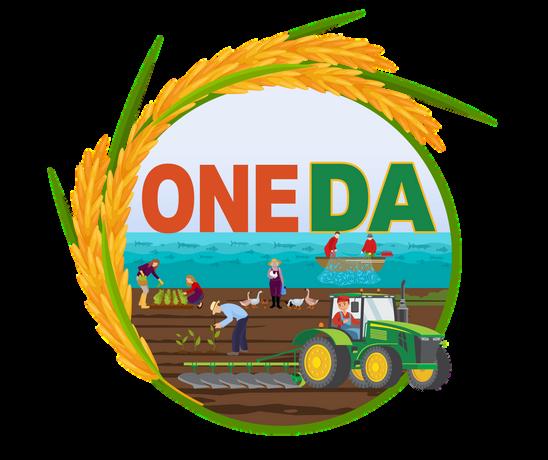
"AfoodsecureandresilientPhilippineswithempoweredandprosperousfarmersandfisherfolk"